Note: This page is a constant work-in-progress, with new information and corrections being made all the time. To search on the “1960-1999 Timeline” for any particular year, person, event, business, shop etc, simply press CTRL+F and type in the thing you are looking for in the small box that will appear on the screen.
1960
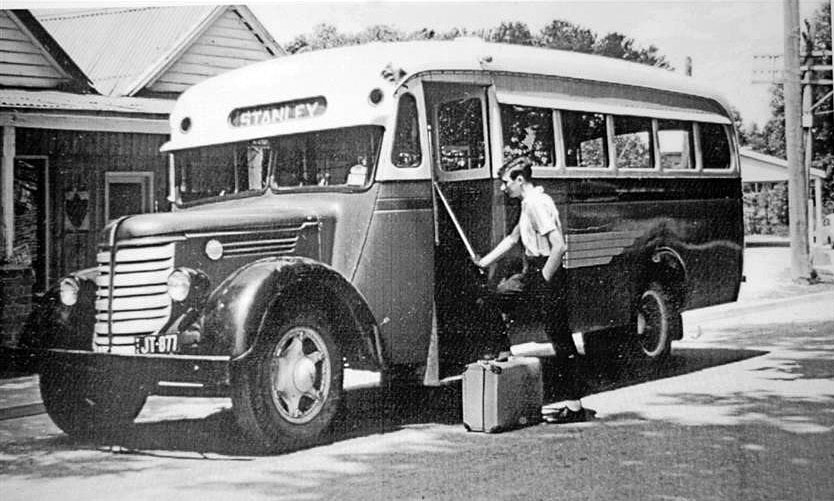
49-year-old Percy W. Hill from Stanley is running his regular Bus Service between Beechworth and Stanley, a road travel distance of 6.2 miles (10 km). Hill had been granted his ‘Carrier’s Licence’ in Beechworth in July 1955.
1960 – Dec 26

On Boxing Day, the first ‘Golden Hills Festival’ is held, organised and promoted by shire engineer R.E. Carter, with major support from the newly formed Beechworth Lions Club. From 1966 it becomes known as the ‘Golden Horseshoe Festival’.
1961 – Sep
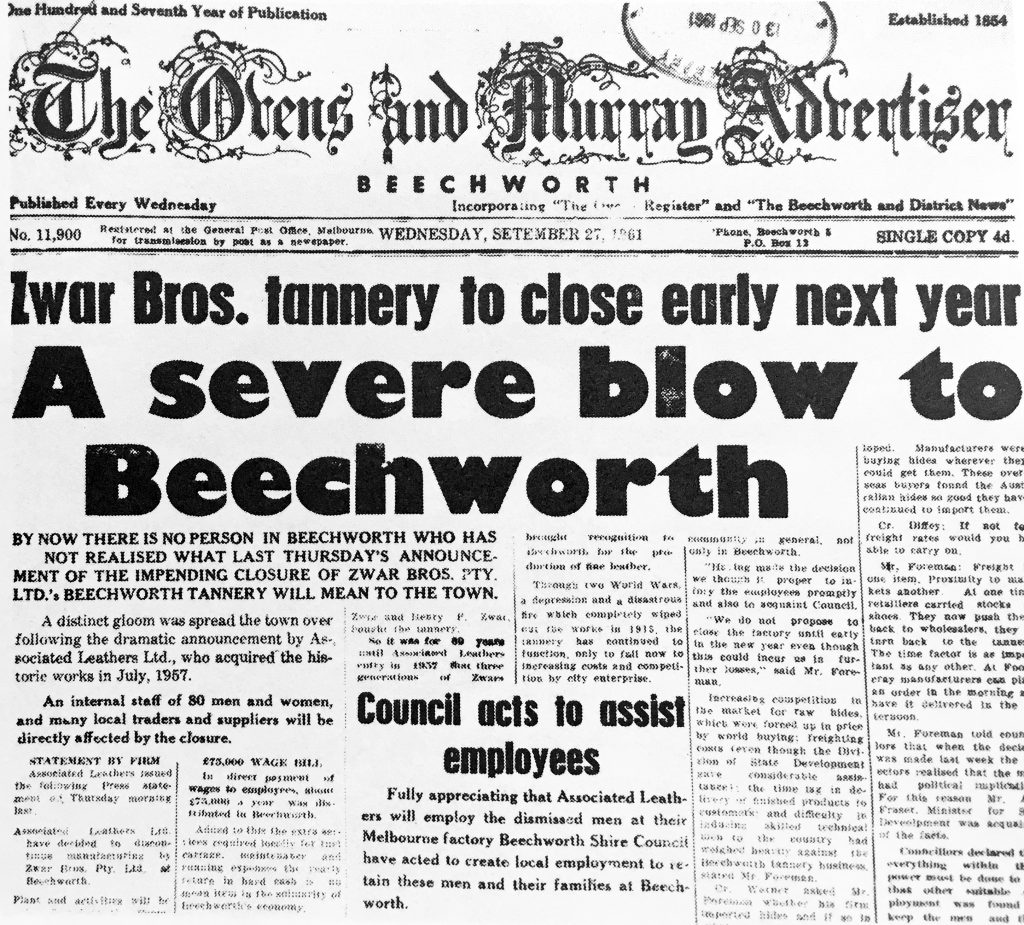
Despite the agreement of Michaelis Hallenstein and Co and their subsidiary Associated Leathers Ltd to keep the Zwar Bros Tannery operational in Beechworth, they make the announcement that, after 103 years of operation, the tannery is to close. At the time of closure, the output from the Tannery has fallen dramatically with the remaining workers only processing 250 hides per week for women’s fashion, leathers and glue. The loyal staff of 80 men and women are dismissed, with some given the option of transferring to the Footscray Tannery of Michaelis Hallenstein and Co. The buildings and fittings are sold both privately and at auction, with the remnants sold to a wrecker. The land is sold to an adjoining landholder. Today only the eye-catching 100-foot brick chimney remains. Visible from Malakoff Road, heading towards the new Beechworth Correctional Centre.
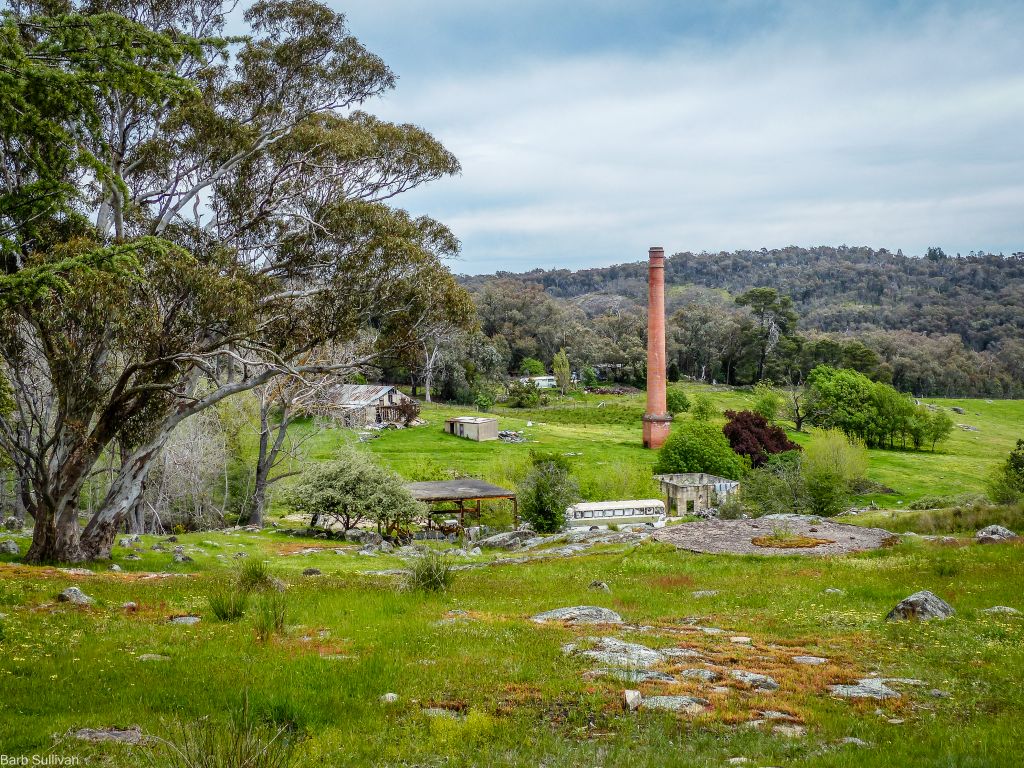
| The closure is devastating for Beechworth, particularly as it comes just four years after the new owners had accepted the ‘moral agreement’ of maintaining the Tannery in Beechworth. |
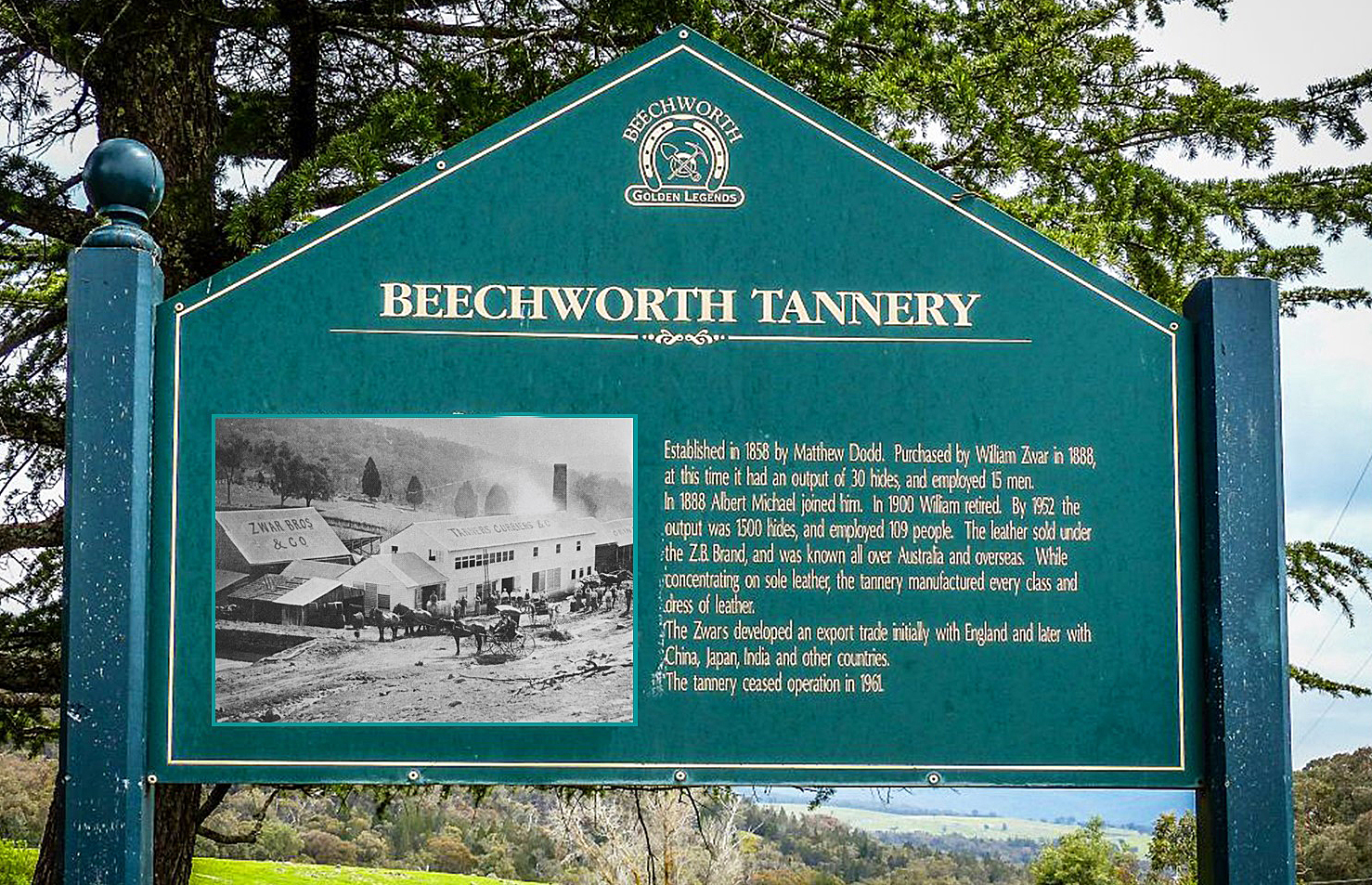
1961 – Sep
Directly following the demise of Zwar’s Tannery, Footrest Shoes also closes its Beechworth factory, letting go of 36 local female employees, leading to more unemployment woes in the local community.
1961 – Sep

Playing in the Ovens & King Football League, the Beechworth Football Club win the Premiership under coach Bill Comensoli. New coach of the Bombers Mick Brenia will lead the team to victory again in 1974, and once more in 1979 under coach Rob ‘Tree’ Forrest.
1961

At the age of 80, Beatrice Ennals finally retires from the popular Ennals Grocery Store at 30 High Street and hands the business over to her daughter Margaret and her husband Dick Galbraith. After Dick passes away, it is taken over by Dick and Margaret’s son Bob Galbraith.
| Born in 1881, Beatrice Ennals (who will be widowed in 1915) works at the store for many years when it is run by the Ladson family (as ‘Ladson’s Cash Grocery Store’). Established in 1882 by Arthur Ladson, it is eventually taken over by Alfred’s son Arthur Ladson who employs Beatrice, and eventually sells the entire business to her. |
1961
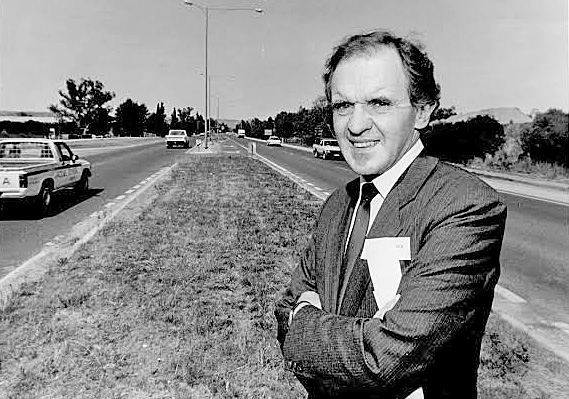
35 km from Beechworth, the busy causeway over Wodonga Creek on the border between Wodonga and Albury – originally known as ‘The Wodonga Flats’ – is officially named the ‘Lincoln Causeway’ in honour of 28-year-old Mervyn George ‘Merv’ Lincoln. Raised in Wodonga, in March 1957 the middle-distance Olympic runner had become the third Australian in the world to break the ‘4 Minute Mile’, running the distance in 3 minutes 59 seconds. Merv’s first running coach is well-known Albury identity ‘Chooker’ Elkington and Merv will go on to represent Australia three times … at the Olympic Games in Melbourne in 1956, the Commonwealth Games in Cardiff in 1958 and the Rome Olympics in 1960.
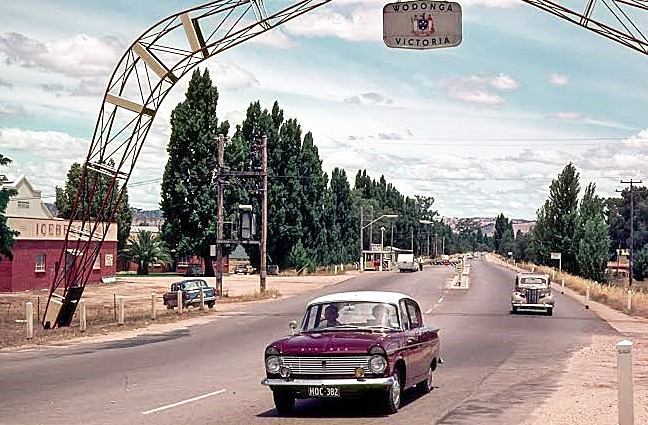
| Following the Rome Olympics in 1960, Merv Lincoln retires from competitive running and takes up an academic career, achieving a ‘Bachelor of Commerce’, a ‘Diploma of Education’ and ‘Master of Business Administration’ degree before receiving a ‘Doctorate of Philosophy’ in 1983 from the University of Melbourne. He will then become a lecturer at the same University. Dr Mervyn Lincoln will pass away on May 1st 2016 aged 82. |
1961

After running a successful General Store in the nearby town of Stanley since the late 1940s, Mervyn John Sinclair establishes Beechworth’s first Supermarket on Ford Street. After a few years, the Foodworks Supermarket will outgrow its single shop and Merv and Margaret ‘Meg’ Sinclair will take over an adjoining shop. By 1967 the design department of Foodlands is working on plans to combine the two shops into one modern supermarket … at the same time as the Shire Council and the National Trust are working on plans to preserve and restore the whole historic area of Beechworth. The Sinclair family embrace the idea of the preservation of Ford Street and abandon their plans for a modern façade and agree to create a new ‘1870s-look’ façade which will remain in harmony with the surrounding historic streetscape., while building a modern supermarket inside. It will open – with a grand ceremony – in December 1968. (see further entry below)
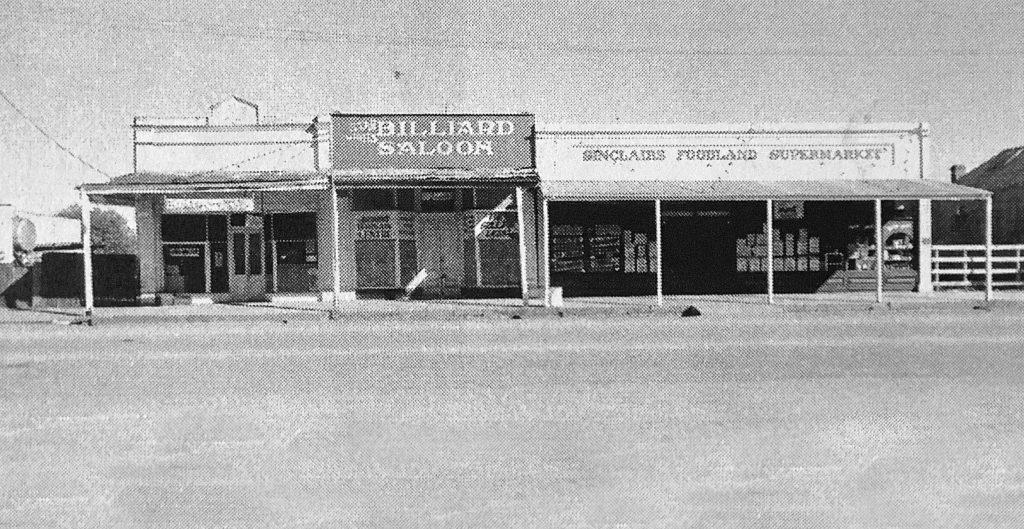
1961

Graeme Smart, who has been running his own taxi service in Beechworth since 1954, purchases the taxi licence of Tom Collie and his son Noel Collie, expanding his growing fleet of taxis and private hire cars in the town.
| Over the years, many others in Beechworth will own taxi licences including Frank Jarvis, Tom Parkinson, Leo Kavanagh, Harold Colin McIntosh, along with Wally Price and his nephew Laurie Price. Wally Price also runs a popular Beechworth bicycle shop. |
1962 – Jan 3

The first ‘Standard Gauge’ freight train travels straight through from Melbourne to Sydney when the railway gauge between the two cities is finally converted to one matching gauge – ‘Standard Gauge’ – saving up to 24 hours per journey! This comes about after years of two different gauges on Victorian and New South Wales railway lines, meaning all trains have to stop at Albury. On April 14th the Spirit of Progress will make its debut on the ‘Standard Gauge’ tracks now linking Melbourne, Sydney and Brisbane. By June 30th a weekly service of between 30 to 40 passenger trains – the Spirit of Progress, the Southern Aurora and the Intercaptial Daylight – run on the route, some express, and others stopping at places like Benalla, Wangaratta and Chiltern. The line to Beechworth is, unfortunately, ‘Broad Gauge’.

1962 – Mar
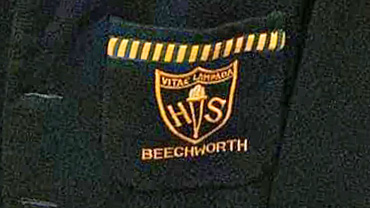
With 248 students, Beechworth High School moves into new purpose-built classrooms near the Ovens District Hospital on Sydney Road, with an entrance at 85 Balaclava Road. One of the first new staff members hired is Mary Martina as the School Librarian. The school had previously been based at the Beechworth Primary School which had become a Higher Elementary School in 1912, before being raised to Beechworth High School in 1959. Due to increasing secondary school student numbers and lack of space, the new location is found for the secondary students. Today the school is known as Beechworth Secondary College.
| The Beechworth High School motto is ‘Vitai Lampada” which translates as “The Torch of Life” and symbolizes “the duty to uphold values and pass them on to future generations”. Henry Newbolt’s 1892 poem “Vitai Lampada” (“The Torch of Life”) includes the phrase “Play Up! Play up! And play the game!” often used in schools as a rallying cry for their sporting teams. |

1962

The Beechworth Scout Hall is erected in Centennial Park – the grounds of the former Ovens Goldfields Hospital at 13 Church Street. The Beechworth Scouts had commenced in 1925, holding their scout meetings in various locations throughout Beechworth over the years including the Fire Brigade Hall and, from 1957, at the Serviceman’s Memorial Hall. The new hall will become the new permanent home of the 1st Beechworth Scout Group, and they are still there today.
1962
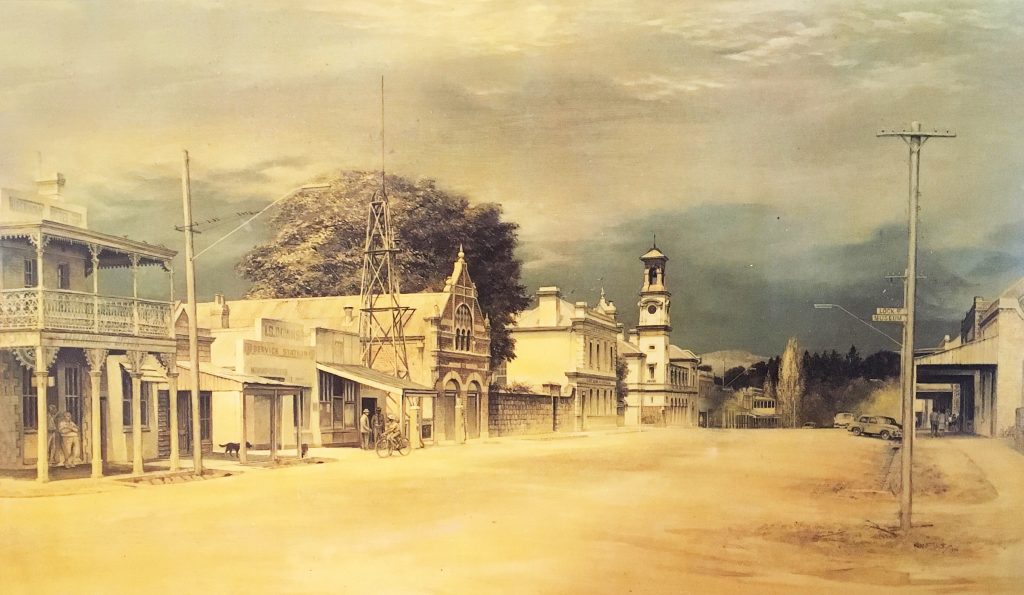
Ian Downs and his wife Joan take over Leo Kavanagh’s BP Service Station and his former Beechworth Taxi Service buildings at 34-36 Camp Street. (These two buildings are now the ‘Moments & Memories Tea Room’) They will move their BP Service Station to Ford Street in 1972.
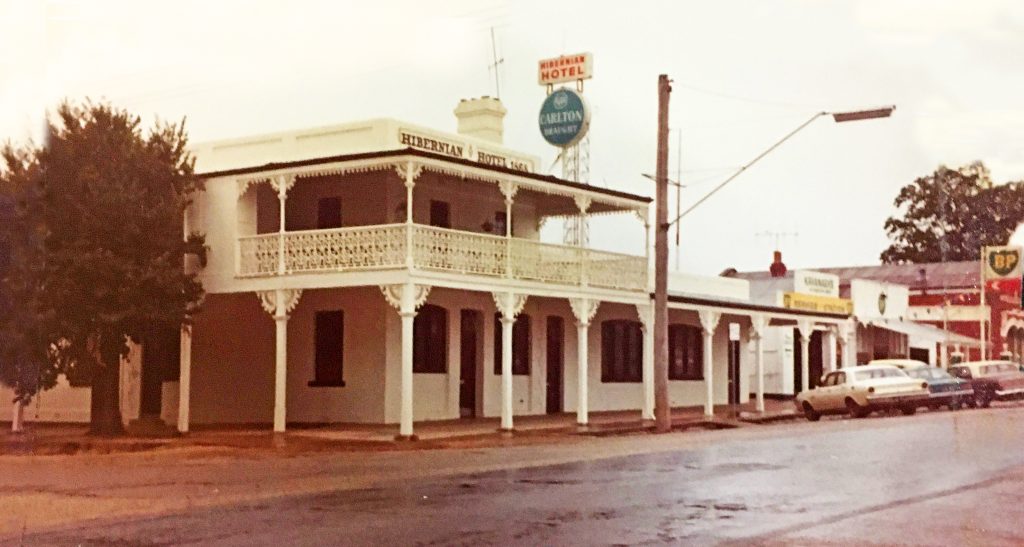
1963

46-year-old Wally Russell is posted to Beechworth as the new manager of the State Savings Bank of Victoria at 97 Ford Street. He and his wife Bette move into the residence above the bank building (constructed in 1876 as the Oriental Bank). Having played 65 VFL games of football in Melbourne for both Richmond and Geelong, Wally now becomes a football fixture in his new hometown – both as a player, coach and administrator for the Beechworth Football Club. He also plays tennis, as well as cricket with the Beechworth First XI. Other staff members at Beechworth’s State Savings Bank branch excel in local sport, with bank teller Gary Jarvis winning the Ovens and Murray Advertiser award for Best Footballer in the local league in 1966. Ron Burridge, who joined the bank in Beechworth in 1960, wins the same Ovens and Murray Advertiser award twice before transferring to the powerful Wangaratta Football Club.

| Bank Manager Wally Russell will become vice-president of the Beechworth Lions Club and serves as Treasurer of the Beechworth RSL as well as the Lake Sambell Committee of Management. |
1963

The Brigidine Convent of Mt St Joseph is renamed Delaney College (after Bishop Delaney, founder of the Irish Brigidine Order) but student numbers continue to decline, and it will eventually close in 1978.
1963 – Oct 13
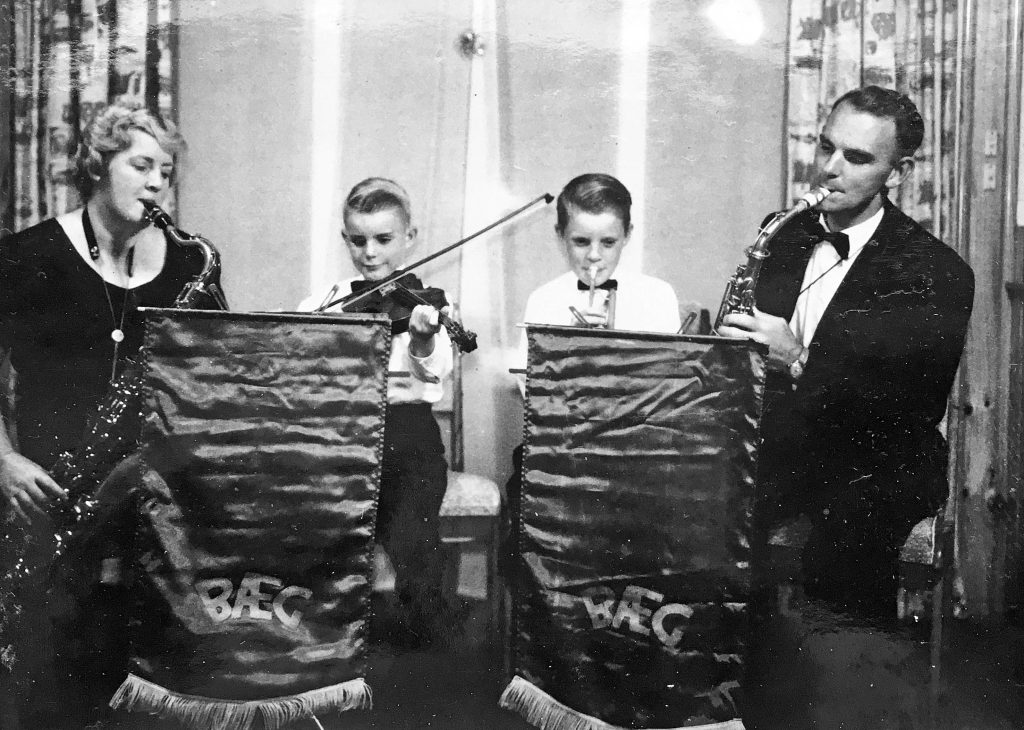
Following the gradual demise of the much-loved Beechworth Brass Band – founded by Henry Vandenberg in 1887 – Herb and Joan Crossman establish the Beechworth Music Group. Their first concert is held in front of a packed house at the Ovens and Murray Home. Beginning life as part of Beechworth Adult Education Group (BAEG), it is lead by Beechworth police office Herb (who plays tuba and saxophone) and Joan (who plays tenor saxophone) and their two sons Greg and Geoff, along with other musicians, and noted violinist George Rucins as conductor.

| Eventually growing to become the ‘Beechworth Concert Band’ in the mid-1970s, the idea behind the ‘Beechworth Music Group’ is to bring in other instruments and broaden the town’s orchestra to be either a ‘Marching Band’ or a ‘Concert Band’. |
1963
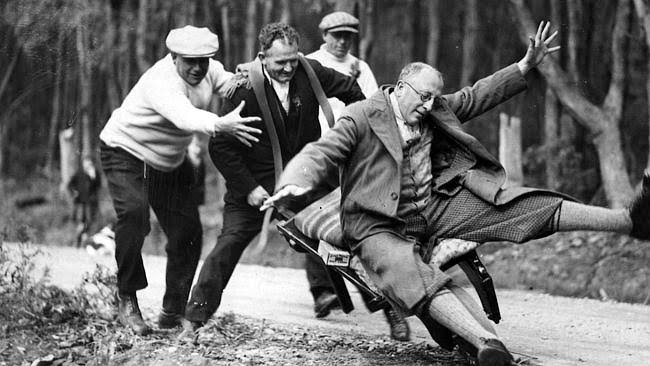
Allen Parkinson (nephew of Tom Parkinson) and Ronnie Evans (a relation of Tony ‘Sid’ Evans) recreate the famous 1935 Tom Parkinson-Sid Evans “Wheelbarrow Challenge”, this time doing the eight-day journey in reverse, starting at Mt Buffalo and returning to Beechworth using the same wheelbarrow that had been used in 1935.
1963 – Dec 26

Crowds turn out along Ford Street for the third annual ‘Golden Hills Festival’ parade. Established in 1961, the festival draws thousands of people to Beechworth for a range of events just after Christmas. Originally organised and promoted by shire engineer R.E. Carter, with major support from the newly formed Beechworth Lions Club, from 1966 it becomes known as the ‘Golden Horseshoe Festival’.
1964
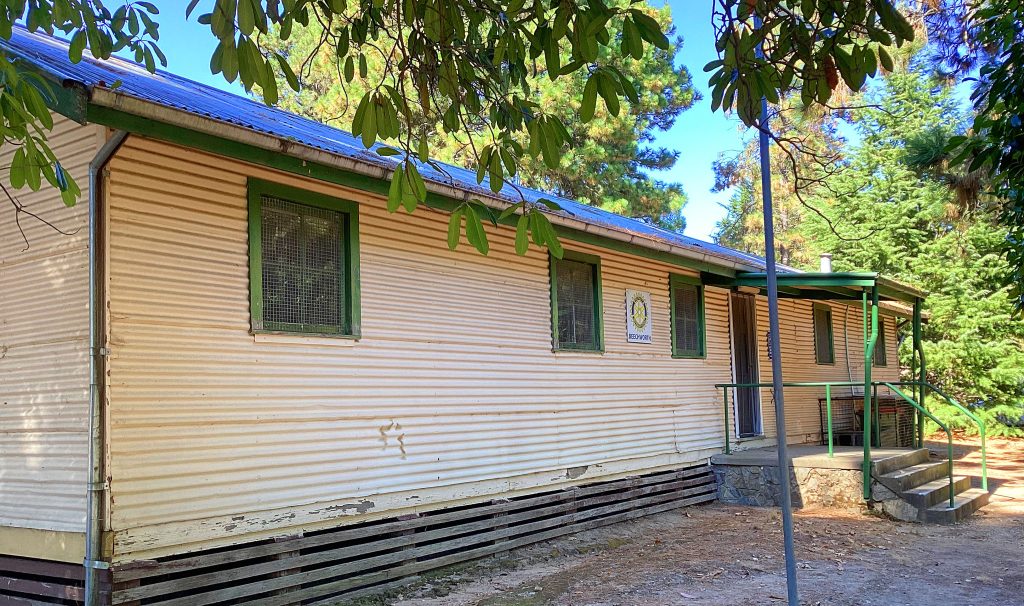
Former Australian Army mechanic Mal Davidson suggests the Lions Club of Beechworth purchase a former army hut from Bandiana for the Beechworth Girls Guides to use as their meeting hall. The purchase proceeds and the Lions Club transport the building to Beechworth, relocating it to Queen Victoria Park where it still stands today, facing Ford Street. From 2010 the Beechworth Rotary Club will take possession of the building, to be known as ‘Rotary Hall’.

| Today, the ‘Rotary Hall’ continues to be used for regular ‘Rotary’ meetings (above), along with the ‘Red Cross’, the ‘Beechworth Country Women’s Association’ (founded in 1942). Even the board of the ‘Bendigo Bank’ use the hall for their annual meetings. |
1964 – Apr 12

Major-General Sir Kingsley Norris is on hand at Beechworth to unveil the Centotaph War Memorial at the Town Hall Gardens, on the corner of William and Ford Streets. The plaque on the memorial states: “This memorial is dedicated to all the men and women from the Beechworth District who gave their lives in the service of their country in all the conflicts in which we have been involved”.

1964
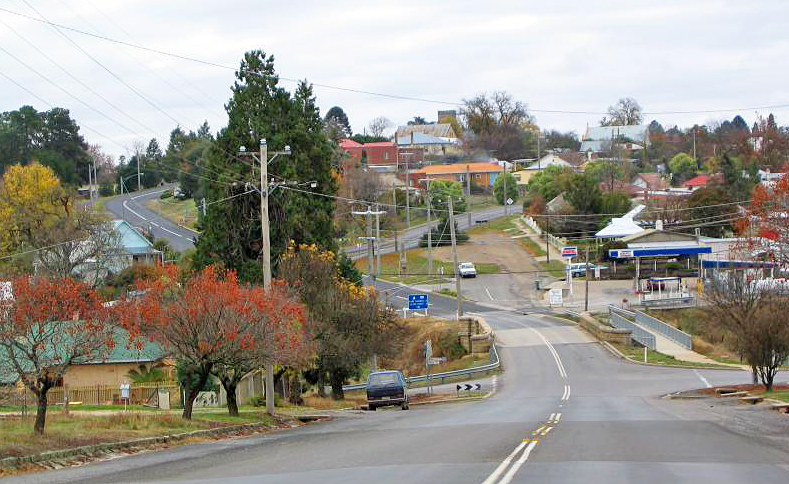
John Breen and his sons Robert and Michael establish the Mayday Hills Service Station at 2-4 High Street – a vacant block of land just across Newtown Bridge – the original site of the first gold diggings on Spring Creek. Originally selling the new Amoco brand of petrol, the business quickly changes its name to Breen Brothers Service Centre after confusion with the Mayday Hills Asylum! It later sells Esso petrol then Ampol. It is now a Shell Service Station operated run by Indigo Fuels.
1965
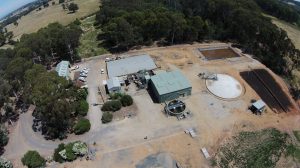
A sewerage system for Beechworth is finally approved! First proposed in 1925, funding is withdrawn due to the decline in mining activities. Once approval is finally granted in 1967, a wastewater collection system is constructed between 1967 and 1970 using vitrified clay pipes. The ‘full gravity system’ includes conveyance to the Beechworth Wastewater Treatment Plant on McFeeters Road near Woolshed.
1965

The Beechworth Music Group continues to grow, giving a number of concerts and featuring in local events, as well as entering ‘floats’ in the annual Golden Hills Festival. The group wins first prize for their floats with orchestral and music themes in 1964 and 1965.


1965

Beechworth’s iconic 1859-built Powder Magazine continues to stand neglected on the Gorge Road, not helped by the removal of the building’s roof to discourage “rough sleepers” during the depression of the 1930s. Inspired by the historic conservation work of the late John ‘Jack’ Skidmore, local residents and the Progress Association begin to raise funds for urgent restoration work. They are supported by the North Eastern Historical Society and enthusiastic staff members from Melbourne University. The restoration and preservation project will soon be formally adopted by the National Trust.
| Skidmore Road will be named after Jack Skidmore in recognition of his efforts in conservation. Skidmore Road links the bottom of Camp Street to the ‘Powder Magazine’. Jack’s home at the bottom of Camp Street had been destroyed in the Christmas bushfires of 1899. Skidmore dies aged 91 in Beechworth on 9 March 1925 and is buried in the Presbyterian section of Beechworth Cemetery.. |
1965

The new purpose-built Beechworth Kindergarten opens at 2 Albert Road, on the corner of Albert Road and Harper Avenue. The Beechworth Kindergarten is now located in the beautiful parks and gardens of Mayday Hills.
1965 – Oct 15

The ‘Steam Age’ is over as the two K-Class locomotives from Beechworth and Wangaratta leave the North-East line for the final time, replaced by T-Class Diesel Locomotives (above).
1966 – Jan 17
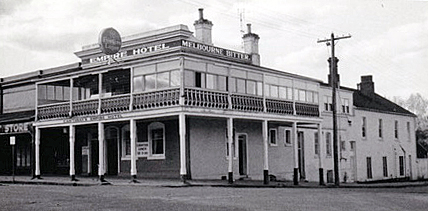
Thelma Josephine Cawthray (née Porritt) the 56-year-old (second) wife of the licensee of the Empire Hotel, falls from the hotel’s balcony and dies shortly afterwards. Although the coroner finds it an ‘accidental death’, rumours spread that Thelma had been pushed to her death.
| Stories persist to this day that the ‘Empire Hotel’ is haunted by the ghost of Thelma’s husband Claude Rolland Cawthray, who passes away at the ‘Empire’ in 1972. |
1966

The Golden Hills Festival – which originated on Boxing Day in 1960 – is replaced by the Golden Horseshoes Festival, held over the Easter long weekend. A few days before the big event, Ford Street is decorated with display shapes – depicting stylised picks and shovels – attached to light poles. (close up detail below) The Easter Horseshoes Festival continues in Beechworth to this day and is a big draw card for the town at Easter.

1966 – Apr 9
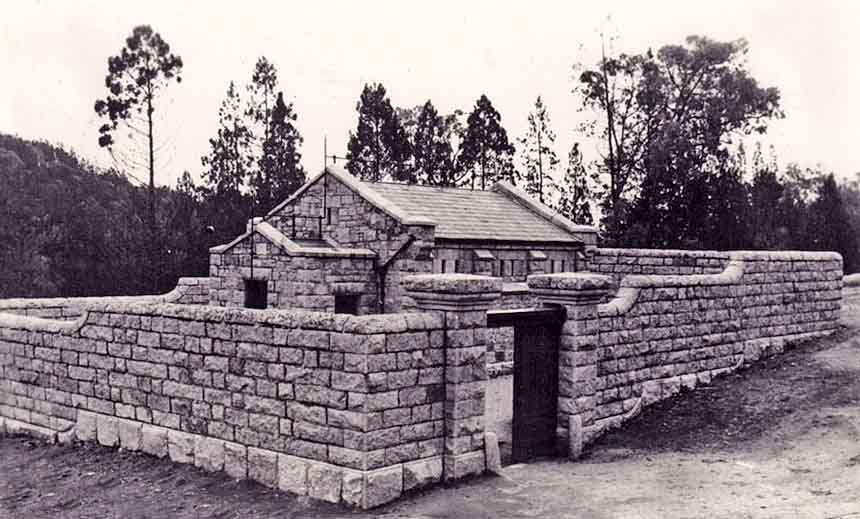
Closed and unused since 1918, the 1859-built Beechworth Powder Magazine is finally restored with funds raised by local residents and the Progress Association. On Easter Sunday, on behalf of the National Trust, Rupert ‘Dick’ Hamer, the Victorian Minister for Local Government is on hand to officially open the Powder Magazine to the public as a new tourist destination for Beechworth. Work will then commence on building a replica of an early settler’s slab hut a few metres away. It will be completed in 1968 (see entry below in 1968 section).
| ‘The National Trust’ is established in 1956 and is quickly invited to identify and help preserve many of Beechworth’s important historic buildings, with many of them eventually given ‘National Trust Classifications’. The ‘Beechworth Powder Magazine’ is the first ‘National Trust’ property to be opened to the public outside the Melbourne metropolitan area. |

1966 – Jul 15

In the midst of one of the coldest winters on record, snow blankets Beechworth and surrounds as a mass of cold air descends on the area, with snow falling as far north as the centre of Albury (below).
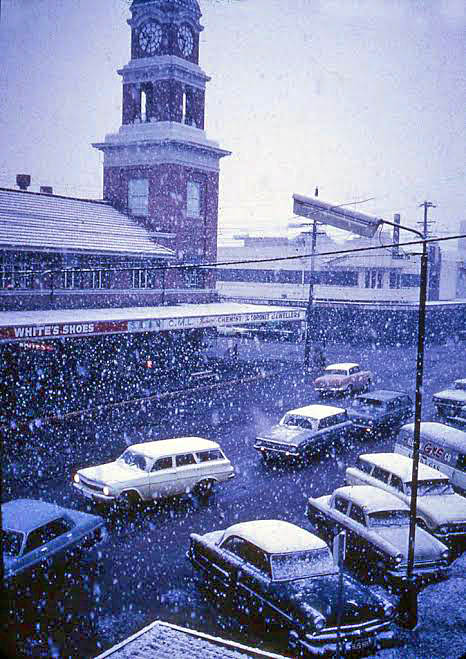
1966
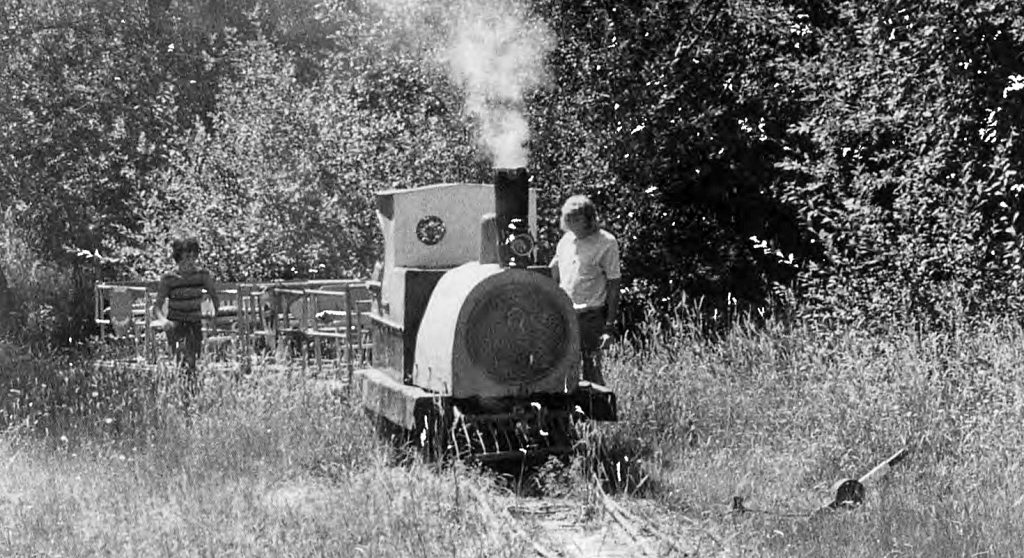
After a number of years work, The Golden Pioneer Railway is finally open as a tourist attraction around the Beechworth Caravan Park at Lake Sambell. A pre-war Willys-Overland 4-cylinder petrol engine (similar to a wartime Jeep) is used as the engine for the little imitation steam locomotive built by Don Hayes and Rex Norman, with assistance from Beechworth motor mechanic Frank Perryman. The engine is named the ‘WM Meldrum’ after Beechworth gold pioneer, James Meldrum, the former shepherd and overseer to the Reid Brothers. The little engine pulls three 4-wheel railway trucks – open air carriages – on railway tracks that Don and Rex have recovered from the now disused 1947-built tramline at the Mayday Hills Asylum and the tracks that once ran around Zwar’s Tannery. Operated by volunteers on Saturdays and Public Holidays, the two-foot gauge railway carries children and their parents on a return journey around Lake Sambell’s picnic areas and through a forest grove beside Silver Creek (see map below).

1967

The National Trust is instrumental in having a Melbourne-based company, Beechworth Developments Pty Ltd, purchase Tanswell’s Commercial Hotel and announce a $150,000 plan to restore the 1873-built hotel to its former glory, under the supervision of the National Trust. The company will lease the coach-house and stables at the rear of the hotel to the National Trust for conversion into the Beechworth Carriage and Harness Museum.
| Officially opened on November 28, 1969, the ‘Beechworth Carriage and Harness Museum’ will feature Beechworth’s grand horse-drawn hearse; the massive Beechworth-Stanley ‘Omnibus’ which was built in Beechworth by ‘Crawford and Connolly’; a ‘Sociable’ said to have used by Governor Bligh; and a saddle which once belonged to Daniel Morgan the bushranger. |
1967 – Oct 24

On the centenary of the opening of the Mayday Hills Mental Asylum in 1867, a public holiday is declared in Beechworth as the town welcomes the Governor of Victoria, Major-General Sir Rohan ‘Jumbo’ Delacombe and Lady Eleanor Delacombe. A ‘re-opening ceremony’ is held, a plaque is unveiled and a buffet dinner is held on this fine Tuesday evening. An open-air theatre is established on the grounds of the Asylum and a pageant entitled “Fight Against Affliction” is performed to a crowded audience. Two days later, the annual “Patient’s Picnic” is held, and a “Cabaret Staff Ball” takes place on Friday evening. Before the occasion, almost $500,000 has been spent restoring the cement facing of the Administration Office building.
| Coinciding with the Centenary celebrations, the government accepts a recommendation to officially change the name of the Asylum (again!) from the ‘Beechworth Mental Hospital’ to the ‘Mayday Hills Mental Hospital’, specifically noting that the name ‘May Day’ (an earlier name for Beechworth) be written as one word – ‘Mayday’ on the basis that the word ‘Mayday’ comes from the French derivative of ‘Please Help Us’. |
1967 – Nov
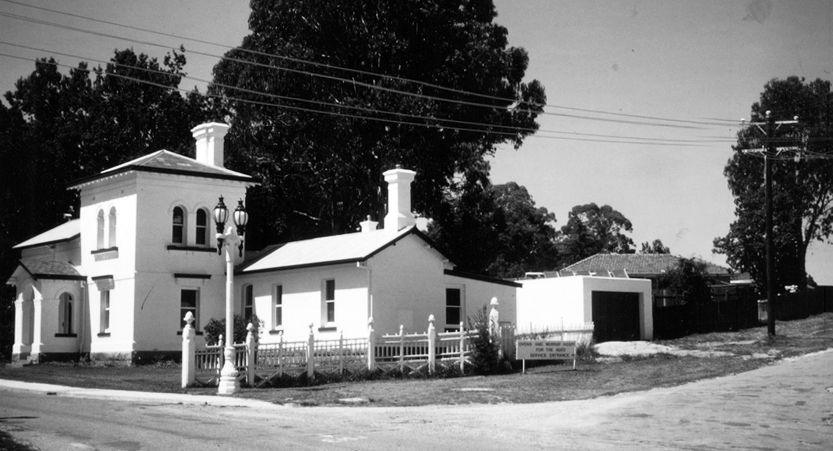
Alan McDonald, the manager of the newly re-named Mayday Hills Mental Hospital, uses his connections in Melbourne to acquire an ornate street lamp post – topped by two lamps – that had once graced St. Kilda Road, to be installed at the Hospital’s entrance gate. It still stands proudly at the entrance today (below).
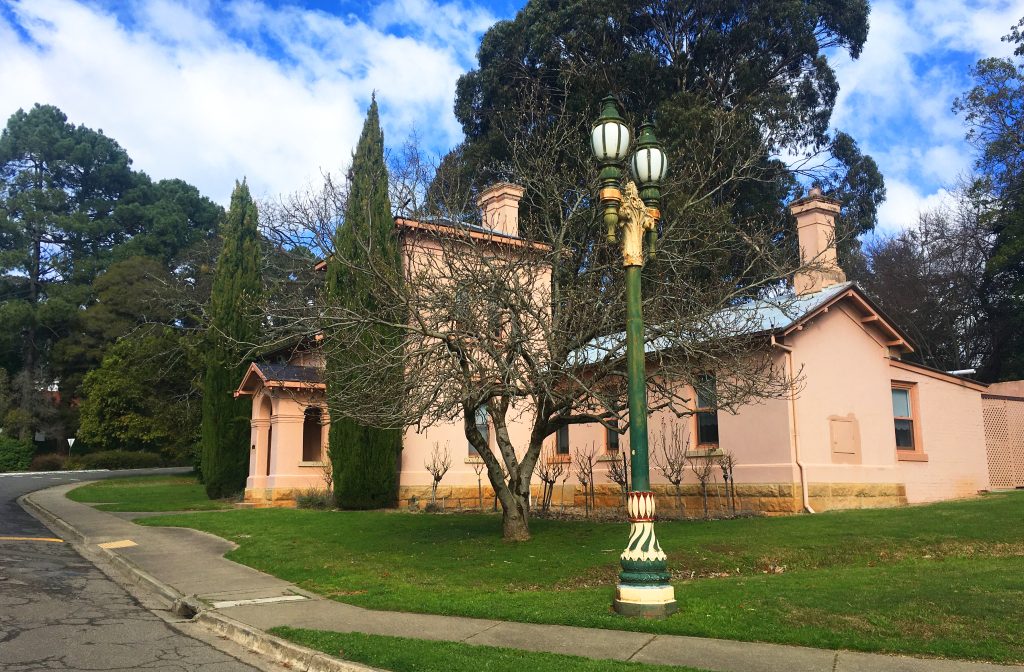
1967 – Dec 26

With much excitement, a ‘Time Capsule’ is buried in the Beechworth Town Hall Gardens. Organised by the Beechworth Lions Club and its President Brian Cousins as part of the annual Beechworth Boxing Day Golden Horseshoes Festival, the concrete capsule includes a personally signed copy of Prime Minister Harold Holt’s Federal Election Speech dated November 9th 1967. Holt will tragically drown on December 17th in Portsea, just 9 days before the ‘Time Capsule’ is buried in Beechworth.


| The ‘1967 Time Capsule’ will be opened 33 years later on Boxing Day 2000 by members of the ‘Beechworth Lions Club’ who are saddened to discover that many items in the capsule have been damaged or destroyed by moisture. A new ‘Time Capsule’ is buried on the same day in 2000 containing around 280 local items, as well as a personal letter from the (then) current Prime Minister John Howard in which he sends his “best wishes for the future of Beechworth” and a ‘a tip’ that by 2050 Australia could well be a Republic. The ‘2000 Capsule’ is due to be exhumed and opened on Boxing Day 2050. |
1968 – Feb 1

Beechworth records its hottest day when the mercury hits a whopping peak of 114 degrees fahrenheit (45.6°)!
1968

A former shearer’s slab hut from the Corryong area is relocated (in pieces) to Beechworth where it is reassembled on Skidmore Road adjacent to the Beechworth Powder Magazine. The old building is preserved for tourists, while also (initially) providing a functional use as a Caretaker’s Cottage. It will later be rented out to a few individuals before the building experiences issues with mould and other problems, before being essentially abandoned and falling into disrepair. Over the years there is talk of it being repaired and restored by the Department of Environment, Land, Water and Planning (DELWP) with a number of locals pushing to save it – including Elizabeth Mason and the Beechworth History and Heritage Society in the 2000s – but it seems no one wants to claim responsibility for it.

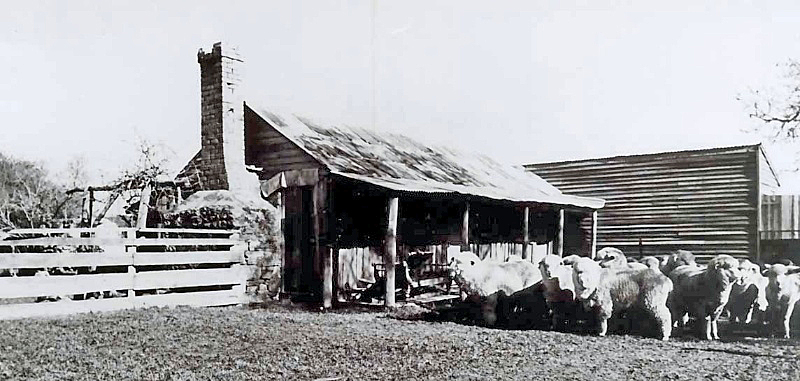
1968 – Apr
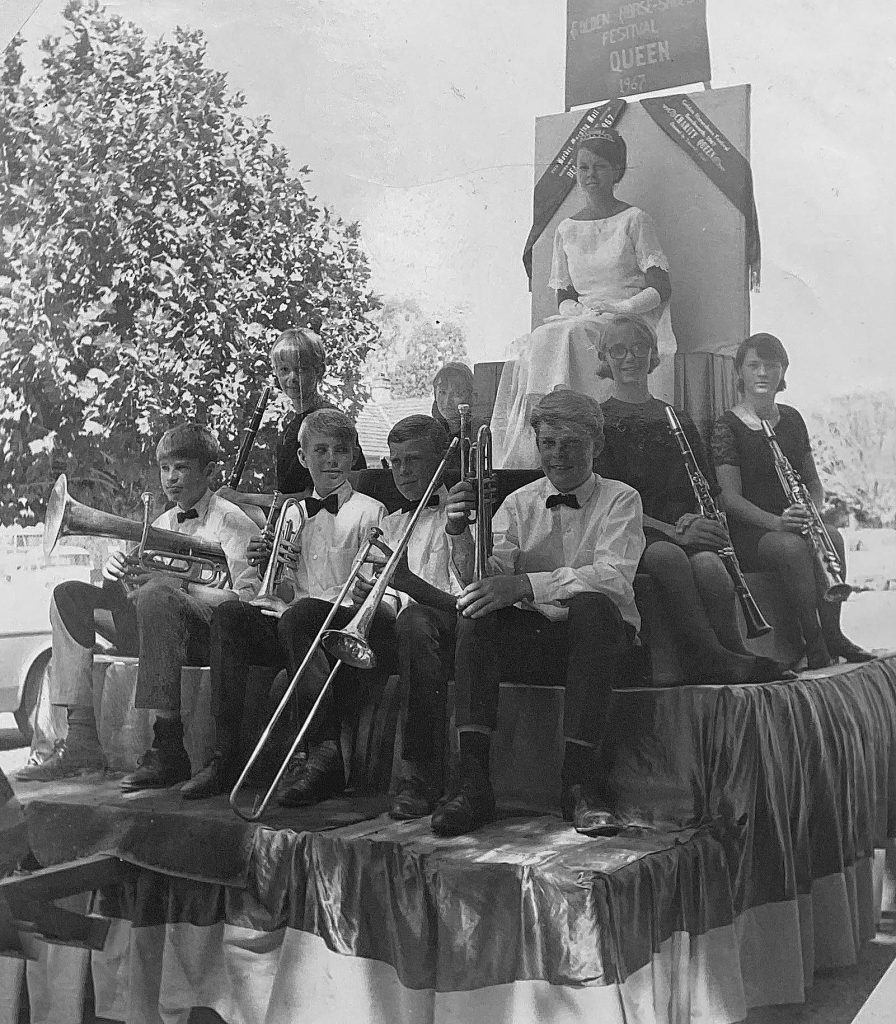
Doris Schmitt is named both the ‘Queen’ and ‘Charity Queen’ of Beechworth’s Golden Horseshoes Festival. The Beechworth Music Group Junior Concert Band who sponsor Miss Schmitt’s entry, raise $1,000 which will go towards new uniforms for members of the band, along with three new instruments – mellophones (similar to French Horns) at a cost of $600 each – which will be shipped from England especially for the group. The Beechworth Music Group, formed in 1963, now has 39 playing members (below).

1968
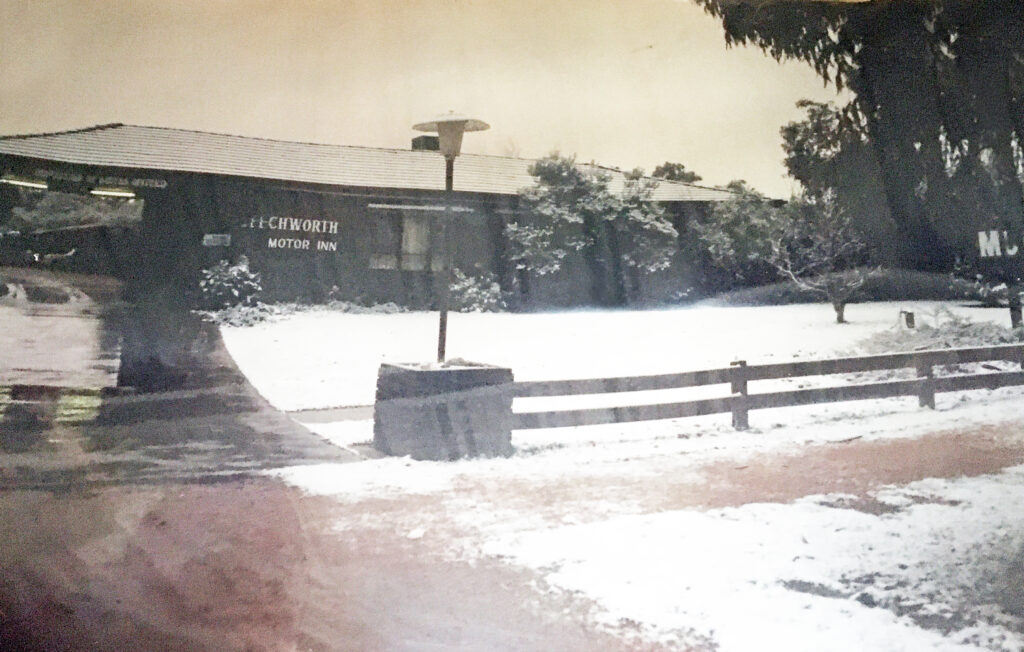
The Francis family build and open Beechworth’s first purpose-built motel at 54 Sydney Road on land previously owned by the Le Couteur family, dating back to 1853. The Beechworth Motor Inn still operates today.
1968
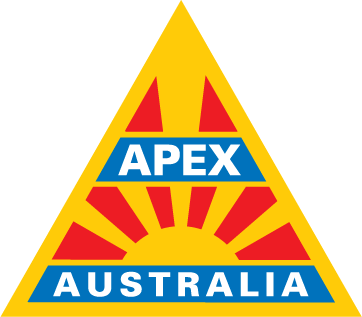
The Apex Club of Beechworth is established. They hold regular meetings at Regency House on Loch Street.
1968 – Jun

The Beechworth Music Group complete a successful three-day tour to perform in Adelaide over the Queen’s Birthday long weekend.

1968

Automatic telephones begin installation throughout Beechworth, with the need to make calls through an operator no longer required.
1968

Graeme and Lesley Smart take over the Esso Petrol Station on the corner of Ford and Church Streets and move into the house next door on Church Street. Previously run by Peter Boyd Snr and his wife Kath Boyd, Kath leases the business to the Smarts following the death of her husband, who had started his career working for Tom Parkinson. The Smarts will also run their rapidly growing Beechworth taxi business from the service station.
1968

With a growing interest in promoting tourism for Beechworth’s heritage, the National Trust (established in 1956) and the Beechworth Council devise an environmental area for the preservation of selected buildings and the encouragement of sympathetic design for all new buildings. Most of the town is a conservation area under the Register of the National Estate. In addition to Beechworth’s lack of twentieth century progress having caused little danger to most of the buildings, their durable granite and fine stonemasonry also ensures their longevity.
| The United Shire of Beechworth engages the firm of Perrott, Lyon, Timbrock and Kesa to complete a town plan to allow “development without destruction” of the town’s 19th century character. In keeping with this town plan, during the remodelling of ‘Sinclair’s Self-Service Store’ on Ford Street in 1968, a new shop front is built, but in the style of the 1870s. |
1968

Dewar Wilson Goode purchases the run-down old Black Springs Bakery – 5 km from Beechworth on the road to Wangaratta – and donates the property and surrounding buildings to the National Trust who begin work on restoring the bakery as a house. The beautiful and historic 1870s-built stone and brick bakery buildings will later be sold to Rob Carr who will develop the gardens on the 10-acre property (below) and restore the buildings for use as B&B accommodation.

| In 1875. the ‘Black Springs Bakery’ became the centrepiece of the small goldrush town of Black Springs, established in the 1850s. At its peak, the township of Black Springs includes a State School, three hotels, a butcher, three blacksmiths, a racecourse, a rifle range, three sawmills, several vineyards and orchards, a collection of dairies, with the ‘Black Springs Bakery’ becoming the settlement’s official Post Office. Ned Kelly is reputed to have bought bread at the ‘Black Springs Bakery’ The Bakery closes in 1942 and becomes the last remnant of a once thriving community. |
1968 – Sep

The Beechworth Music Group announce plans for a major fundraising event – a ‘Beechworth Derby’. Local policeman Herb Crossman will be pulled in a rickshaw by Neil McBain on an eight-day journey on foot from Beechworth to Melbourne. They hope to raise $3,000 in the sponsored event to equip local children with instruments to form a Junior Concert Band. However, after much publicity, they hit a snag when the Victorian Road Traffic Regulation Act of 1962 reveals that while a rickshaw is considered a ‘vehicle’ and can travel on the left-hand side of the road with cars, the person pulling the rickshaw is considered a ‘pedestrian’ and therefore must travel on the right-hand side of the road! Beechworth schoolchildren stage a protest march (below) and there is much debate and pleas to the government, but the law stands firm.
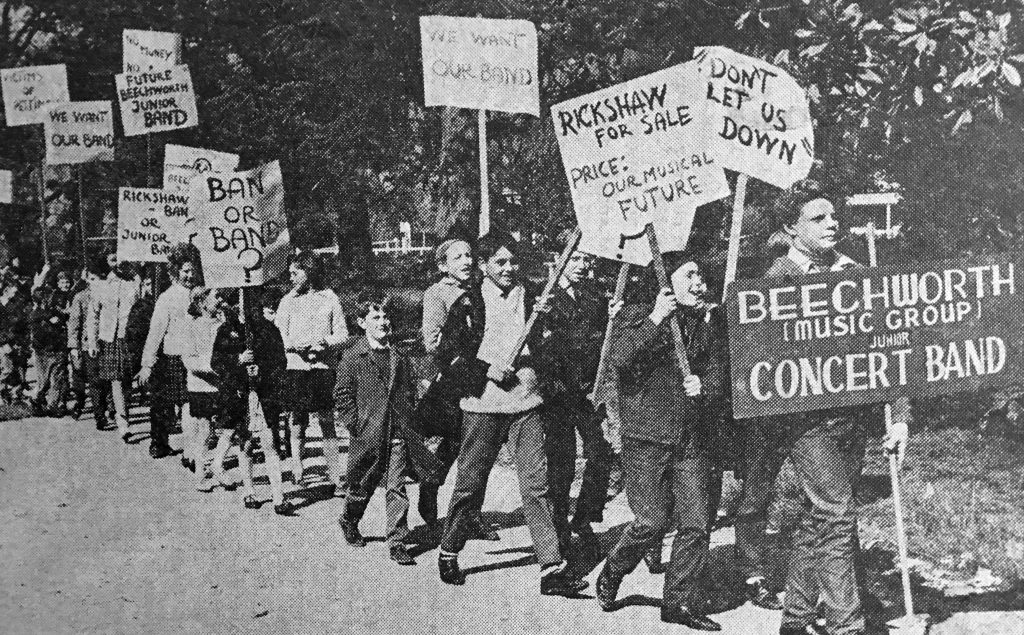
| In the end, the walk will proceed – without Herb Crossman and the much publicised rickshaw. Instead, Neil McBain will walk (on the right hand side of the road) on his own all the way to Melbourne – in the “Invisible Rickshaw Marathon” – ending at the Royal Melbourne Showgrounds. McBain, an education officer at the Beechworth Training Prison, had previously paddled a kayak from Yarrawonga to Mildura to help raise funds for the Manangatang Ambulance Service. |
1968 – Dec 12

After remodelling of its façade to better reflect a shopfront of the 1870s, Sinclair’s Self-Service Supermarket has a grand re-opening ceremony at 73-77 Ford Street, with the Shire President holding a reception for special guest Dame Mabel Brookes (below).
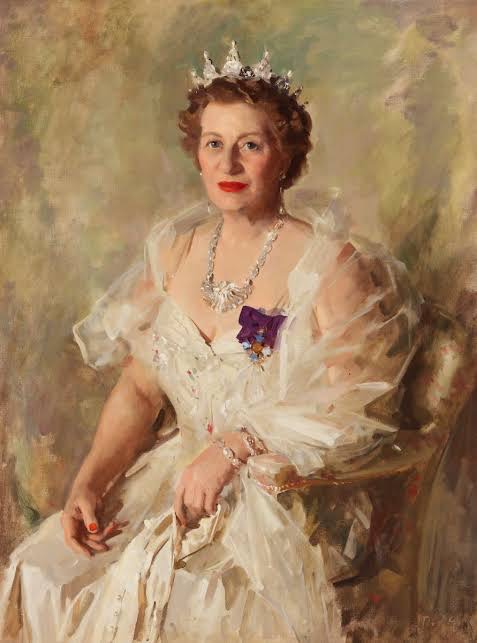
| Merv Sinclair also owns and operates the General Store and Supermarket in the nearby town of Stanley |
1969
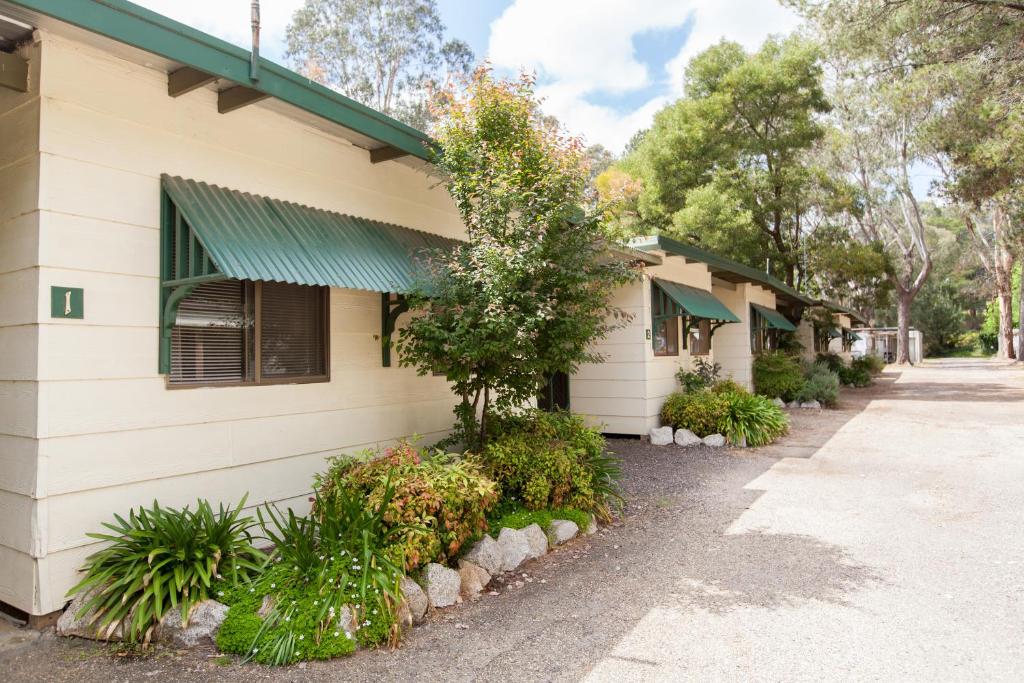
The Silver Creek Holiday Park opens at 151 Stanley Road, 1.5 km from the centre of Beechworth. Backing onto Silver Creek, the holiday park features cottages and cabins along with powered and unpowered camping sites. It will later be renamed the Beechworth Holiday Park and now also features villas and ‘glamping pods’ (below) along with a solar powered swimming pool.
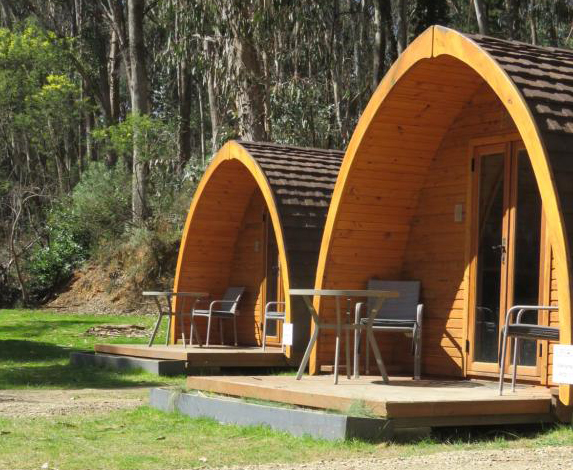
1969
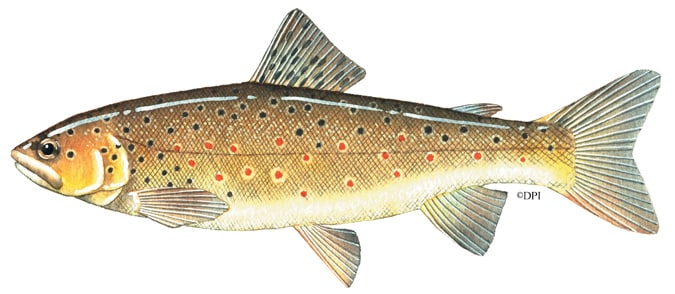
Reginald Brine and his wife Margaret purchase 11 acres of farmland beside Silver Creek and set to work building water races that run from Spring Creek that will encourage fish – particularly the abundant trout – into specially built breeding ponds. Within a short time, they are able to open the Golden Hills Trout Farm at 121 Stanley Road, just a couple of minutes’ drive from Beechworth, and it will remain a popular tourist attraction for the next 22 years.

1969 – Nov 28
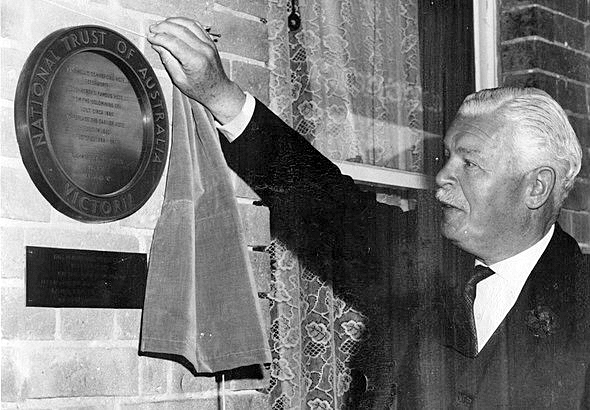
After almost 2 years and at a cost of over $100,000, Beechworth Developments Pty Ltd – under the supervision of the National Trust – complete renovation and restoration work, and the refreshed 1873-built Tanswells Commercial Hotel is officially re-opened by His Excellency Major-General Sir Rohan ‘Jumbo’ Delacombe, the Governor of Victoria. At the same time, he officially opens the National Trust Carriage Museum at the rear of the restored hotel, displaying a collection of horse-drawn vehicles.

| The National Trust carries out a nationwide search for to locate authentic Victorian hotel furniture and fittings and have remarkable success, often from unexpected sources. The antique brass chandelier in the public bar is located in Adelaide – coated in many layers of pink paint! Carefully stripping back the paint to reveal the original fine brass beneath takes many weeks (above). Wallpapers are specially imported, and new carpets (to match the originals) are specially manufactured and finally the main room is restored to its Victorian opulence. |


1970
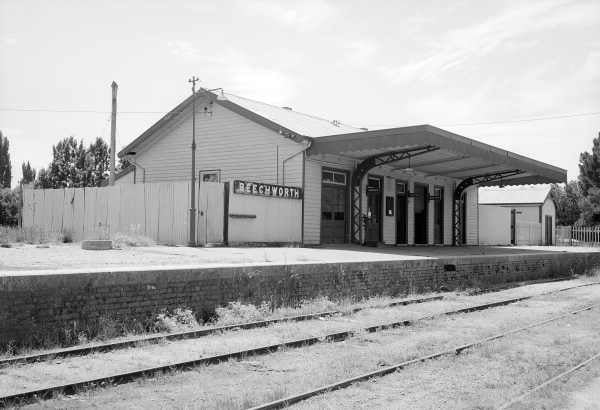
There is growing concern in Beechworth that the railway line to the town might be closed, after the ever-increasing use of cars and trucks (and freight) on the Hume Highway.

1970

After being classified by the National Trust, the now rather dilapidated 1859-built London Tavern (used as a private home since 1920) is purchased by Frank Strahan and a syndicate of fellow Melbourne academics – from Monash and Melbourne Universities – and friends linked to the National Trust, who slowly begin restoring and conserving the various buildings – sitting on a quarter-acre block on the corner of Camp and Finch Streets – with the aim of using it as a holiday home (below).

1970

The Beechworth branch of the Bank of New South Wales is under threat. With changes in banking operations and the need for better, and more modern, accommodation for the Bank Manager and staff, the head office of the bank considers demolishing the imposing 1856-57 built branch and replacing it with a more modern and functional bank, although they say the replacement building would be built with a ‘colonial design’ in mind. After protests about the historical importance of the old bank from the Beechworth Shire Council and the National Trust, the Bank of New South Wales agrees and announce plans to build new bank staff accommodation elsewhere in town and retain the old building without external alteration and with minimum internal changes.
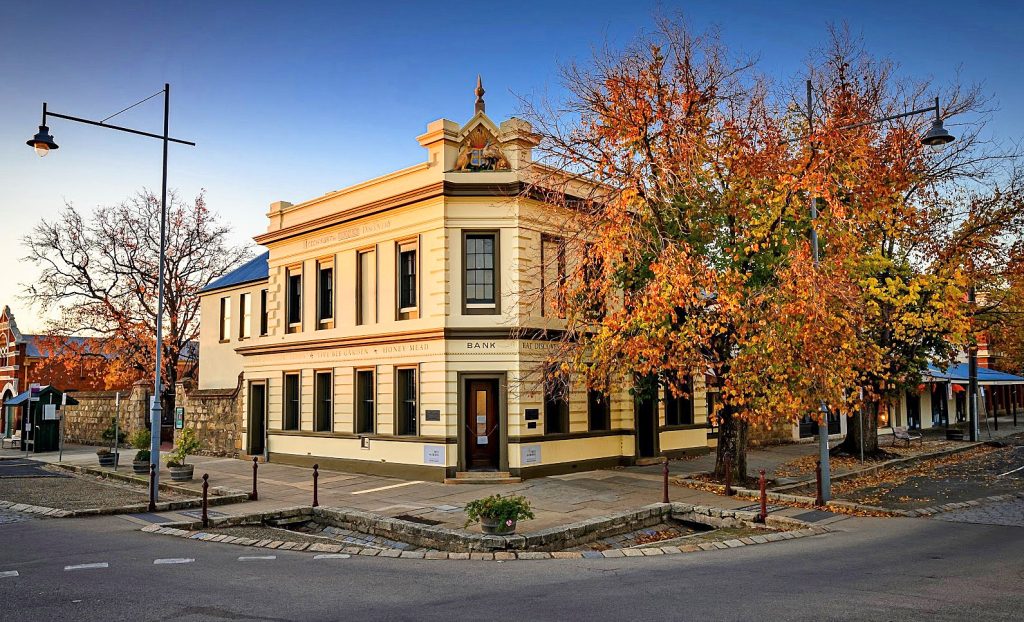
| The Beechworth branch of the ‘Bank of New South Wales’ will continue to operate from the old building until 1982 when it will become a branch of the ‘Westpac Banking Corporation’, then become the ‘Bank of Melbourne’ (a subsidiary of Westpac) in 1997, before closing and passing into private ownership in 2001. |
1970

James Thomas ‘Diamond’ Mosby and his wife Jean Mosby take over the recently restored Tanswell’s Commercial Hotel on Ford Street.

1970 – Sep
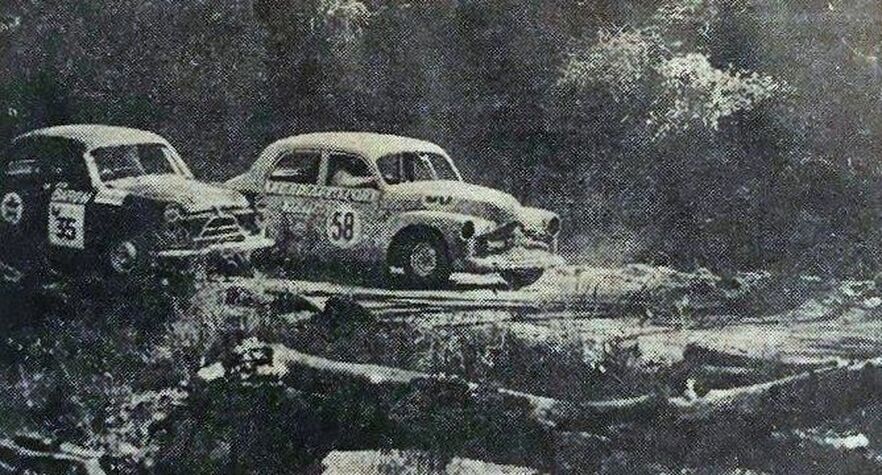
Founded in 1968, The Beechworth Motor Club finally holds its inaugural race meeting on the newly completed “Beechworth Track” built in the disused gold mine quarry along Madman’s Gully. The club’s first president is Ian Downs from the Golden Era Service Station. Regular race meetings are held, known as “Victorian Country Hot Rod Championships”.
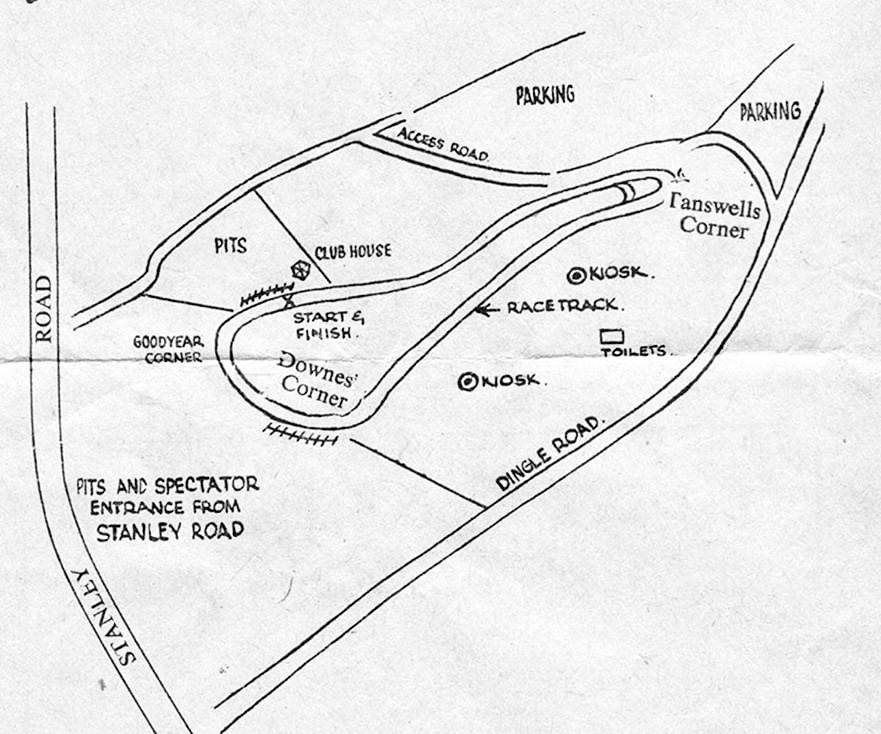
| By 1972 it is estimated that over 16,000 gallons of sump oil have been used on the track, and within a couple of years the use of waste oil on the track’s surface has come to the notice of the ‘Victorian Environmental Protection Authority’ as the oil is leeching into Silver Creek which runs into Beechworth’s Lake Sambell. In 1976, the E.P.A tells the ‘Beechworth Motor Club’ to stop using oil on the track or they will be fined $2,000. The track is closed and the club is disbanded. |
1971
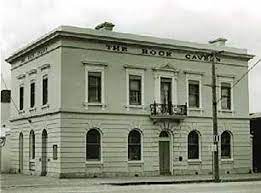
The former Bank of Victoria building on the corner of Ford and Camp Streets is taken over by Joan and Herb Crossman as their new Gem Shop and Information Centre. (The Crossmans had been running their Gem Shop for the previous three years at 48 Ford Street.) From the 1980s until the mid-1990s it operates as the The Rock Cavern. Since 1997 it has been the home of the Beechworth Gold precious gems and jewellery store.
1971 – Oct 20
Beechworth Credit Co-Operative Ltd is founded for the male nurses and domestic staff at the Mayday Hills Hospital. In June 1977 its name is changed to the Beechworth and Ovens Credit Union Co-Operative Ltd to reflect the Credit Unions bond covering the Shires of Beechworth, Yackandandah, Myrtleford and Bright.
| On July 1st 1898 the ‘Beechworth and Ovens Credit Union Co-Operative Ltd’ becomes part of the ‘WAW Credit Union Co-Operative Ltd’. In March 2022 the ‘WAW Credit Union Co-Operative Ltd’ rebrands as ‘Bank WAW’. W.A.W stands for Wangaratta, Albury and Wodonga. |
1971
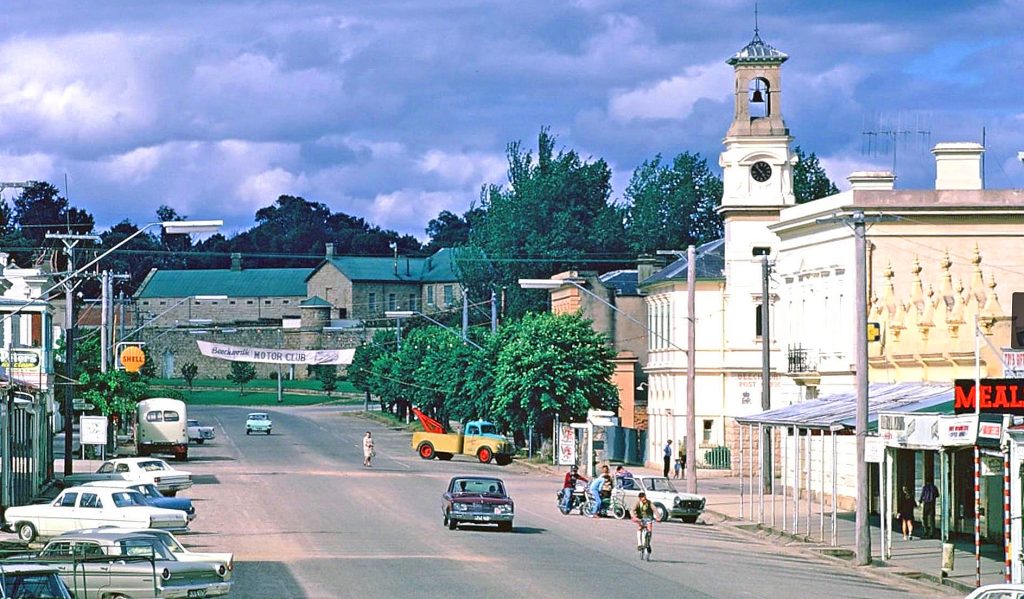
After over 50 years in business, Parkinson Motors and Shell Petrol Station (below) is still busy serving Beechworth customers on Ford Street as well as running its regular bus service from Beechworth to Wangaratta with their ‘Leyland Royal Tiger’ bus (above at left). The late Tom Parkinson had established the first Wangaratta to Beechworth Motor Car Service from his Ford Street Garage in December 1930, followed by the commencement of Parkinson’s regular daily Beechworth Bus Service at the end of 1939.


1972 – Jan
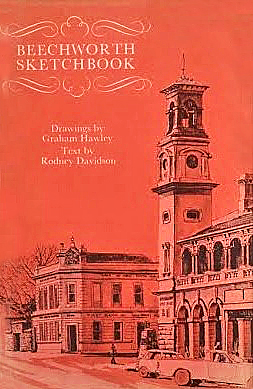
The Beechworth Sketchbook is released. Researched and written by 39-year-old lawyer Rodney Davidson (below), the 62-page hardback book is an illustrated history and background to the key buildings of Beechworth and features sketches by 35-year-old Graham Hawley. The book is part of the historic Australian towns ‘Sketchbook’ series by South Australian publishing firm Rigby.
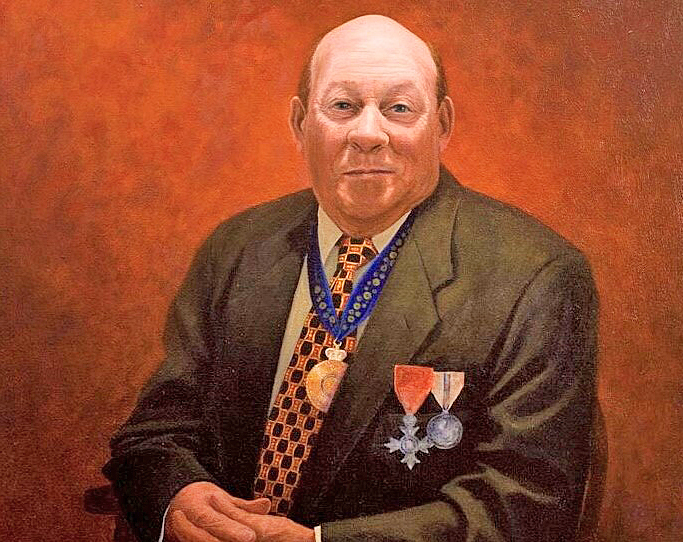
| Rodney Disney Davidson A.O. & O.B.E., is one of the key players in the preservation of Victoria’s heritage during the latter part of the 20th century. He will play a crucial part in building the ‘National Trust’ movement in Victoria after it is established in 1956. His work as Chairman (from 1965 to 1982) and then President of the ‘National Trust’ in Victoria, and his subsequent contribution to the ‘Australian Council of National Trusts’ makes an enormous impact on the preservation of numerous heritage buildings, including those in Beechworth, as he calls for legislation to ensure the preservation of historic buildings. He also has one of the finest collections of books of Australia’s history in the world! |
1972

Rupert ‘Dick’ Hamer, the Premier of Victoria, establishes the Government Buildings Advisory Council and will then pass the Historic Buildings Act in 1974, demonstrating that Victoria is leading the way in preserving historic buildings in Australia. Rodney Davidson – author of the Beechworth Sketchbook (see entry above) – will be appointed the first chairperson of the Historic Buildings Preservation Council (1974-1977). This will all be very significant for the continued preservation of many buildings in Beechworth.

| When Rodney Davidson dies in Parkville on his 83rd birthday, his massive collection of Australian books is considered one of the finest privately owned collections of historical Australian books ever assembled. His collection includes unique items which are eagerly sought by both private and institutional collections. |
1972

Upon the death of 76-year-old Bertha Pemberton in August 1971, her will directs that the National Trust should have the first option to buy the former Star Hotel on Ford Street at its current valuation. Bertha and her late husband William Joseph Pemberton had purchased the 1864-built hotel building in 1935 for £500 to run their popular grocery, furniture and drapery business and the Pembertons, and later, their two sons Maxwell and Robert, will serve Beechworth for many years. The National Trust will negotiate a sale price of $10,000 and purchase the large two-storey building in 1972. After restoration, the building will be opened as the Beechworth Youth Hostel in December 1973.
| Although ‘Youth Hostels’ have become common in old buildings in Europe, this is the first time it has ever been attempted in Australia. To raise the $50,000 for restoration and conservation, a partnership is formed between the ‘National Trust’, the ‘Youth Hostel Association’ and the ‘United Shie of Beechworth’. |
1972

65km from Beechworth, Lake Benalla is created by damming the flood-prone Broken River.
1972
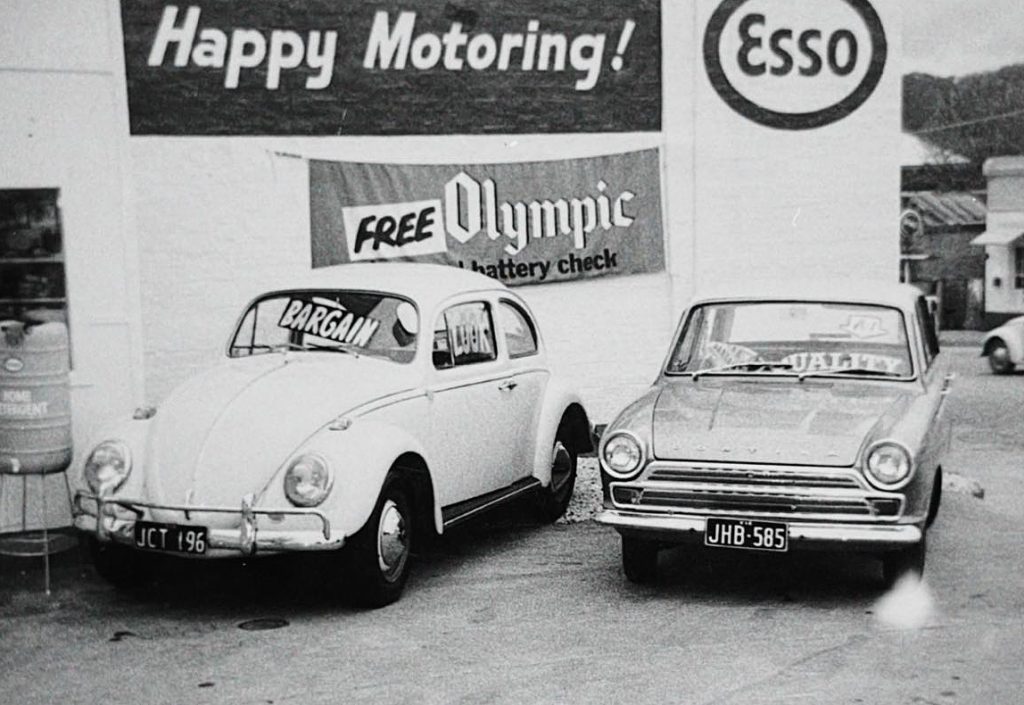
After running the Esso Petrol Station on the corner of Ford and Church Streets for almost five years, Graeme and Lesley Smart sell the popular business to builder Kurt Gotsalks and his wife.
1972 – Oct 1
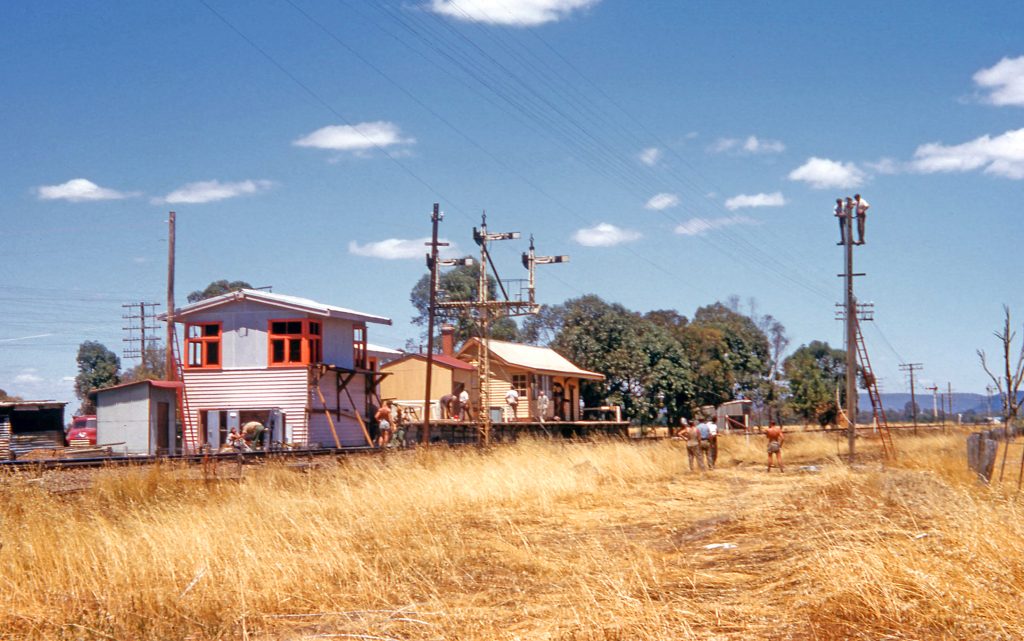
The Bowser Railway Station – formerly known as Beechworth Junction – ceases operating as a stop for passengers and parcels, however, the platform is not removed until July 1976. The station will be completely closed in April 1987 and in September 1987 it is disestablished as a staff station, with the Signal Box, Points and Signals all being abolished, along with the former grain storage facility.

| On January 13th 1987, the line to Peechelba East will be closed, and in February, the standard gauge crossing is dismantled. Three months later the line to Myrtleford – the last remnant of the Beechworth and Bright lines – is officially closed on April 21. |
1972
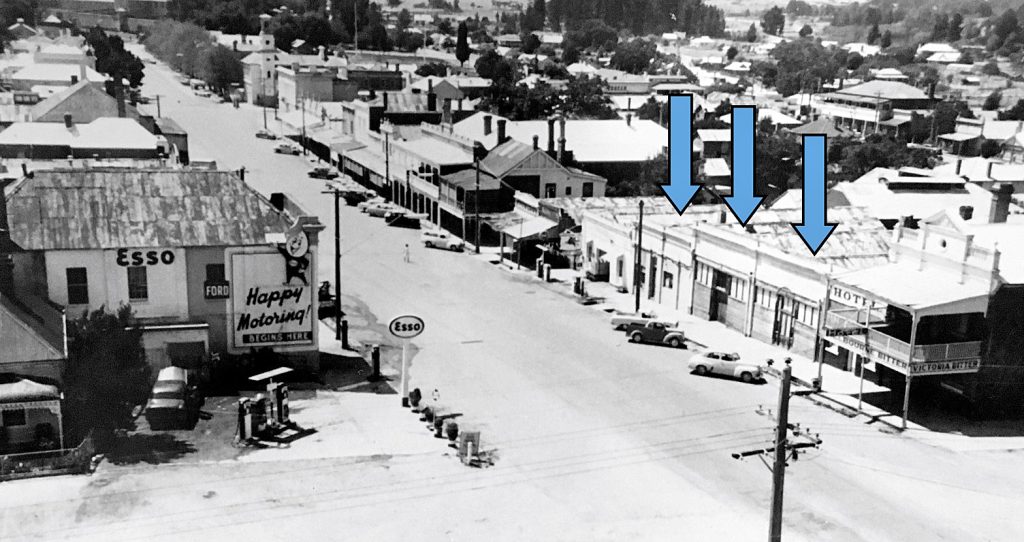
Ian and Joan Downs purchase three old buildings in Ford Street (between Warden’s Hotel and Cameron McBean’s Reliance Garage), demolish them, and build a new service station opposite Graeme Smart’s Esso station across the street. They move their BP petrol station from 36 Camp Street and open the Golden Era BP Service Station at 34 Ford Street. In the mid 1980’s the service station switches from BP to Caltex. The site of the Golden Era Service Station at 34 Ford Street had, from 1861, been the location of Cabinet makers and furniture dealers Senglemann & Reidle, who will trade there for 45 years until selling it in 1906, whereupon the building is converted into an Ice Skating Rink, a popular entertainment at the time. It is later the home of Well’s Bakery.




| From 1965 Ian Downs and his family have also operated Beechworth’s RACV. The iconic yellow RACV vehicles continue to be a feature of the town. |

1973

William ‘Leonard’ Collier and Nancy Collier open their Seagull Cycle Works at 17 Camp Street. Seagull Bicyles have been a popular Australian bicycle since the 1920s when William Leonard’s father started designing and building them in Williamstown. Later, William (known to all as Leonard) moves the business to 142 Station Street in Fairfield. A few years after re-establishing Seagull Cycles in Beechworth, Leonard and Nancy retire and the popular Beechworth shop will be taken over by one of the Collier’s sons, Peter and his wife Lauris and they will run the business until Peter’s death from cancer in 1998.
| The shop at 17 Camp Street has been the home of many business over the years including ‘Paul’s Tea Merchants’, a shoe shop and a taxi business. |
1973 – Oct

The Rotary Club of Beechworth is chartered, with Jim Francis as the first president, followed by Charles Mason. The Rotary Club of Beechworth is a part of a worldwide organisation founded by Paul Harris, a Chicago attorney created the Rotary Club of Chicago on February 23rd 1905, so professionals with diverse backgrounds could exchange ideas and form meaningful, lifelong friendships. Rotary Clubs are non-political, non-religious, and open to all cultures, races and creeds. For more one than hundred years, ordinary people around the world have been giving to humanity through Rotary International.
1974
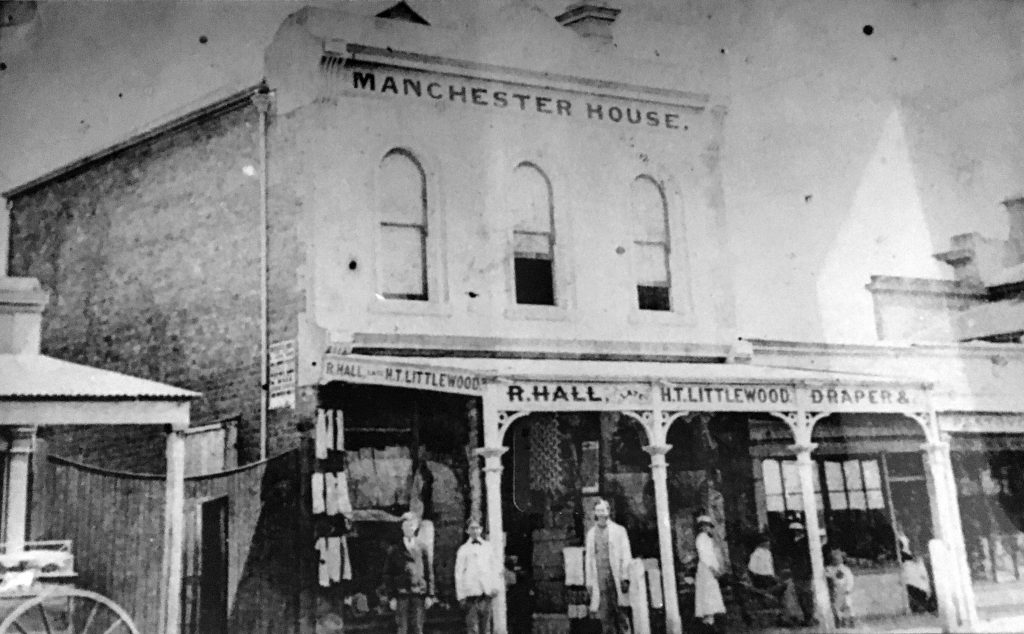
Tom O’Toole purchases the ‘Ideal Café & Milk Bar’ building in Camp Street (which began life as ‘Manchester House’ in the 1880s – above) which he runs for the next three years before selling the business … but he will return!
1974
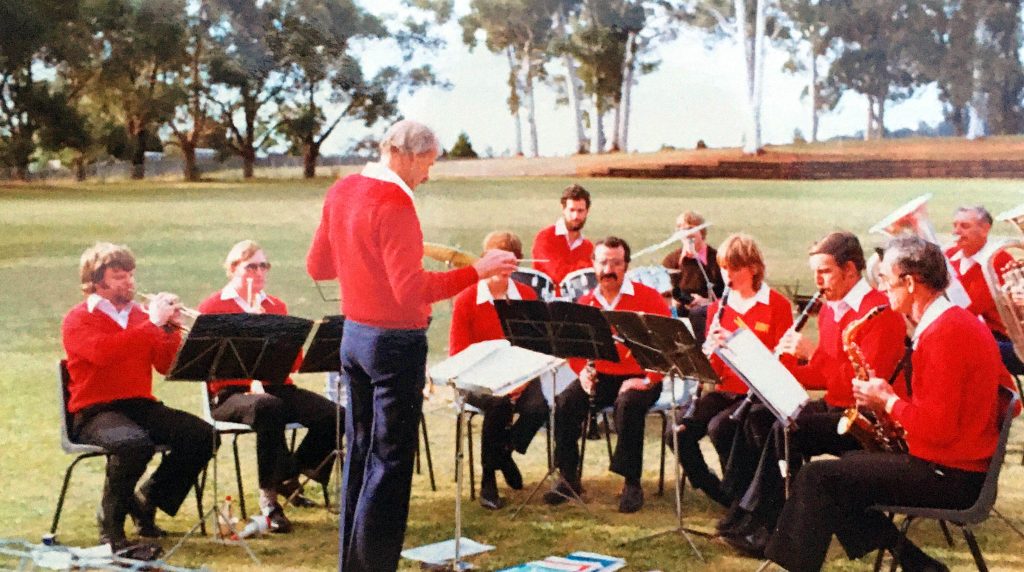
After Herb Crossman heads towards retirement from the Beechworth Police – and from his leadership of the popular Beechworth Music Group – his son Geoff takes over the orchestra – founded by his parents in 1963 – renaming it the Beechworth Concert Band, along with changing their style of play and music list. With a membership of up to 40 local musicians at any given time, the Beechworth Concert Band play at events like the annual Golden Horseshoes Festival held over the Easter long weekend.

1974 – Jul

The Beechworth Council proposes naming a street ‘Joss House Lane’ as it stands in the area that was once home to Beechworth’s Chinese community – dubbed ‘Little Canton” – and featured four ‘Joss Houses’ (Chinese Temples). When community objections to the name arise, Darryl Higgins – who lives opposite the end of the small street – suggests “China Street”, “Temple Street” or “Harvey Street” (after Burke Museum curator Roy Collington Harvey who had passed away in 1971). Of these suggestions, “Temple Street” is chosen and the name is applied to the street, which runs between Hodge Street and Lower Stanley Road near Lake Sambell.

1974

The Beechworth Football Club – the ‘Bombers’ – win another premiership, this time beating reigning premiers North Wangaratta by 44 points in the Grand Final at Chiltern. One of the star players on the Beechworth team is Kevin Rhodes who is an inmate at Beechworth Gaol at the time, but is “let out” on game days to play with the Bombers!

| When he completes his sentence at the Gaol, Rhodes stays on in Beechworth and becomes one of the Bombers most dependable players in what is a successful era for the club. They win another flag in 1979 (defeating Whorouly) and contest Grand Finals in 1975, 1976, 1978 and 1983. |
1974 – Dec

The episode “Dying Deposition” of the popular Crawford Productions television series “Division 4” is filmed in and around the Beechworth Gaol. Written by Ned Kelly expert Ian Jones, and directed by John Barningham, “Dying Deposition” is episode #3 of the popular Channel Nine police drama series’ 7th and final season. The plot description is: “Two attempts on the life of a youth and the subsequent murder of his girlfriend force Det. Snr. Sgt. Vickers (Chuck Faulkner) into visiting Beechworth Gaol in an attempt to get some information from one of the inmates”.

1974 – Dec 13
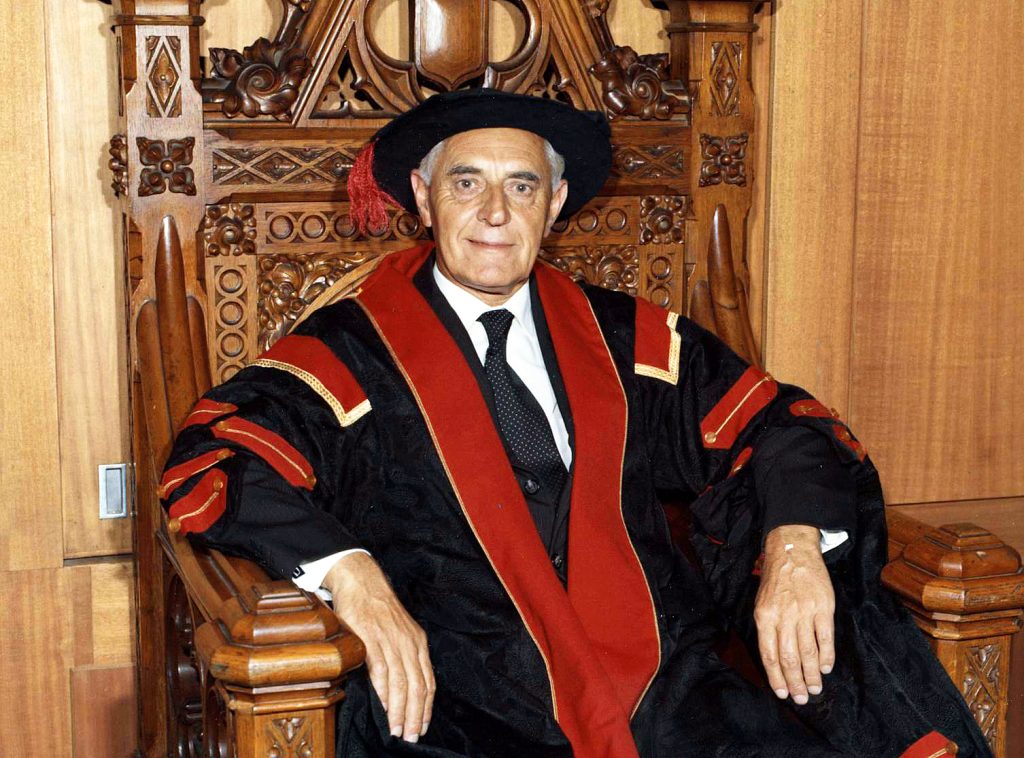
The Governor of Victoria, Sir Henry Winneke (above) travels to Beechworth to officially open the Beechworth Youth Hostel, which is housed in the former 1864-built Star Hotel in the centre of town on Ford Street. The restoration work to the former hotel – purchased in 1972 by the National Trust – has cost around $50,000, with both the United Shire of Beechworth and the Youth Hostels Association making substantial contributions. The building is leased by the National Trust to the Youth Hostels Association.

1975
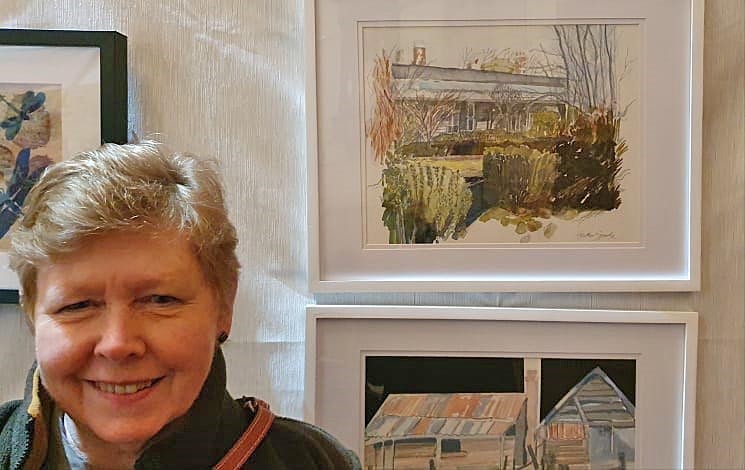
Heather Sparks – who had been an art teacher at The Scots School in Albury – moves to Beechworth with her husband Max and establishes the Settlers Art Store which they will run for the next 22 years before selling the business in 1997. Returning to Beechworth a number of years later, Heather continues to paint and has exhibited some of her works – including paintings of Beechworth’s interesting old houses (below), the town, the Gorge, and Beechworth’s fascinating landscapes.

1975
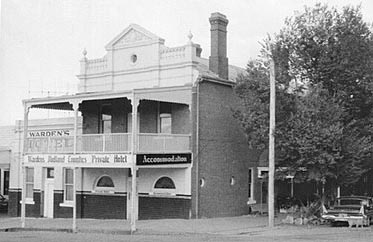
After 106 in business, Warden’s Hotel on Ford Street closes. The building – trading as Warden’s Midland Counties Private Hotel – will be purchased by Paul Conroy (Senior) who will run the former private hotel on the corner of Ford and Church Streets as accommodation for school camps, before it is taken over and refreshed by Paul Conroy Jnr in 1994.
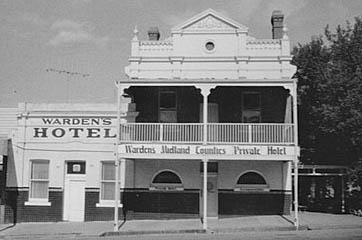
1975

Beechworth’s popular and dedicated GP, Dr Edmund Bryant ‘EB’ Collins purchases vacant land – owned by members of the Vandenberg family – on the corner of Camp and Loch Streets and builds the small Beechworth Surgery, directly across the road from his long-serving medical practice and residence. ‘EB’ Collins will soon be joined at the new surgery at 39 Camp Street by colleague Dr Cyrus James Sharpe. Initially with just one consulting room, additions and alterations will be made to enlarge the Beechworth Surgery over the coming years and others to join the surgery partnership include Dr Ross Jenner and Dr Richard Mark Smith. The Beechworth Surgery remains the town’s central medical centre to this today.
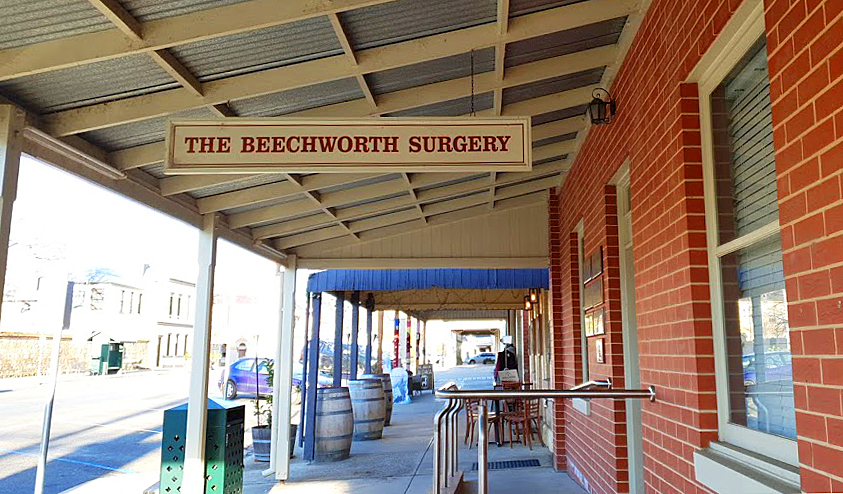
1975
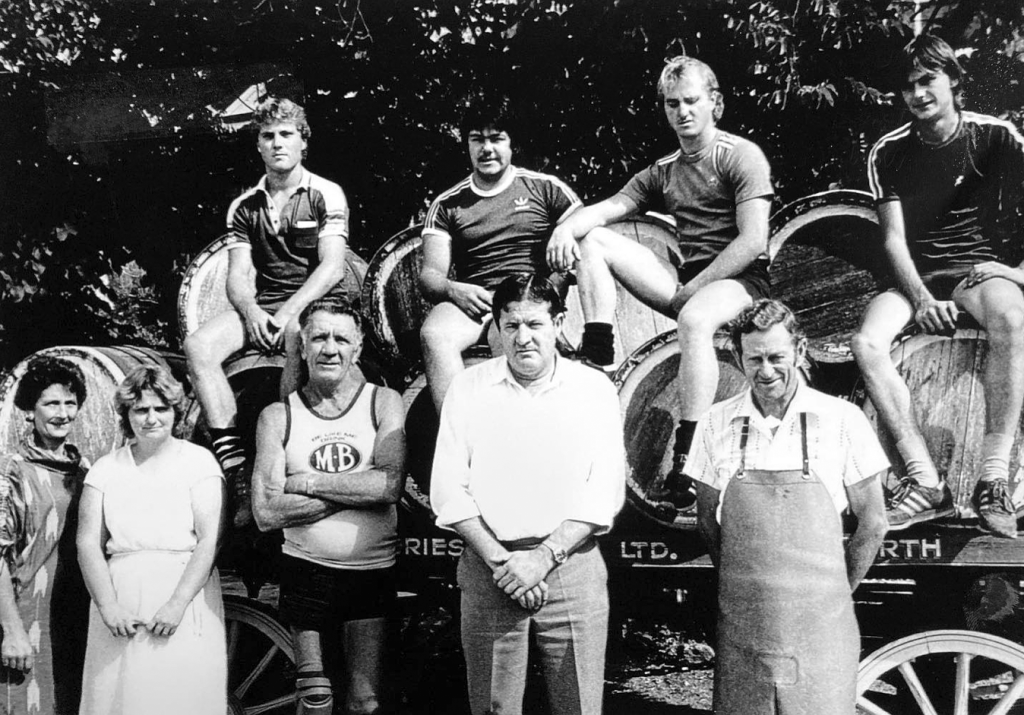
The Murray Breweries is sold to Ron Potter who refurbishes it and opens it to the public. Ron, his wife Barbara and their sons Danny and twins Tom and Bill relocate from Bendigo to Beechworth and the family will operate Murray Breweries on Last Street for the next 14 years before selling the business in 1989.
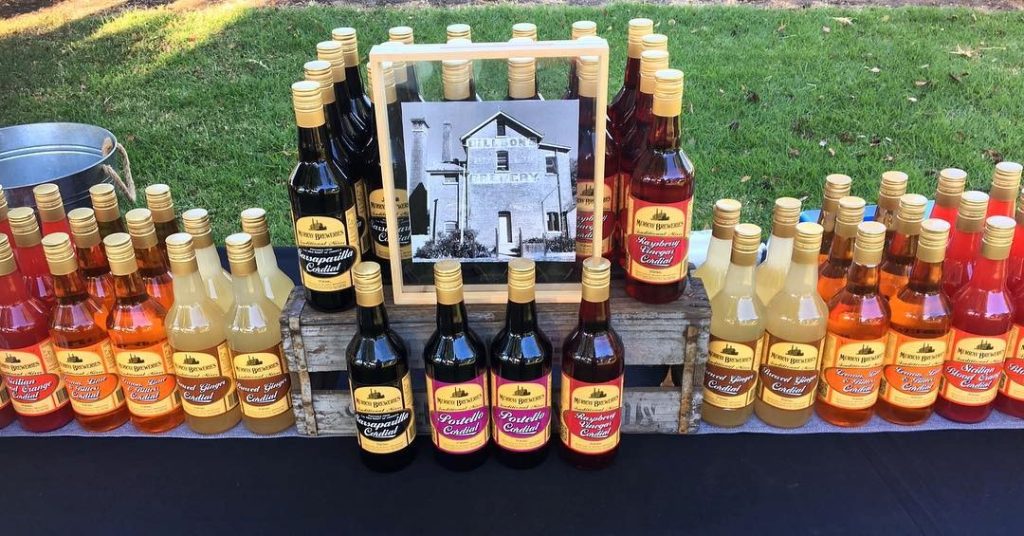

1975

A gem fossicker from Wangaratta uncovers a ‘Yellow Sapphire’ (also known as a ‘Golden Sapphire’) in Reid’s Creek at Beechworth. Once it is cut and polished, it weighs five carats and is valued at $2,000!
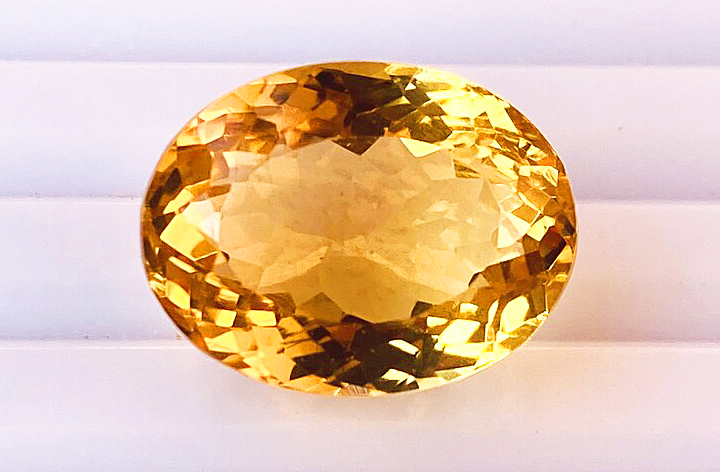
| To Beechworth’s early goldminers, gemstones are a nuisance, getting in the way of their ultimate goal of gold. But, with the introduction of electronic metal detectors – and the renewed interest of determined gem fossickers – a number of discoveries are made around the former gold mining areas in Beechworth, the Woolshed and El Dorado. Among those found are rock crystals, agates, sapphires and rubies. |
1975
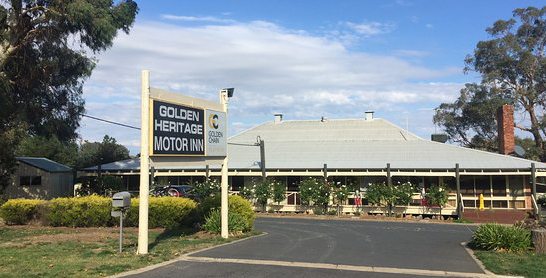
The Golden Heritage Motor Inn opens at 51 Sydney Road. It is now known as Golden Heritage Accommodation (below).

1975 – Aug 31

On the former site of the Beechworth Gas Works, Beechworth’s Senior Citizens Club building is officially opened at 1A Harper Avenue by Lions Club Charter Member Ian McGuffie. Built with the assistance of The United Shire of Beechworth, the Beechworth Lions Club and inmates from the Beechworth Training Prison, the club rooms will be further extended during 1992, with the extension officially opened on February 24, 1993.
1975 – Nov-Dec


Filming takes place in and around Beechworth for the Australian feature film “Mad Dog Morgan”. Starring Oscar-nominated American actor Dennis Hopper as bushranger Daniel Morgan along with Jack Thompson, Frank Thring, David Gulpilil, Bill Hunter and many others, locations used for the film include the Woolshed Falls, the old Stone Police Lock-Up on the Police Reserve, Ingram’s Rock, the Gunpowder Magazine and the Beechworth Courthouse. The conclusion of the film – the shooting of Daniel ‘Mad Dog’ Morgan – is done at Peechelba Station, 45 km from Beechworth, where Morgan bailed up the MacPherson family at their Peechelba Homestead on the evening of April 8th 1865, before being shot dead the following morning.
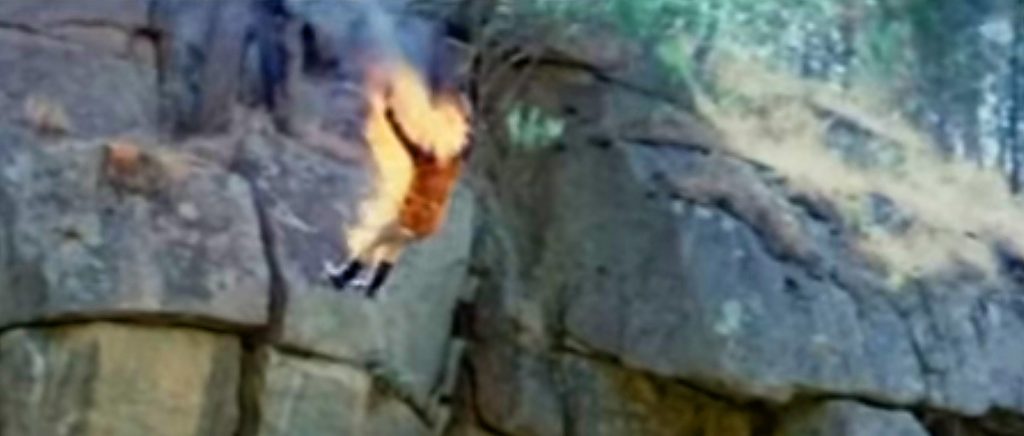
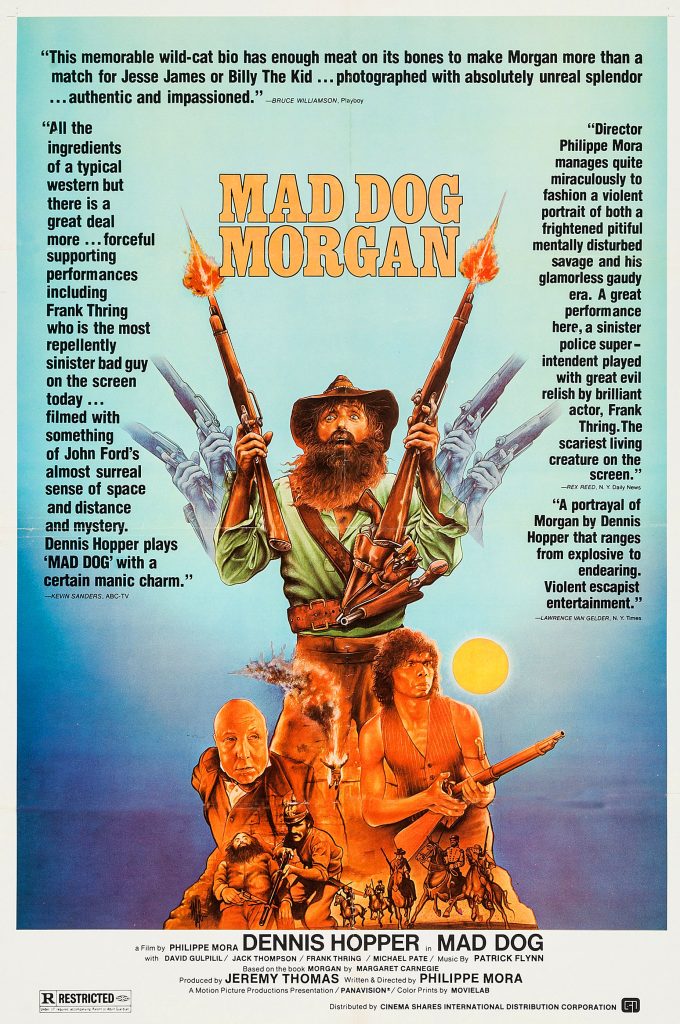
1976
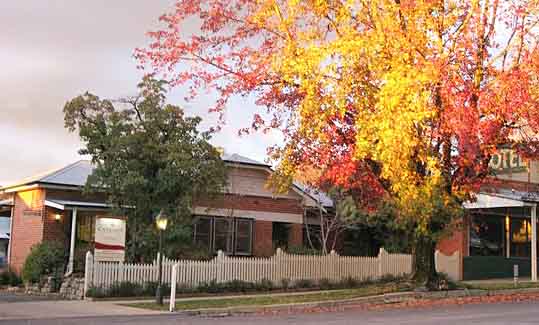
The Carriage Motor Inn opens for business at 44 Camp Street.

1976
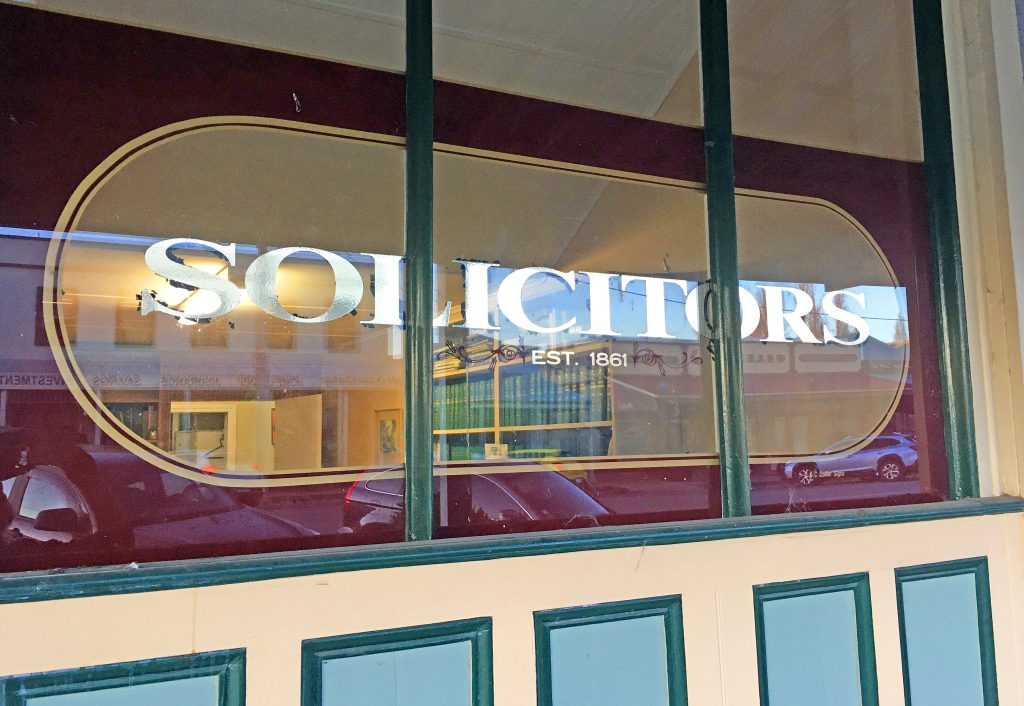
Solicitor Graeme J. Bailey joins David McKenzie-McHarg O.B.E. at his legal practice at 22 Camp Street, with the firm renamed McKenzie-McHarg & Bailey Solicitors. The historic building has been operating continuously as a Solicitor’s Office since 1861.
1976
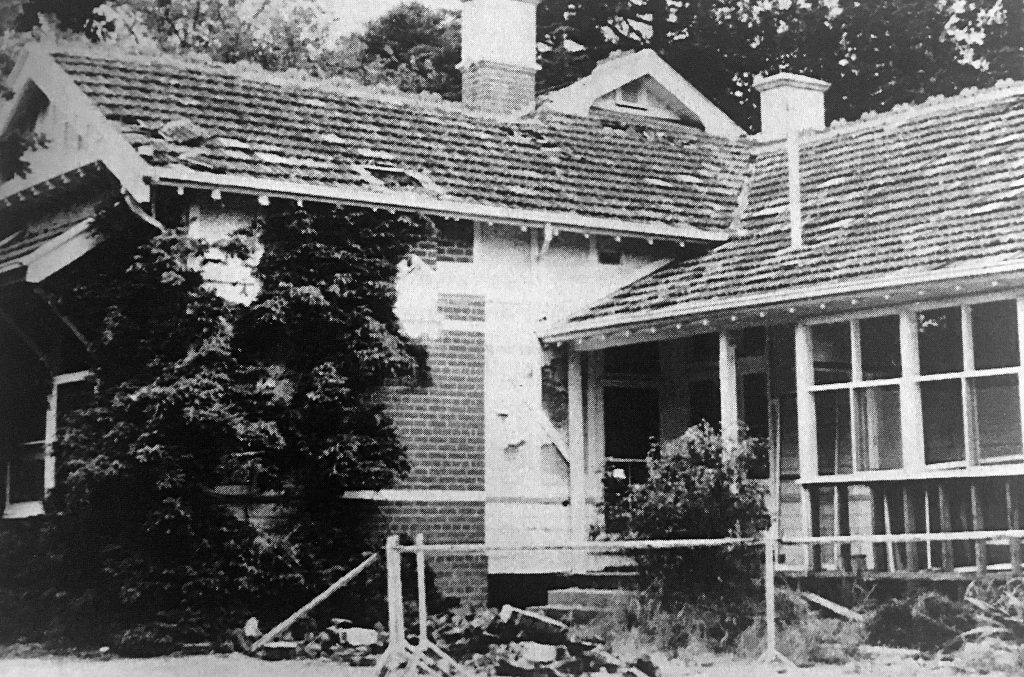
The 1907-built Psychiatrist Superintendent’s Residence at the Mayday Hills Asylum is demolished to make way for a new building – the Kerferd Clinic. Standing at 22 Oak Avenue on the Asylum grounds, it will function as a psychiatric treatment centre. The 1976 Kerferd Clinic building later houses the George Kerferd Hotel (below) before becoming the Grand Oaks Resort in 2023.
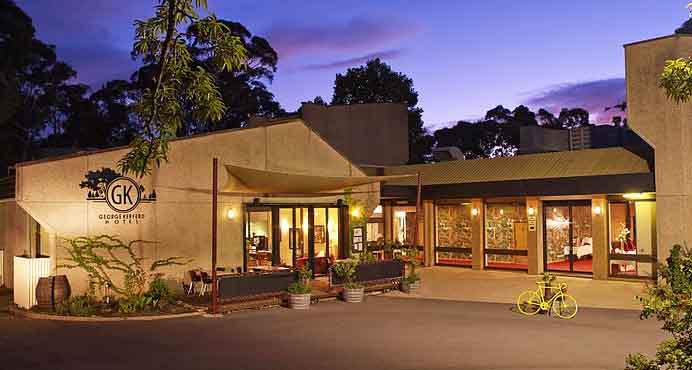
1976 – Dec 30

After rail traffic between Wangaratta and Beechworth is reduced to just two trains a day in the mid-70s, the Victorian Government undertakes a program of regional branch line closures across the state. The Beechworth branch line is officially closed at the end of 1976, however one last train trip – an enthusiasts’ special – runs on January 3rd, 1977 (pictured below).
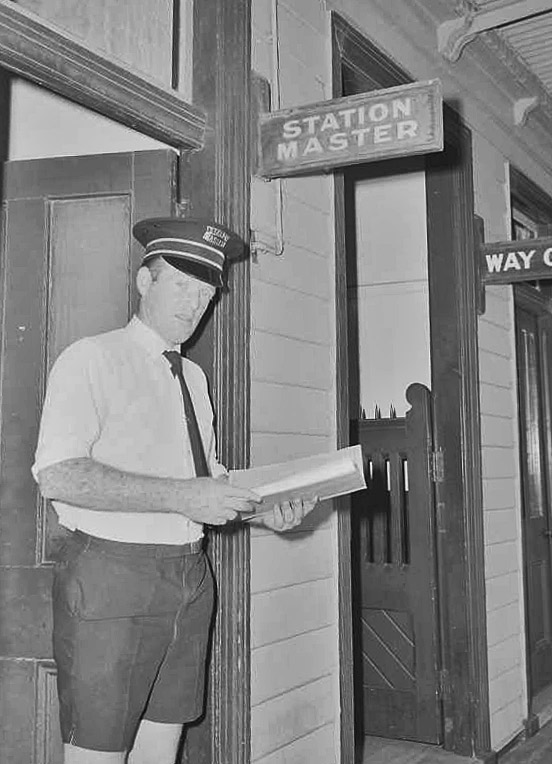

| The final ‘enthusiast’s special’ rail trip runs from Everton to Beechworth and back to Everton, where the enthusiasts hold a final ceremony and celebration. After 101 years of service, the rails are almost immediately pulled up after the special train clears the points at Beechworth. |
1977 – Jan

After first being proposed by the Beechworth and District Progress Association and its President Roy Collington in 1953, construction finally begins on a heated ‘half-size’ Olympic Swimming Pool at the Wallace Park Reserve. The work is carried out by members of the Beechworth Community, members of the combined Beechworth Social Clubs and inmates from the Beechworth Training Prison. It will be completed by the beginning of December 1978.
1977

Following the merging of the Methodist and Congregational Churches with the Presbyterian Church into the Uniting Chuurch in Australia, the Beechworth Shire Council purchases the two empty churches. The now united congregations of the Methodist and Congregational Churches agree to meet at St. Andrews Presbyterian Church (Uniting Church) at 115 Ford Street, on the corner of Ford and Williams Streets.
1977

Susan and Allan Fox open the Buckland Gallery at 86 Ford Street. They have taken over the beautiful old Bank of Australasia building from Ross Parkinson who has been running his silversmith business from the building.
| When the ‘Buckland Gallery’ moves to 31 Ford Street in 1983, the historic building is converted to the ‘Australasian Tea-Rooms and Antiques Store’ followed by ‘The Bank Restaurant & Mews’. Since 2009 it has been the home of the ‘Provenance Restaurant’. |
1977 – Jan 29

In the midst of six-month long drought, in a blistering summer, a series of bushfires break out around Beechworth, destroying over 1,000 hectares of land. 40 fire units arrive from around the district to fight the fires, along with personnel from the Forestry Commission and inmates from the Beechworth Training Prison. Fortunately, the fires do not result in any loss of life or serious destruction of homes or major buildings.
1977 – Jul 9

St. Joseph’s Catholic Church is badly damaged in a Saturday morning fire, with the Lady Chapel being the worst affected. Church services are temporarily moved to the Anglican Christ Church next door. An appeal is quickly launched, and restoration work begins. St Joseph’s finally re-opens on 19 November 1978 and is blessed by Bishop Bernard Stewart from Bendigo.

| Around the same time, a separate fire also causes damage at the Beechworth Training Prison, but the repairs to fire damage will lead to several improvements. |
1977

Beechworth’s Mayday Hills Psychiatric (Asylum) Hospital is proclaimed under the ‘Mental Health Act 1959’ and the Kerferd Clinic – for the short-term psychiatric care of distressed people – will be added the following year. However, by the late 1980s and early 1990s the development of other residential options – day placements, education, employment, and recreational opportunities – mean the Asylum now has fewer clients/patients. By 1992, all intellectual disability patients have been removed from the Asylum and placed in other forms of accommodation, and by 1993 the Mayday Hills Psychiatric Hospital has a capacity for 130 beds, with only 20 available of acute adult patients and more than 70 geriatric patients.
| At its peak 100 years earlier, the Beechworth Lunatic Asylum had been home to over 1,500 patients and 750 staff. |
1978

Douglas Brockfield takes over the long-running White Star Dry Cleaners shop at 69 Ford Street from Betty Hornsey (nee Borschman). The business had been established by the Wells family.
1978 – Jun 13
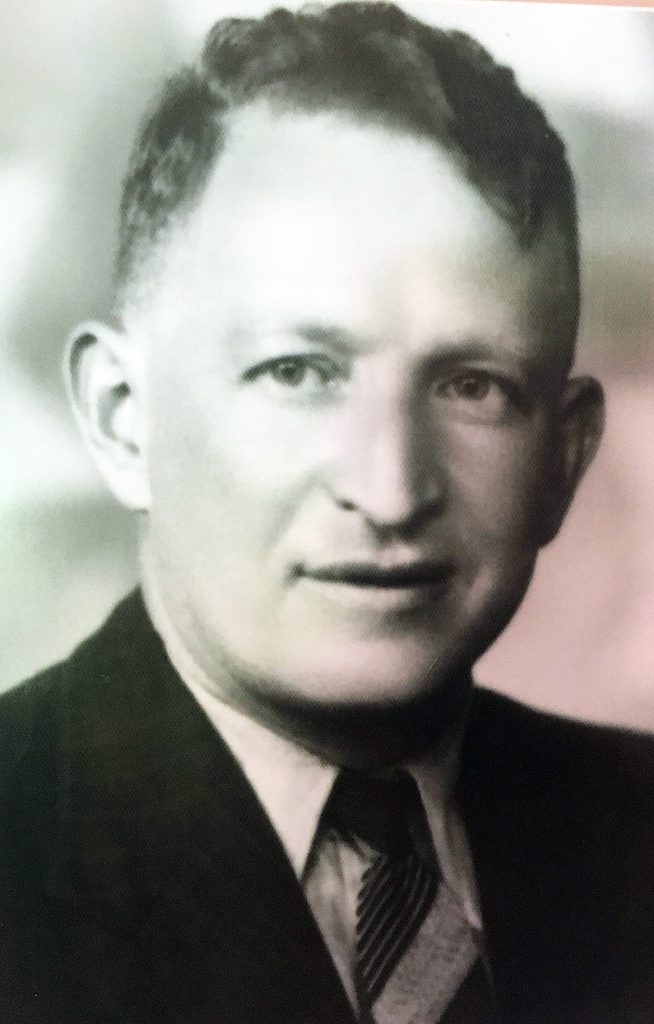
Michael ‘Micky’ Isaac Freeman passes away aged 83. Born Michael Friejman in Poland in 1894, Freeman made a big impact on Beechworth after establishing his original Freeman’s Bargain Draper store on Ford Street in 1938. Over the years the Freeman’s Store becomes one of Beechworth’s biggest and most reliable retail shops.
1978
Designed for the short-term psychiatric care of distressed people from North-East Victoria, and at a cost of over $1 million, the Kerferd Clinic becomes part of the Mayday Hills Psychiatric (Asylum) Hospital.
1978

Anthony McNeil purchases the building at 55 Ford Street which has been operating as a café. He converts the ground floor of the two-storey building – built in 1865 as Gammon’s Medical Hall – into the Beechworth Laundromatt (above).

1978

With the encouragement of John Brown Jr of Brown Brothers, Pete and Di Smith establish a new 3.3 hectare vineyard in Beechworth, planting Chardonnay and Cabernet Sauvignon. The Smiths Beechworth Winery and Vineyard is at 27 Croom Lane, off Diffey Road.
| In 2003 the winery and vineyard is taken over by their daughter Sarah and her husband Will Flamsteed. Will and Sarah make their first Beechworth Shiraz in 2006, while their Heathcote Shiraz is a response to the smoke taint and frost damage of 2007. Smith’s Vineyard will be acclaimed for its chardonnay as well as cabernet, merlot and shiraz. The vineyard is predominantly chardonnay (1.8ha), with some cabernet sauvignon (1ha) and merlot (0.5ha), which make the estate wines. |
1987 – Dec 2

At a final cost of $160,000, the Beechworth Public Swimming Pool is completed and officially opened by Brian Dixon M.P. the Victorian Minister for Youth, Sport and Recreation in the Wallace Park Reserve.

1978 – Dec 17

The Chapel of the Resurrection is officially dedicated at the Mayday Hills Asylum. The building had originally been built as the Asylum’s Morgue! Today it is a popular place to hold small weddings.

1979

The Beechworth Singers is established by Father John Stockdale of Beechworth’s St. Joseph’s Catholic Church, with the reins soon handed over to Ian Hyndman who will direct the Beechworth Singers for the next few years before Albury pharmacist David Carolane (above) takes over the baton. Carolane – who will receive an Order of Australia Medal for his service to music (particularly choral music) – will lead many choirs in the district over the years, including the Murray Conservatorium Vocal Consort, Murray Conservatorium Choir, the Wangaratta Choristers, the choir of St Matthew’s in Albury, as well as establishing the Tudor Choristers (in 1962) and Three Choirs Festival Australia. The Beechworth Singers continue to perform concerts and recitals to this day.
| David Carolane OAM dies peacefully at home on Friday 28 January 2022 at the age of 91. |
1979
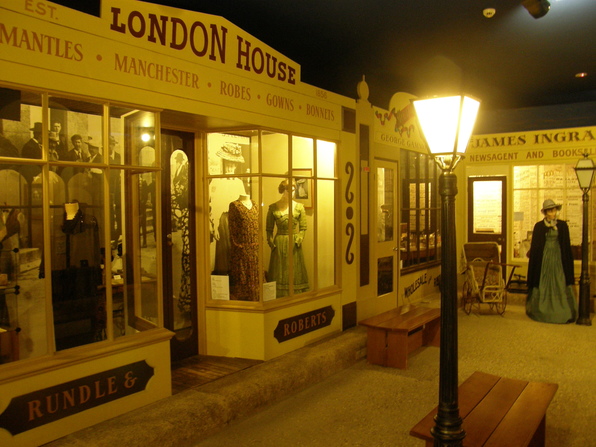
The Burke Museum unveils a permanent “Street of Shops” exhibit within the museum. The vision and creation of late curator Roy Collington Harvey, the 16 recreated shopfronts and the authentic products and artifacts displayed in their windows, many donated by the Beechworth community, “reflect another period in museology”. It continues to be one of the most popular attractions for visitors to the museum.
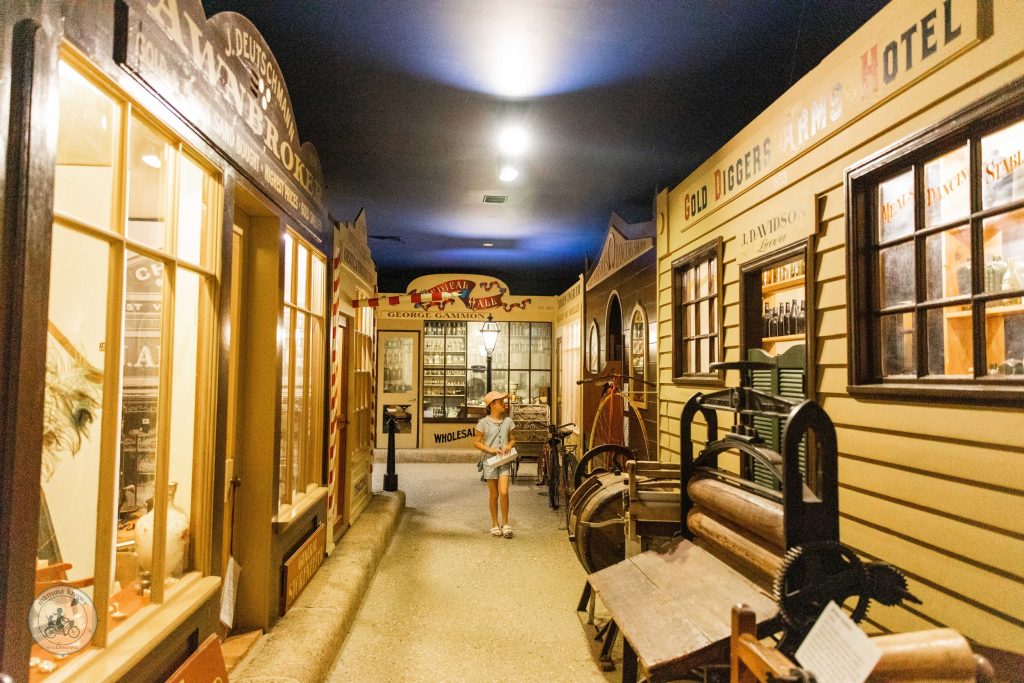
| Curator Roy Collington Harvey passed away in 1971, never getting to see the completion of his “Street of Shops” concept. A true lover of Beechworth’s history, Harvey had complied the book ‘Background to Beechworth from 1852‘ for the celebration of 100years of European settlement in Beechworth in 1952. The book has since been reprinted numerous times. |
1979
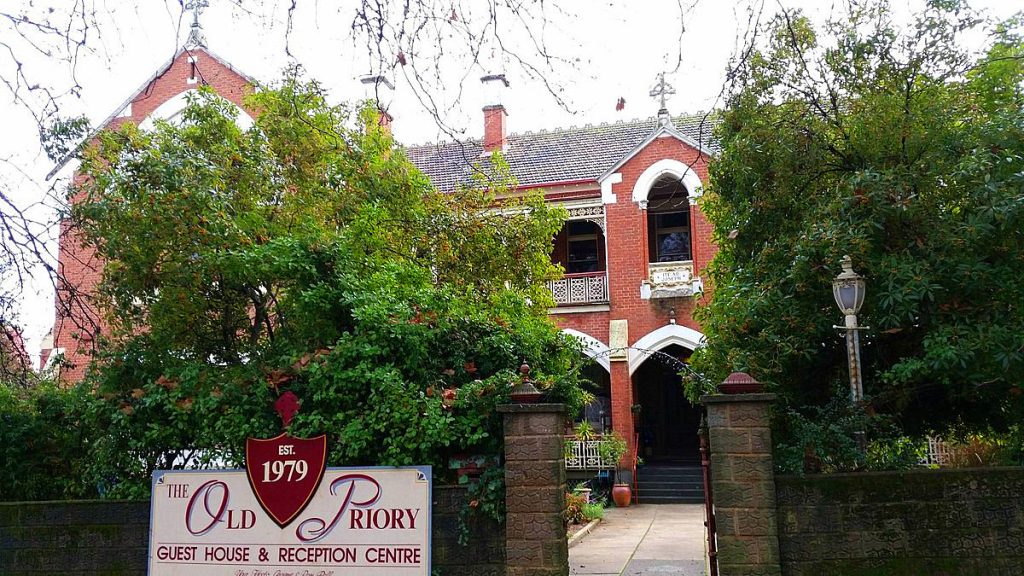
Following its closure in 1978, the Brigidine Convent & Boarding School on Priory Lane is sold and re-established as a guest house called The Old Priory.
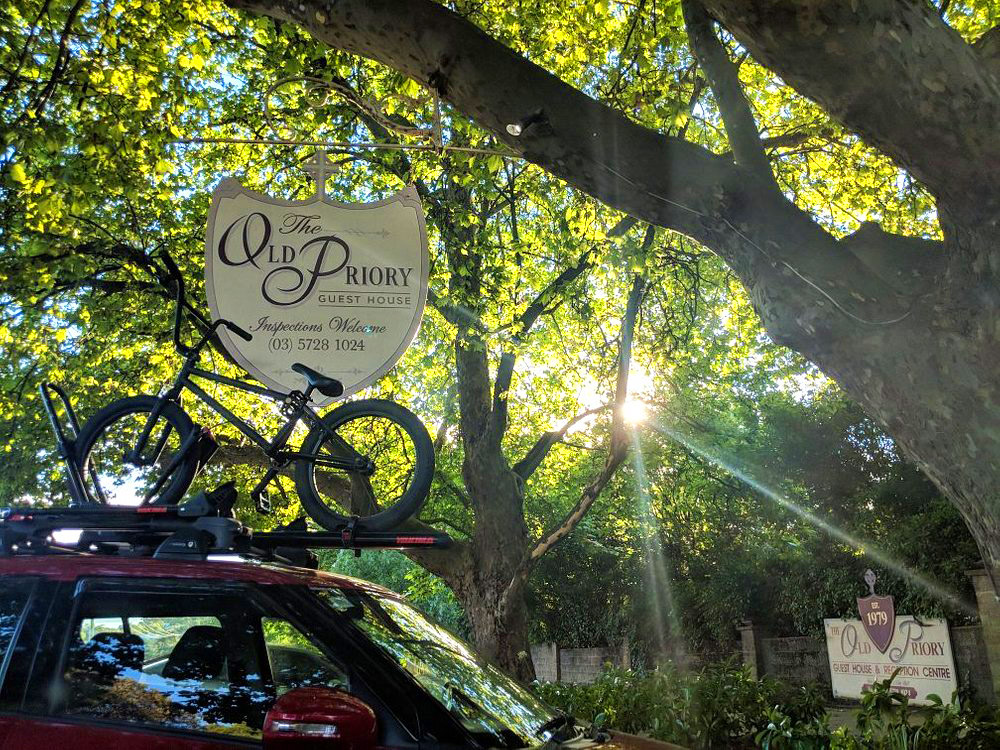
1979

Starting with one truck, Evan Russell Taylor establishes Taylor’s Transport at 5 Loch Street. As the business expands and he adds to his fleet of trucks, in 1989 Taylor will move his trucking company depot to a large area at 1617 Diffey Road. At the same site he will later add additional businesses – Beechworth Concrete and Beechworth Sand & Soil, supplying the town with gravels, rocks, stones, pebbles and soils.

1979

The Beechworth Theatre Group is established. In 1984 it will be incorporated and become known as the Beechworth Theatre Company. The amateur ‘BTC’ will put on a number of productions over the next two decades but support will eventually dwindle and the company ceases operations in 1991 (before a ‘re-birth’ in November 1996 – see entry further below).
| The first ‘Beechworth Dramatic Society’ is founded in May 1866 with their inaugural production being John Maddison Morton’s “All That Glitters is Not Gold” followed by the one-act farce “Ici on Parle Français, or Lodgings to Let” by Thomas John Williams. It is staged at the ‘Star Theatre’ on Ford Street on Thursday June 28th with all funds raised donated to the ‘Ovens District Hospital’. |
1979

Valerie (Val) Mason becomes the first female President of the United Shire of Beechworth and will serve two terms in the position. A local sheep farmer and businesswoman, Val became concerned with improving infrastructure and developing economic opportunities in the region and stood for local council, winning her seat of South Riding in the United Shire of Beechworth, becoming one of the first women to broach the traditionally all-male Beechworth Council Chambers. She will serve as a councillor for nine years before being elected President.
| With her husband, Charles Mason, Valerie developed and manages the Big Valley farm estate at Everton and is instrumental in introducing a ‘paddock to plate’ philosophy and business model, opening a butcher shop on the farm in 1973. Val is a member of the local Business and Professional Women’s Club for 37 years. |

1979 – Jun 3

The new Beechworth Ambulance Station is officially opened by Dr John F. Wiseman, Chief Medical Officer (Hospitals Division) of the Health Commission of Victoria. Standing on the corner of Finch and Fredrick Streets, its official title is North Eastern Ambulance Service – Beechworth Branch.
1979
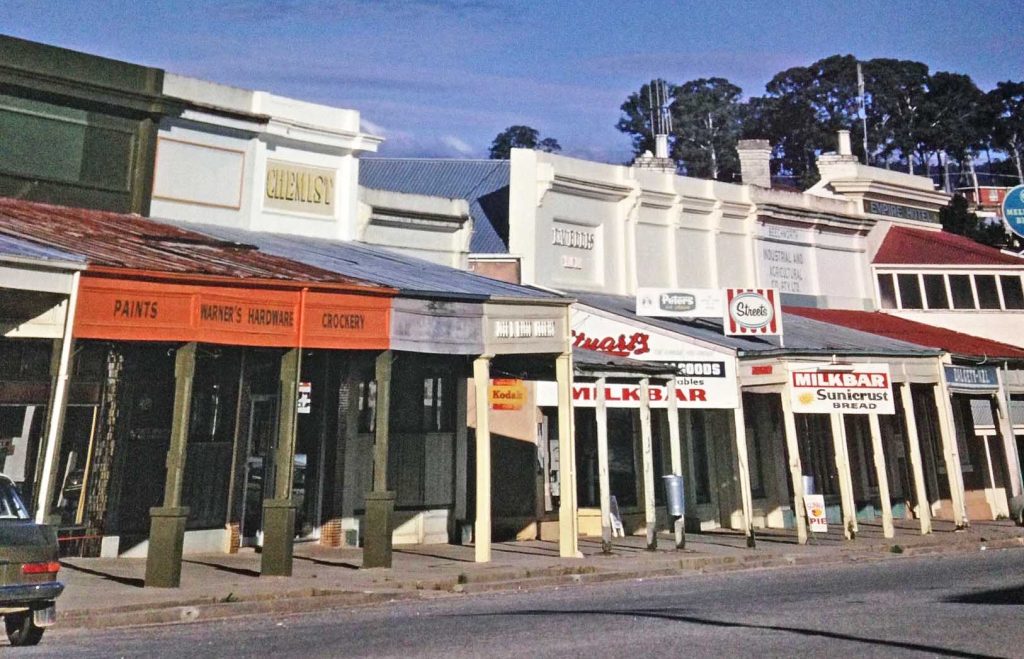
After 24 years running Warner’s Hardware Store at 24 Camp Street, 58-year-old Ernie Warner retires following the sudden death of his wife Eileen, and sells the business. Under new ownership it will continue to trade as ‘Beechworth Hardware’, reverting to its original name – ‘Ovens Hardware’ – in 1983, before closing in early 1991. The Beechworth Emporium will then establish itself in the building in September 1991 and still trades at 24 Camp Street today.

| In 1992, Jim McCormack will construct a new hardware store on land at 4-6 Camp Street. The ‘True Value Hardware’ store will be operated by Simon Turnbull. It remains Beechworth’s central hardware, timber and garden centre today. |
1980
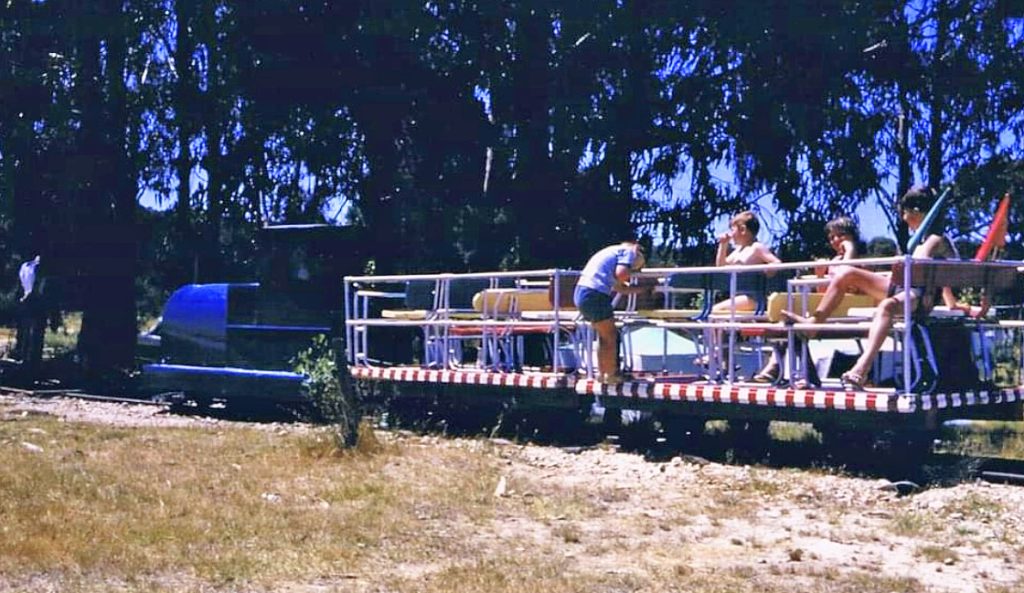
As The Golden Pioneer Railway’s little imitation steam locomotive – the WM Meldrum (built in the 1960s by Don Hayes and Rex Norman) – becomes less reliable, and the railway’s two mainstays Don and Rex become less available, the tourist attraction around the Beechworth Caravan Park at Lake Sambell eventually runs out of steam and sadly closes.
| After the railway tracks are dismantled, they are stacked in a corner of the Beechworth Council Depot at the south end of town. The whereabouts the little engine ‘WM Meldrum’ and the trucks (open air carriages) are unknown. Holiday cabins now occupy the land at the ‘Beechworth Caravan Park’ where the little railway station once stood (see below). |

1980
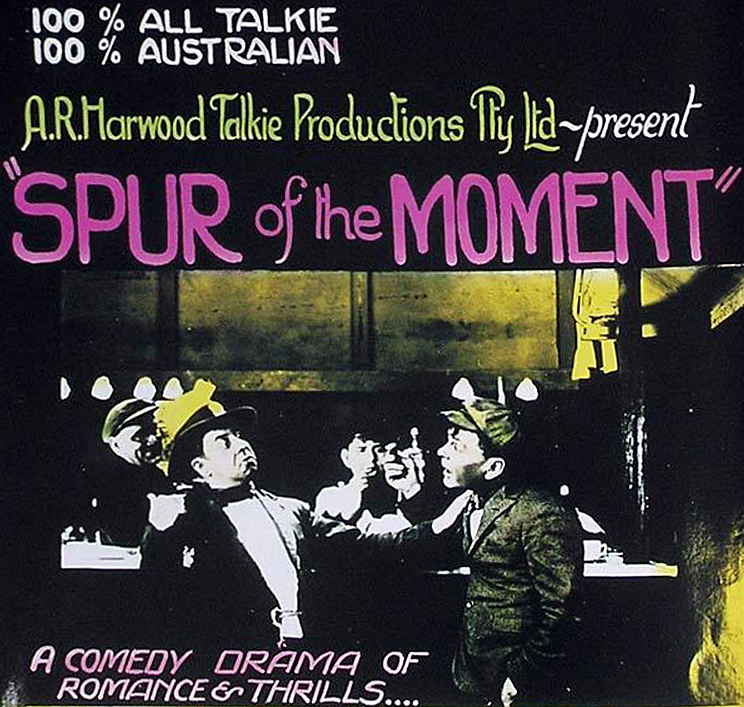
Alexander Roy ‘Dick’ Harwood dies in Beechworth. One of Australia’s pioneer film exhibitors, producers and directors (as A.R. Harwood), he introduced “talkies” to the nation, including “The Man Who Forgot” (1927), “Isle of Intrigue” and “Spur of the Moment” (both released in 1931) filmed in and around Melbourne. He is buried in the Beechworth Cemetery.
1980 – Dec
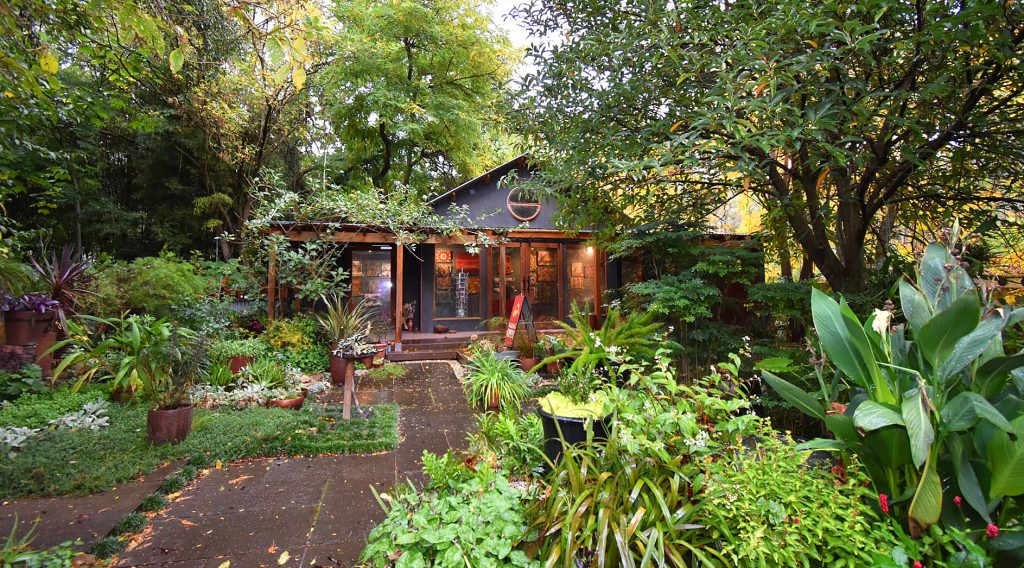
Tina Fraser and Gavin Doherty purchase 22 acres of land 15km from Beechworth at 980 Beechworth-Chiltern Road on which stands a simple relocated army hut, with no plumbing or electricity. The property looks out to a wooded escarpment of rock formations and rock shelters and is within walking distance of the famous ‘Yeddonba Rock Paintings’. Over the next 10 years Tina and Gavin renovate, add and extend the old army building, turning it into a lovely home. Surrounded by the Chiltern-Mt Pilot National Park (between Beechworth and Chiltern), they begin to plant and develop 5-acres of land around the house into a beautiful and lush garden, which quickly attracts lots of birdlife. In 1990 Tina and Gavin will open their property to the public as the Out of Town Nursery and Humming Garden.

| The location of the garden is at Gidley’s Gap, where ‘The Gap Inn’ once stood. Run by Thomas and Winifred Gidley, ‘The Gap Inn’ (which was burnt down three times with some loss of life) had a rather shady past (and was often referred to by locals as ‘Inn of the Forty Thieves’!) as Gidley was an infamous cattle rustler and was well known to the Ned Kelly gang. Both Thomas Gidley and Ned Kelly spent time in Beechworth Gaol and in 1873 Gidley was sentenced to two years hard labour for perjury. |
1981

Paul McLaurin purchases 53 acres of the Golden Ball property – established by Isaac Phillips in 1857 – at 1175 Beechworth-Wangaratta Road, Everton Upper. Located beside Hodgson’s Creek, it was the home of Isaac’s famous Golden Ball Hotel. A few metres away stands the Golden Ball Bridge, named in honour of the property and the hotel.
1982

The Brigidine Convent at 8 Priory Lane – which had been converted into The Old Priory Guest House in 1979 – is sold to Terry and Wendy Barnett who convert it into an environmental, educational and conference centre, specialising in school camps.
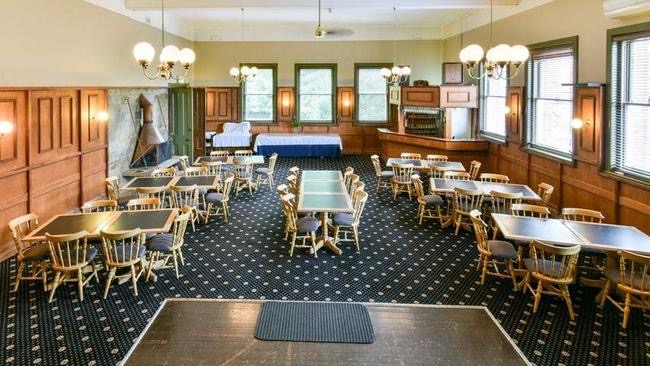
1982

After purchasing land in 1980 on McClay Road at Everton Upper – 13 km from Beechworth between Everton Hills and Beechworth – Rick Kinzbrunner begins planting Cabernet and Chardonnay vines and creates the Giaconda Vineyard and Winery. By 1985 he has produced his first vintage. Rick had previously spent four years under Warren Winiarski at Stag’s Leap Wine Cellars in California’s Napa Valley and had also made wine in Sonoma, Bordeaux and New Zealand before returning to Australia in 1980 to take up a position as assistant winemaker at Brown Brothers in Milawa.
1982
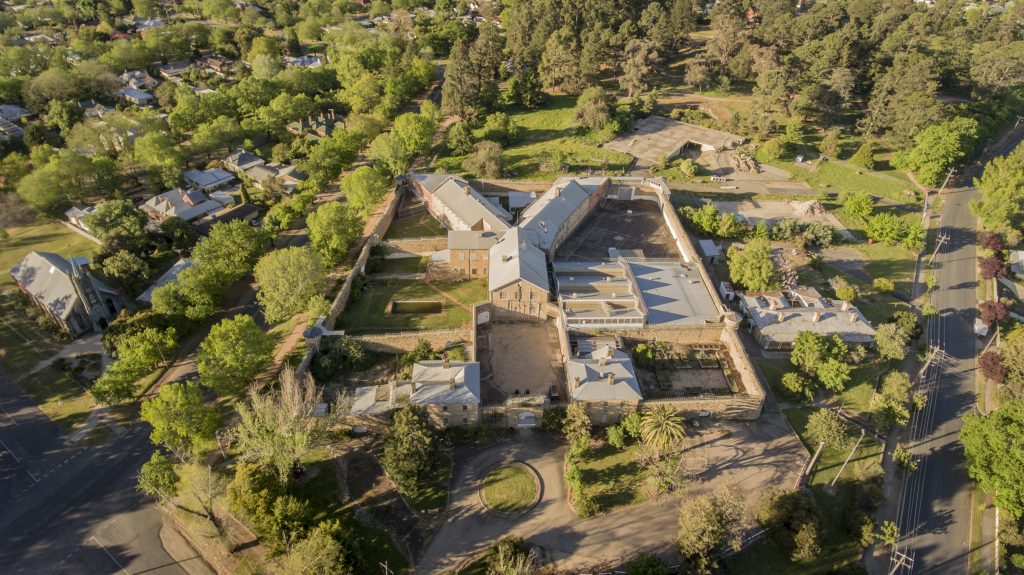
Beechworth Gaol is registered as a ‘heritage place’.
1982

Elizabeth and Stephen Newton Morris establish the Pennyweight Winery just south of Beechworth at 13 Pennyweight Lane. They will produce a range of solely estate grown table and fortified wines including apera (sherry). Pennyweight is named after the rich Pennyweight Flat gold field discovered in 1852, which the winery overlooks.

| Stephen’s great-grandfather George Francis Morris is a successful baker and general merchant in Camp Street, Beechworth (as well as Woolshed and Sebastopol Flat). By the age of 25, having made his fortune, George purchases property at Brown’s Plains just east of Rutherglen in 1859 and builds a beautiful home named ‘Fairfield House’ after the suburb in Liverpool, England where he had studied. By 1860 he has established the Morris name in the wine industry. His son Charles Hughes Morris establishes ‘Morris Wines’ at ‘Mia Mia’ vineyard in Rutherglen at the turn of the century and his son Frederick Hughes Morris is a partner in ‘Morris Wines’ at ‘Mia Mia’ until the winery is sold in 1969. |
1982 – Oct
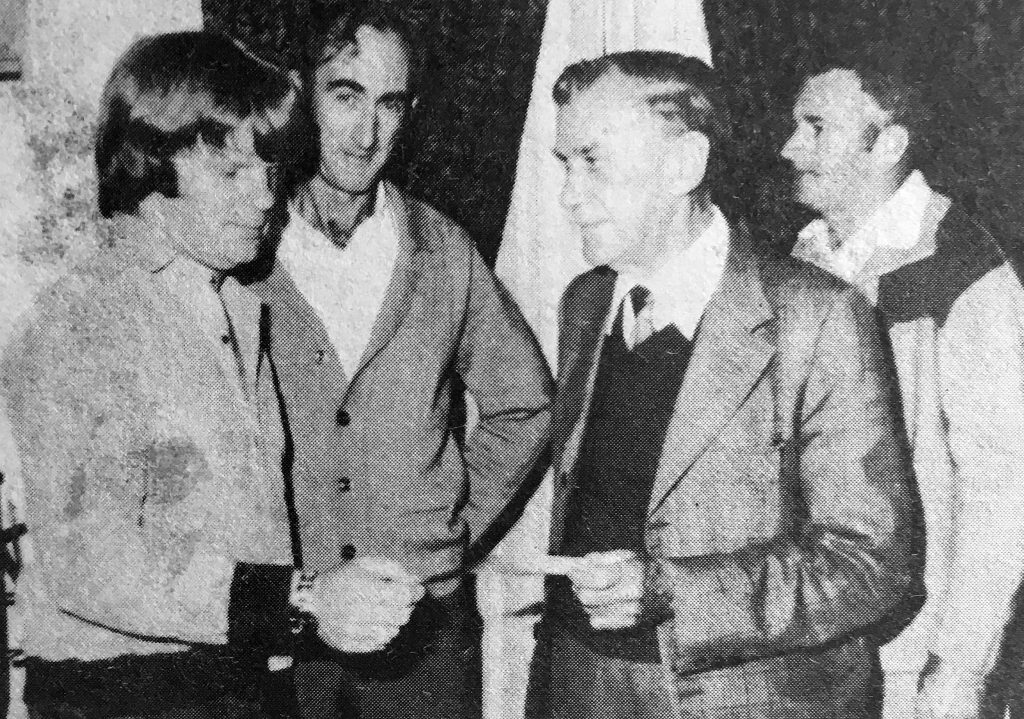
The End of an Era – Five of the remaining members of the Beechworth Town Band hand over a cheque to the Beechworth Music Group’s Concert Band, marking the official end of the Beechworth Town Band after over 100 years. The $2,000 payment is made up of the remaining funds in the old band’s account and they are entertained during the ceremony by the new Concert Band in fine style. Held in the Bandroom upstairs at Herb and Joan Crossman’s Rock Cavern, the new band plays a wide variety of music, including one of the Beechworth Town Band’s old favourites, the ‘Colonel Bogey March’.

1983
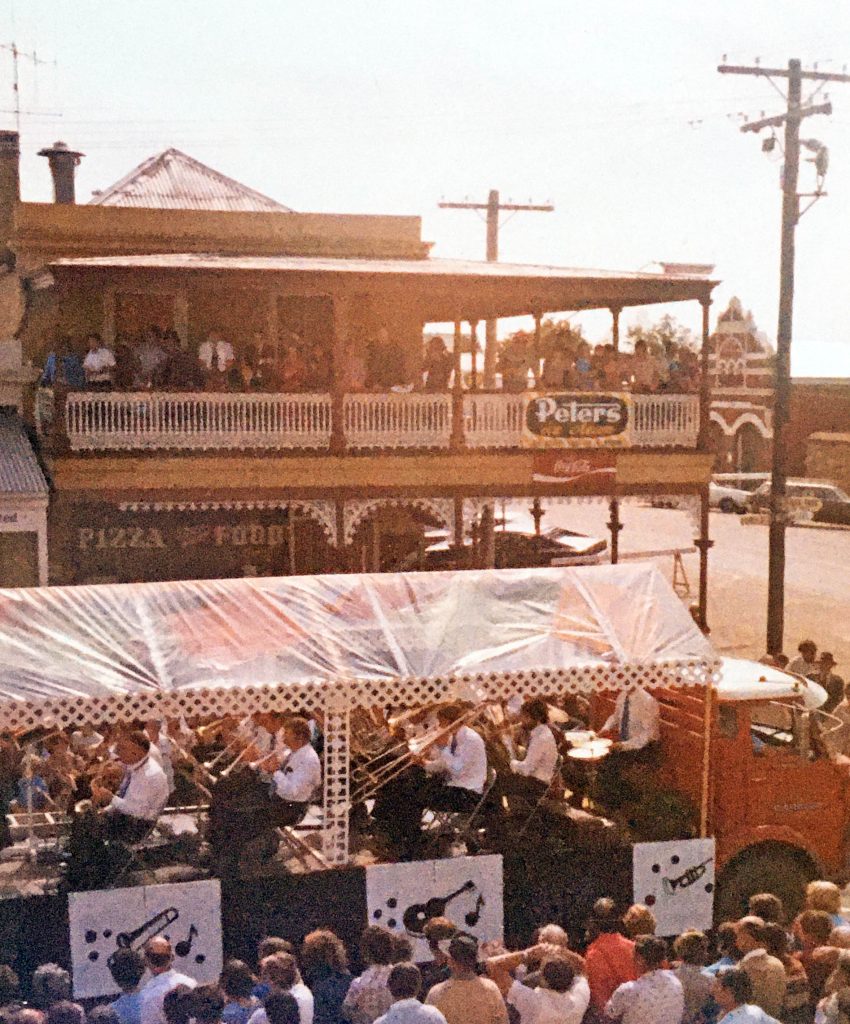
The Beechworth Concert Band, under the direction of conductor John Green (who has taken over from Bob Charlton), continues to perform in Beechworth and beyond, participating in the innovative ‘Band Spectacular’ at the Wangaratta Town Hall on the last day of July.
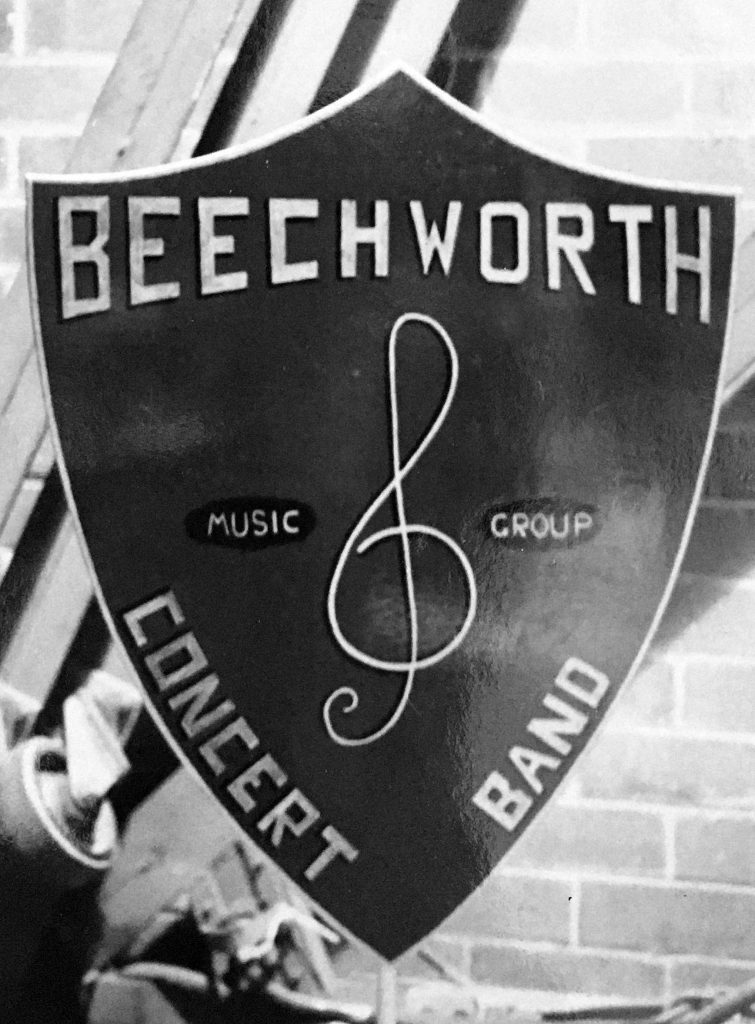
| The ‘Concert Band’ is part of the ‘Beechworth Music Group’ founded by Herb and Joan Crossman in 1963. From the early 1970s until the mid 1990s band members practice every Monday evening in an upstairs ‘music room’ at the Crossman’s ‘Rock Cavern’ building on the corner of Ford and Camp Street. |
1983
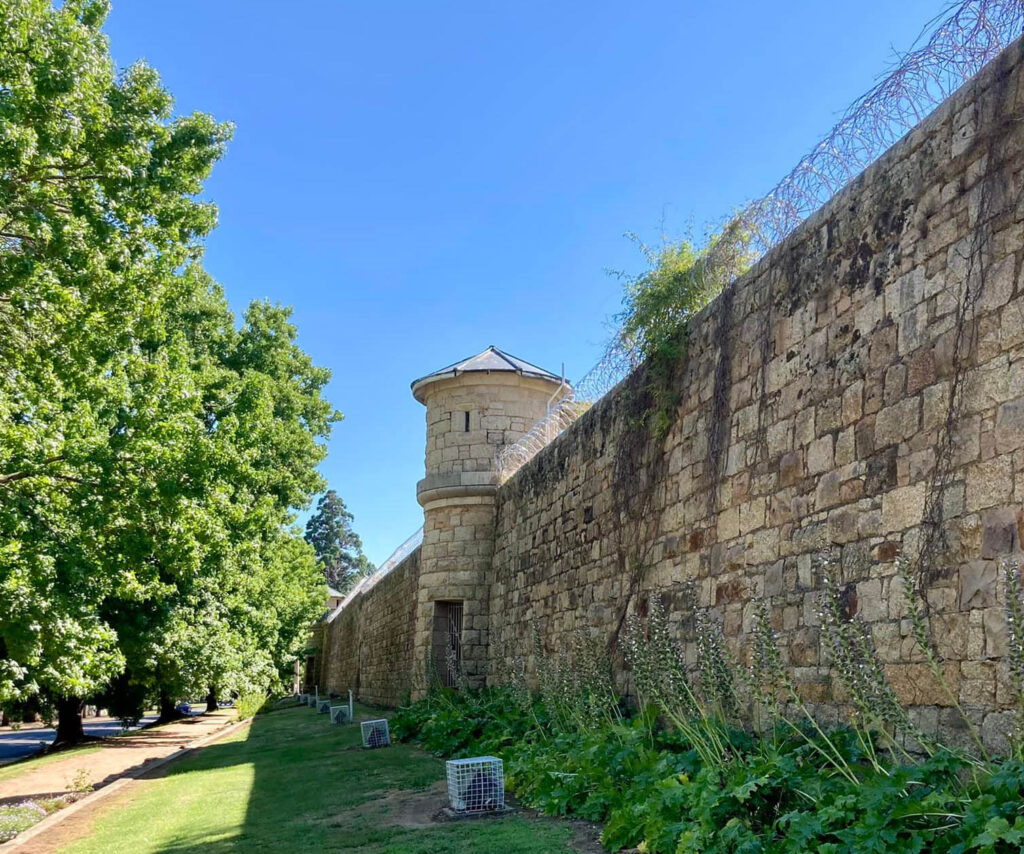
Razor wire is added all around the outer walls of Beechworth Gaol to discourage and minimise escape.

1983
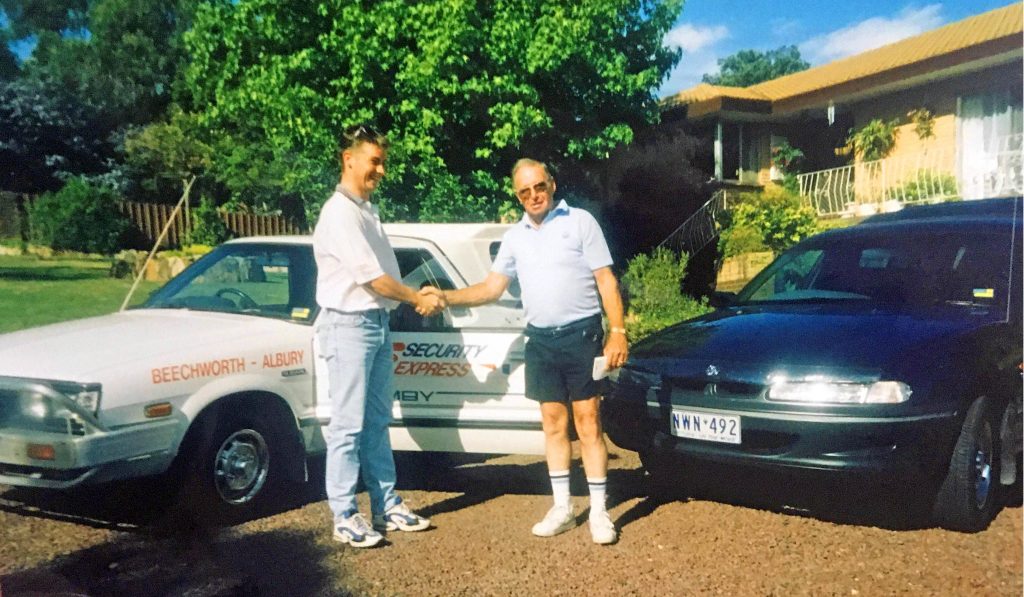
Graeme Smart establishes Beechworth Security Express to meet the daily flights at Wangaratta Airport and collect overnight bank data and posts. Sub-contracted to Mayne Nickless, Graeme will transport the information from the head offices of the various banks in Melbourne, every day, to Beechworth, Chiltern and Yackandandah. He will eventually sell the business to Neil Breen (above) and the company – which grows and expands – still operates today, as Breen’s Courier Service, now managed by Trevor Dighton.
1983

The National Trust declares the entire Beechworth township an ‘Urban Conservation Area’.
1983
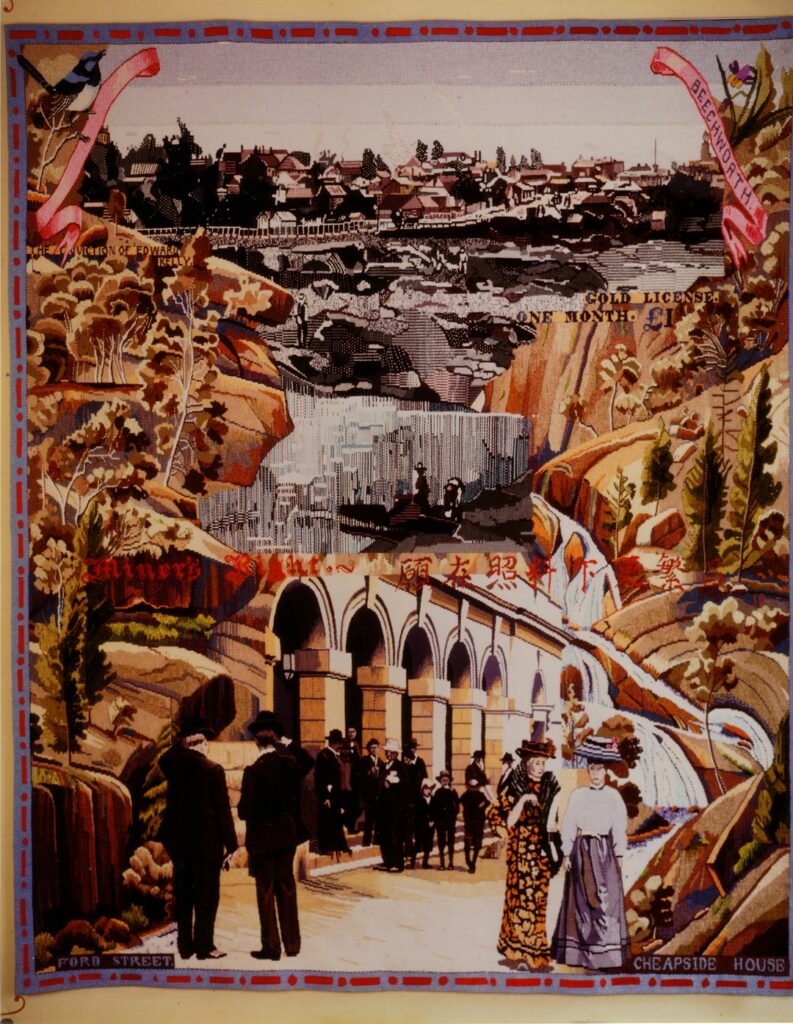
The Beechworth Arts Council commissions a large pictorial tapestry of ‘early scenes and buildings of Beechworth’ with funds raised by the community and from state and federal government grants and private donors. Designed by Leonie Bessant from the Victorian Tapestry Workshop, it is woven in wool and produced sideways on a loom.
| Completed for Australia’s Bicentennial celebrations of European settlement, the tapestry is officially unveiled on December 2, 1988, by the project’s patron, ABC-TV presenter Bill Peach and now hangs as a feature in the Beechworth Town Hall. |
1983
Following a request from local parish priest Father Stockdale, four new Brigidine nuns arrive in Beechworth and re-establish a convent and ‘House of Prayer’ in Ford Street.
1984
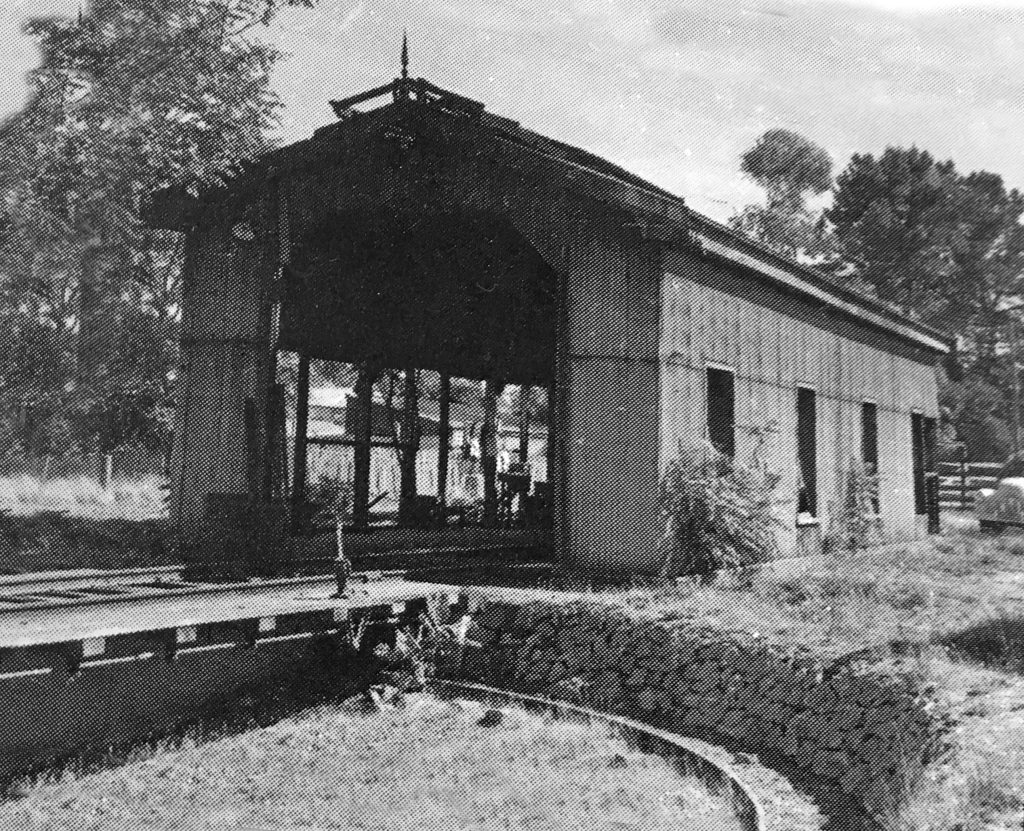
After being closed for 8 years, the Beechworth Railway Station and its assorted buildings are falling into disrepair. There is lots of talk about what should be done with the once popular and bustling site, but nothing eventuates. Eventually, the large Engine Shed, the turntable and the top part of the heavy steel crane will be removed.
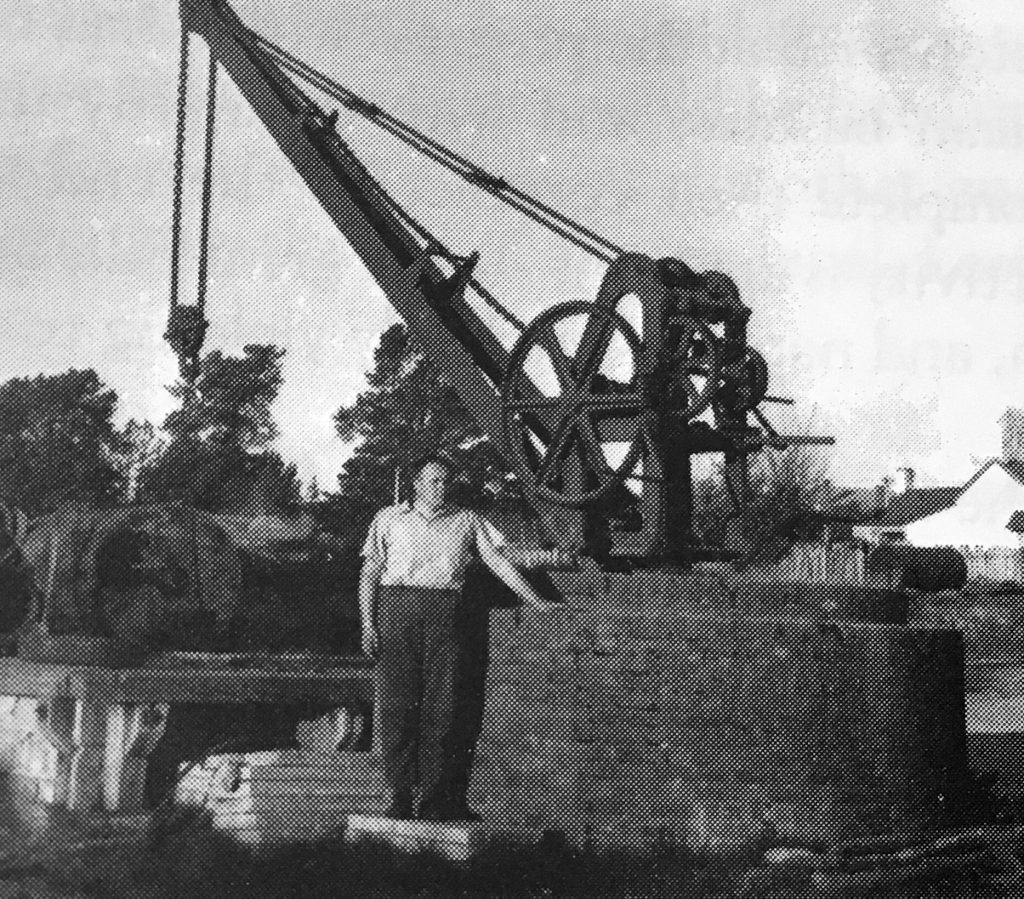
1984 – Apr
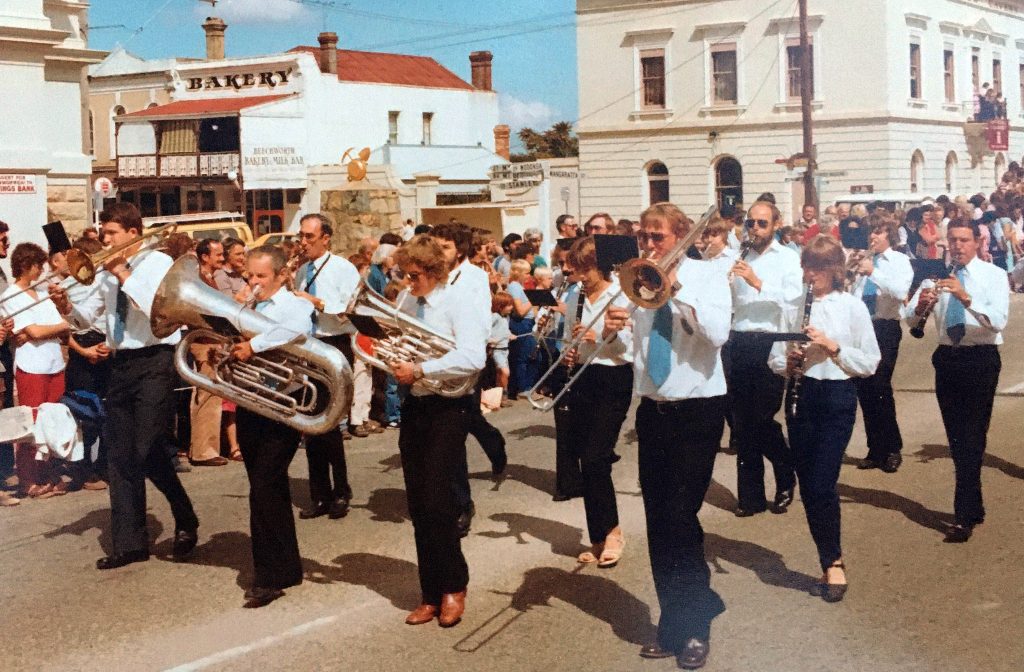
The Beechworth Concert Band have a busy program over Easter, playing as they march in the Saturday parade (above), as well a giving seperate concerts and performances, including one in the middle of Beechworth (below).
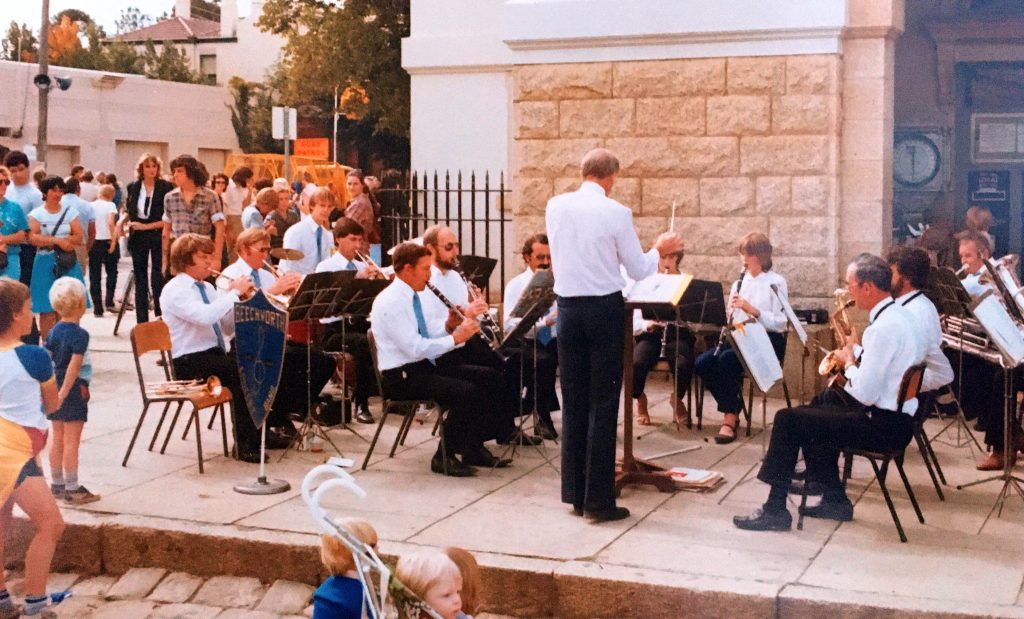
1984

The National Trust classifies thirty-four buildings in the Beechworth Shire
1984

Tom O’Toole purchases the ‘Ideal Café & Milk Bar’ for the second time, and then buys the drapery store next door, knocks down the wall between them, renovates, and opens the combined buildings as the ‘Beechworth Bakery’. In 1987 O’Toole purchases the vacant building on the other side and the bakery extends even further.
| O’Toole’s immensely popular ‘Beechworth Bakery’ eventually expands to outlets in eight other regional towns – Ballarat, Bendigo, Echuca, Healesville, Albury, Yackandandah and Bright. |
1984

Former Australian Army mechanic Mal Davidson and his wife Beth purchase the Golden Hill Trout Farm on Stanley Road from Reg and Margaret Brine, who had established the popular business in 1969. The Davidsons continue the business of egg collecting, fry starting, growing and harvesting and so on, until a local aquarium owner contacts him in 1986 asking to purchase some of the small black worms which colonise the edge of the trout farm’s ponds. After he receives more requests, Mal does some research and realises the worms are in big demand as live food for ornamental fish at aquariums, commanding prices up to $20 per kilo. Realising that carefully raised trout from the farm sell for just $5 to $7 a kilo, by 1988 he begins to start harvesting worms on a commercial scale. In 1991 The Australian Blackworm Co. is officially established, soon selling an average of 170kg of live worms each week, and by 1999 the new business completely replaces the Golden Hill Trout Farm.

1984
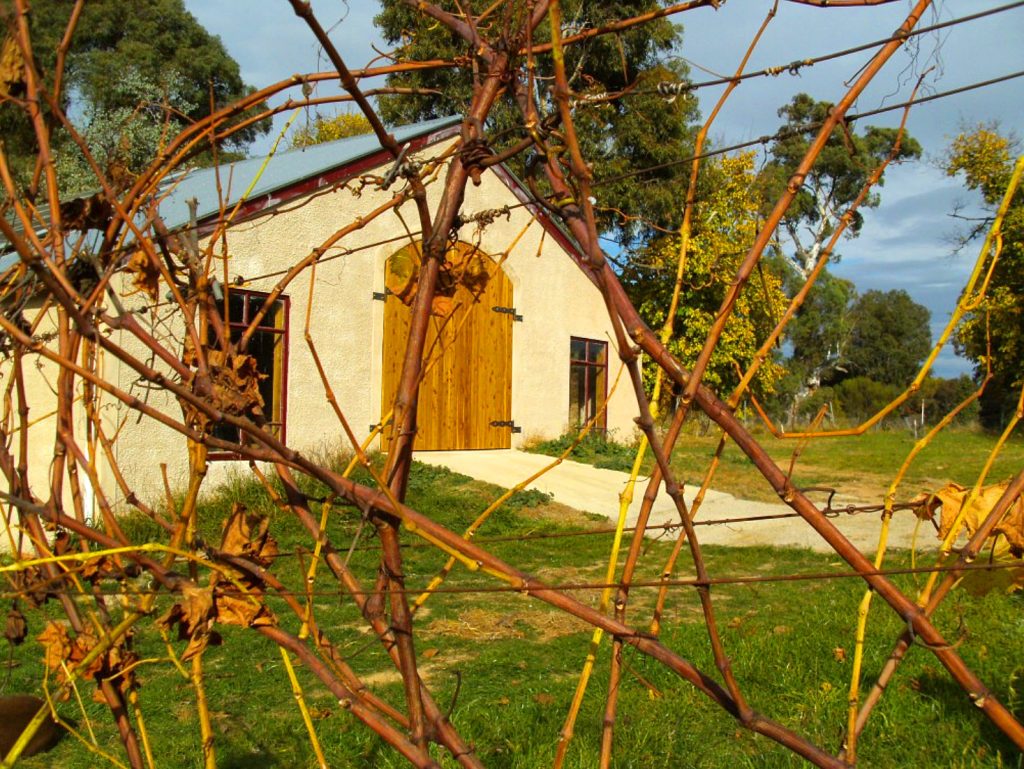
Barry and Jan Morey plant the Sorrenberg Vineyard at 49 Alma Road, Beechworth. The site has 3 hectares of vines – made up of chardonnay, sauvignon blanc, semillon, gamay, cabernet sauvignon, and small amounts of cabernet franc, pinot noir and merlot, with three rows of sauvignon gris planted in 2015 as a trial. Sorrenberg also produce their own fuel, with 35,000 litres made from “locally sourced fish and chip oil” since 2007. The biofuel is used on all tractors and utes on the property.
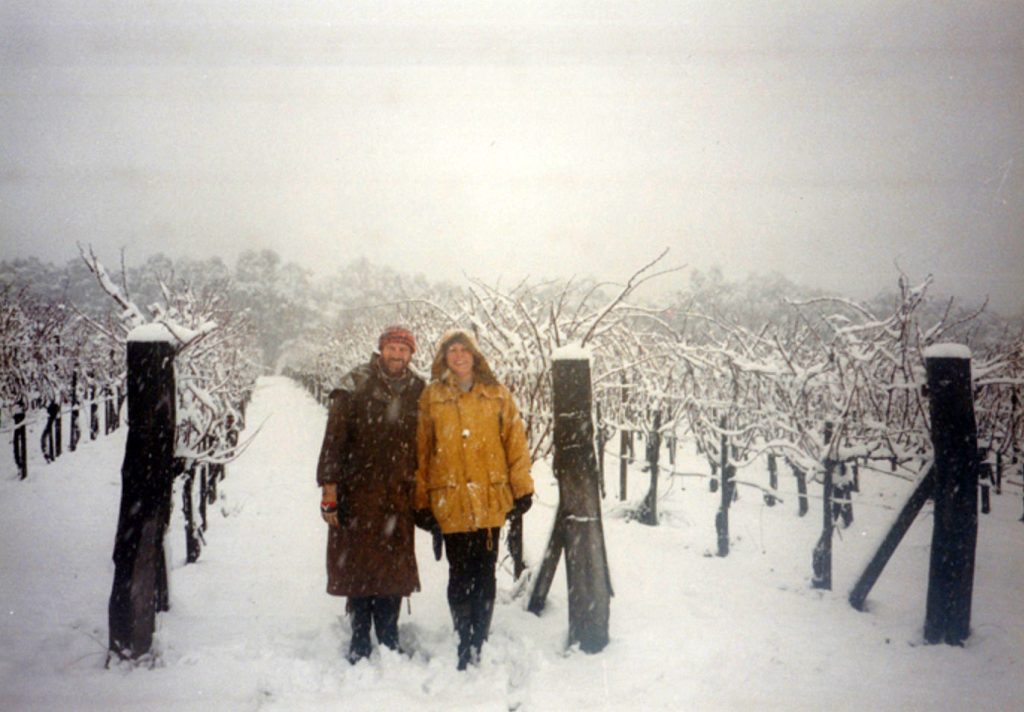
| Beechworth now has about the same area under vine as the Rhȏne Valley’s famed ‘Hermitage’. |
1984

John and Helen Kraus build and open the Newtown Park Motel at 38 Bridge Road. Well located on the approach to the Newtown Bridge into Beechworth, and opposite Newtown Park, it offers 14 lodging units. The Newtown Park Motel will be renamed the Beechworth on Bridge Motel in 2012 and is now run by Steph and Dan Mannix.
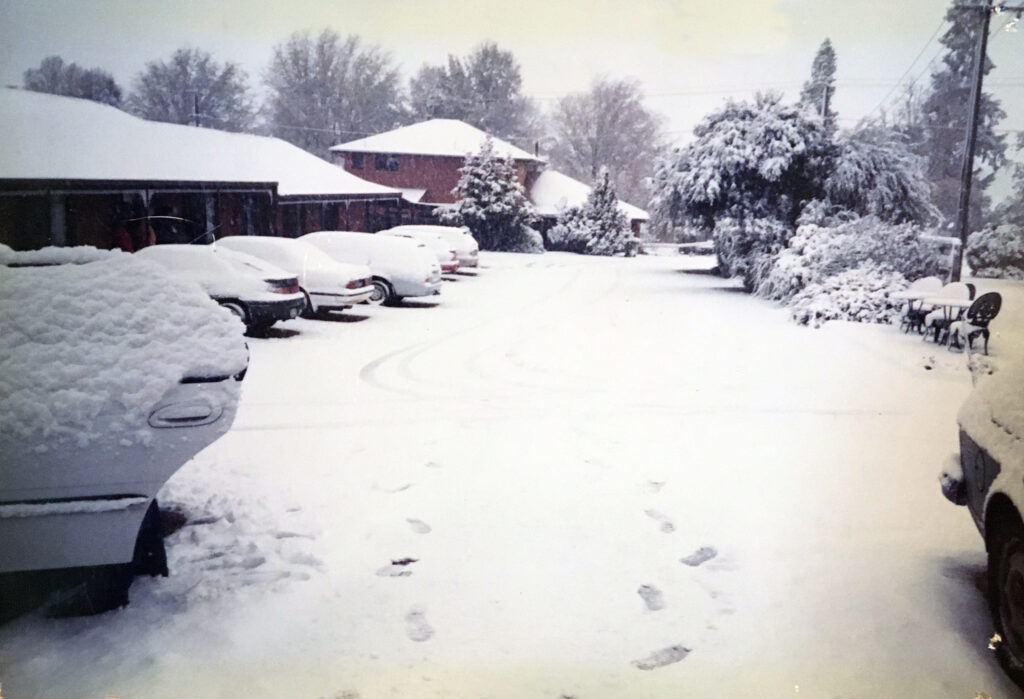
1985

Joe and Patricia Woo purchase the Edelweiss Inn restaurant – spread over the three Clements Buildings – at 11-15 Camp Street and establish the Chinese Village restaurant.
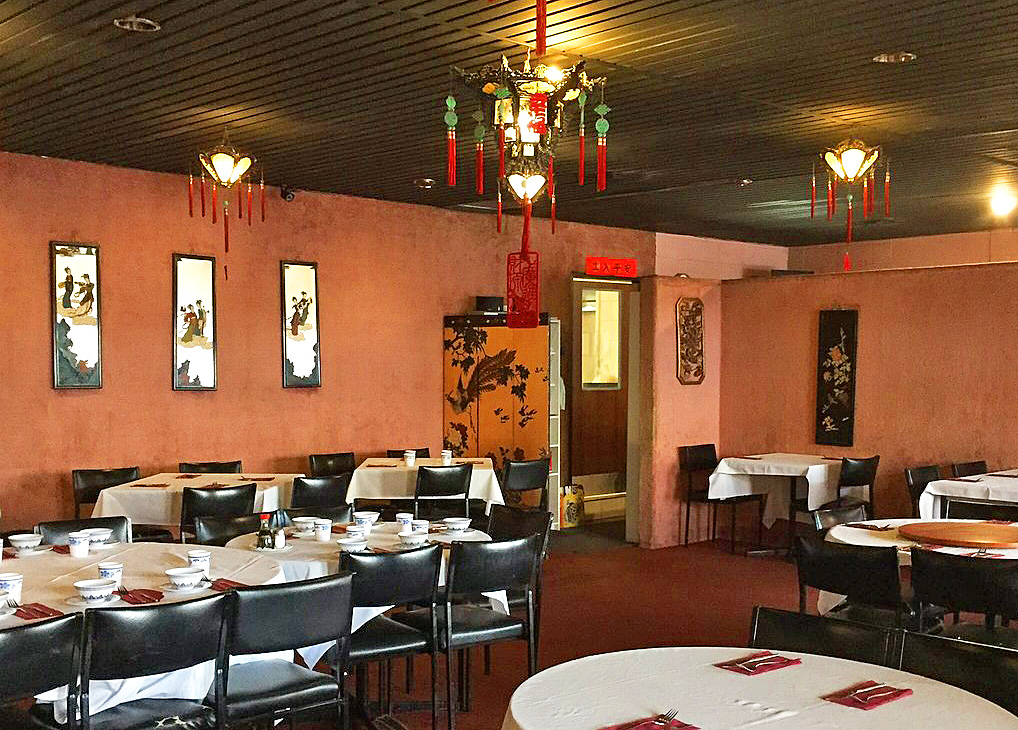
| The popular Chinese restaurant will serve Beechworth at this location for 38 years until it moves to new premises at 77 Ford Street in November 2023. |
1985

Construction begins on the Armour Motor Inn at 1 Camp Street, becoming the closest motel to the centre of town. It gets its name from the fact that it is (supposedly) built on the site of the blacksmith’s shop where part of Joe Byrne’s armour was made in the lead up to the Kelly Gang’s siege at Glenrowan.
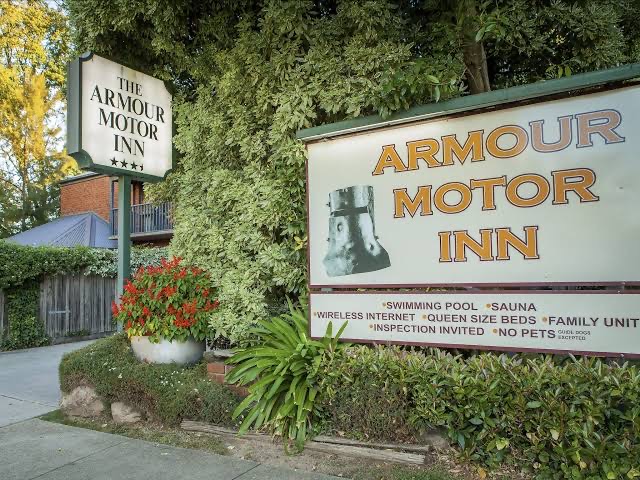
1985
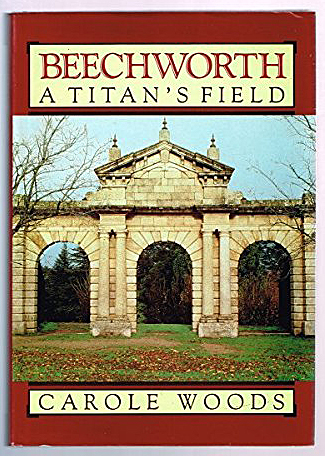
The book “Beechworth: A Titan’s Field” is published by the Hargreen Publishing Company. It is researched and written by Carole Woods OAM, a Fellow and Honorary Secretary of the Royal Historical Society of Victoria. Before his death in 1971, Roy Collington Harvey – curator of the Burke Museum and author of the popular book “Background to Beechworth” – had been Carole’s companion and guide in the township and its history.
1985
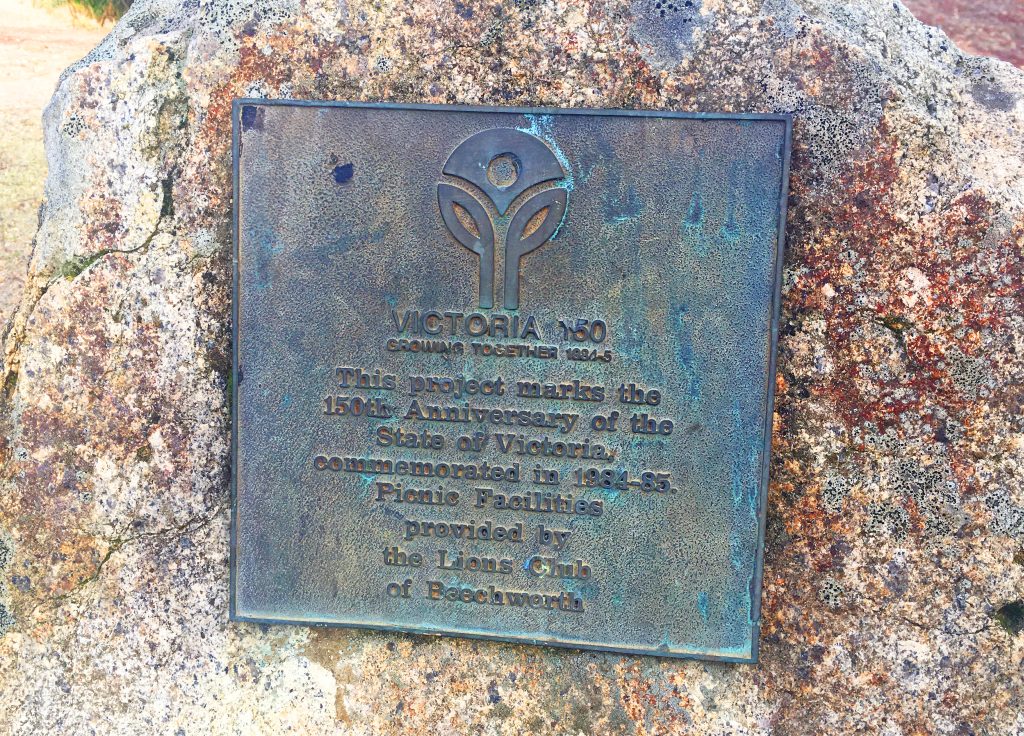
To celebrate the 150th anniversary of the white settlement of Melbourne in 1835, the Beechworth Lions Club install new picnic facilities and benches at the Lake Sambell Reserve.
1985 – Dec
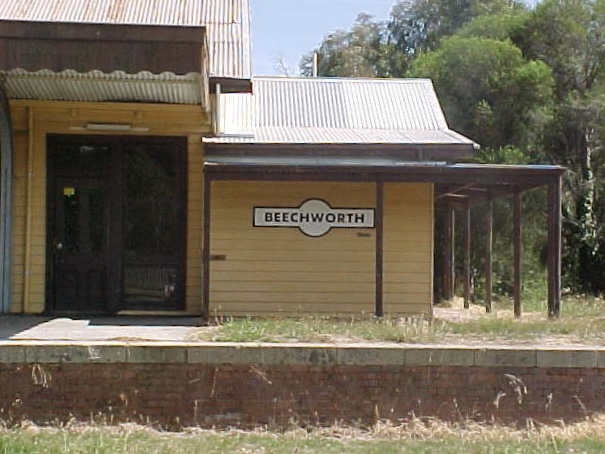
A group of interested citizens hold a meeting to discuss the concept of a Neighbourhood Centre for Beechworth, as they feel the town needs a facility that provides a venue/meeting place/hub for individuals and community to gather, learn and support each other in times of both celebration and need. It results in the formation of the Community Services Beechworth Group. In February 1986 the Community Services Beechworth Group is successful in receiving funding from the State Government’s Neighbourhood House program to establish the Beechworth Neighbourhood Centre. With the support of the Beechworth Rotary Club, the Beechworth Shire Council agrees to renovate the former Beechworth Railway Station, with the doors to open in April 1986 with Shirley Bartsh as the first coordinator.
1986

On the Centennial of the Brigidine Sisters’ arrival in Beechworth in December 1886, Graeme and Pam Bell purchase The Old Priory and make the grand 1904 three-storey building their home, before renovating the property and offering self-contained heritage accommodation for up to 200 guests, along with its well-established and popular school camps. It is also a popular venue for wedding receptions and functions.
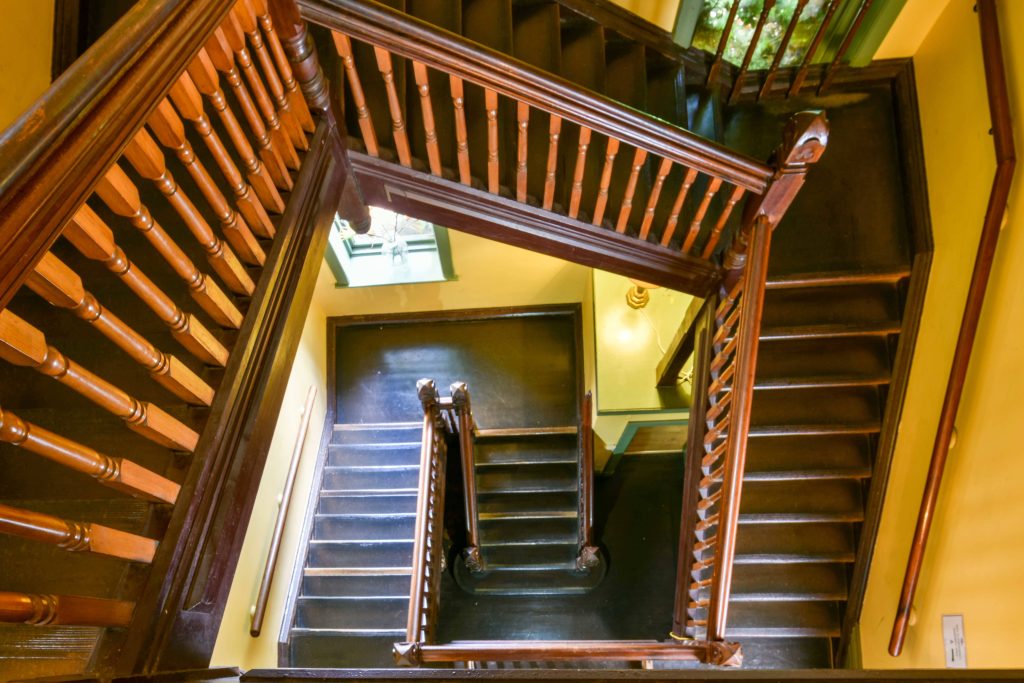
1986
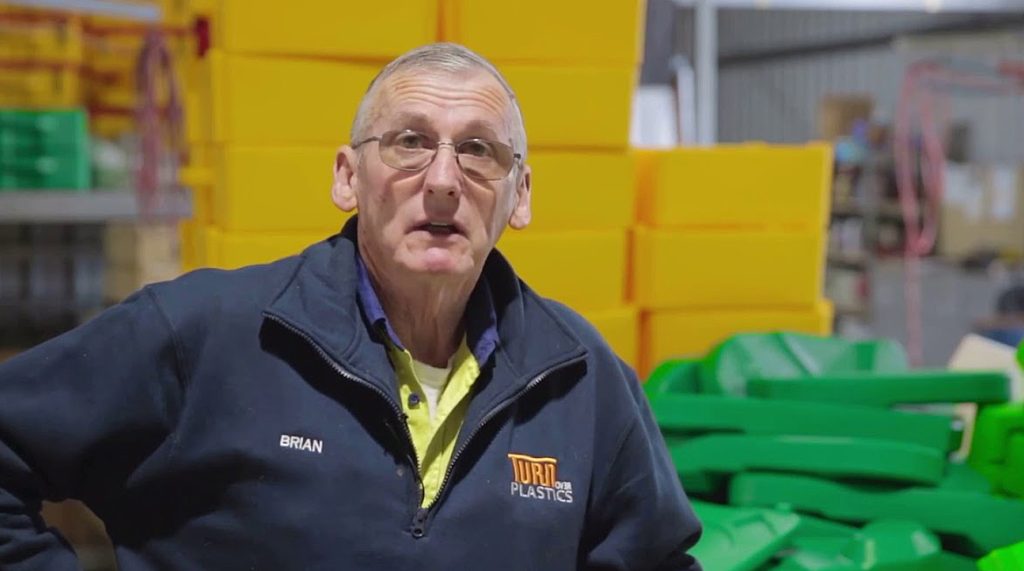
Beechworth Engineering is established by Brian Smith in a large shed on his property, repairing farm and industrial equipment as well as making replacement components for farm equipment. Smith also manufactures small components for a company in Dandenong.
1986
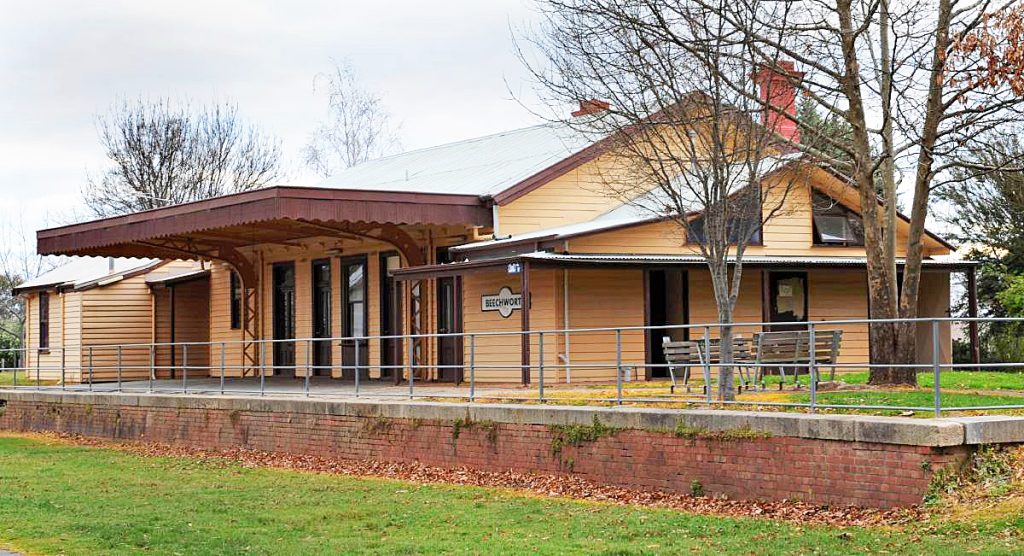
A group of locals are successful in their lobbying for funding for a Community Childcare Centre. However, it is conditional on running the centre from the former Beechworth Railway Station, which the Community Services Beechworth Group has just called home. Eventually, an agreement is reached for the Beechworth Neighbourhood Centre to relocate to the Methodist Sunday School Hall building on the corner of Ford & Church Streets and it opens in 1987 with Joy Mason the new coordinator.
1986

A fire breaks out at Cameron McBean’s Reliance Garage and Service Station at 38 Ford Street following an explosion caused by leaking fuel from a refuelling Mobil petrol tanker. The building and the business are destroyed. It will be replaced by a building set back from the street that will later house ‘Bouchon at Botanicals’ a French-style cafe set among a collection of rare maple trees, and, from 2023, ‘Walter Beechworth Hair Salon‘.
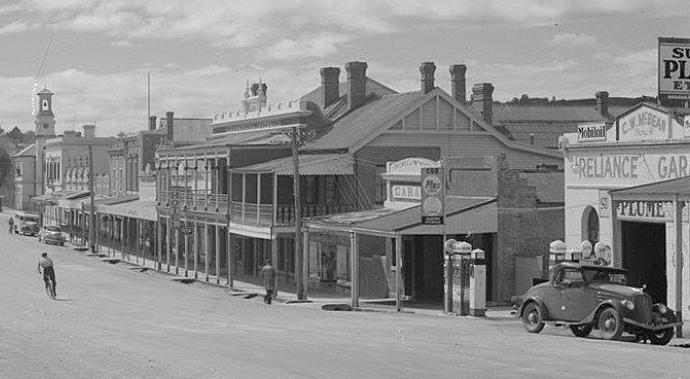
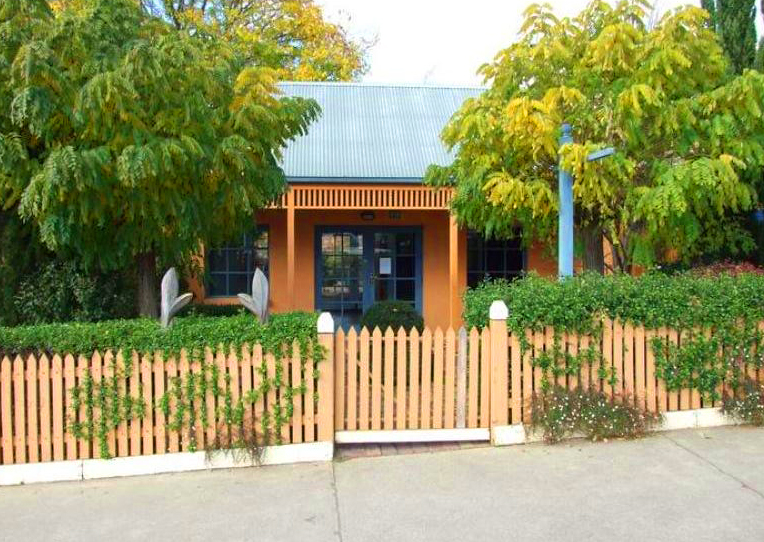
1986
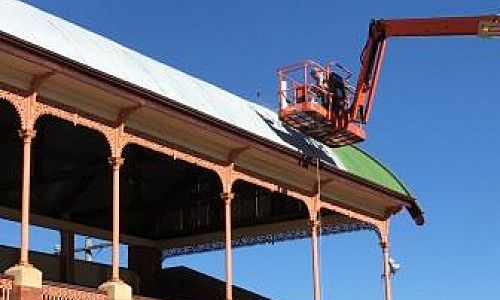
Restoration work starts on the 88-year-old iconic Baarmutha Park Grandstand which is suffering from lack of maintenance since its construction in 1898.

1987

Kelvin Clark – having grown up next door to the elderly Mary Fredericia ‘Freda’ Barnes in the house her father Robert Barnes built in 1859 – purchases the old Barnes home at 5 John Street. Fortuitously, Kel (a landscape gardener) meets Terese Adams (skilled in interior design) and together they resolve to renovate and restore the historic old building, which has fallen into disrepair. They transform the house and gardens into the beautiful Barnsley House which they open to paying guests and it quickly becomes a popular Beechworth Bed and Breakfast destination.

1987

On the Hume Highway, the ‘Benalla Bypass’ is officially opened. At a cost of $70 million, the 36.5km new section of the Hume Freeway – which bypasses the town of Benalla – is the longest stretch of highway duplication opened in Victoria and extends from south of Baddaginnie to Chivers Road south of Glenrowan.
1988
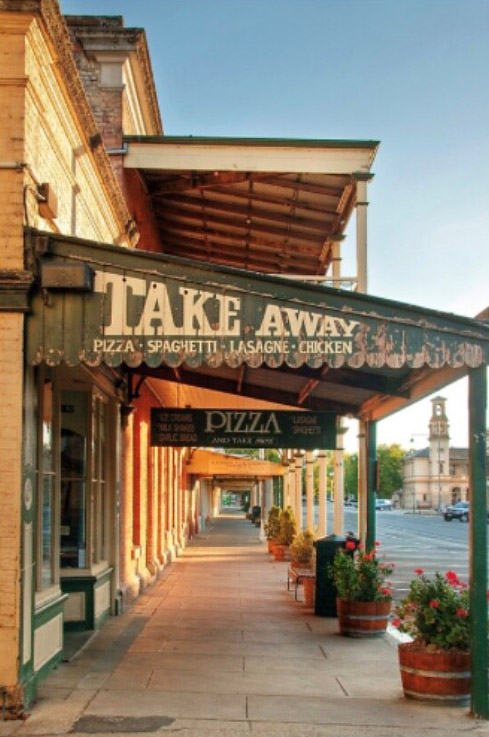
Dennis Raos opens the Beechworth Pizza and Take Away at 57 Ford Street. The business will be taken over by Graham Fisher in May 1990.
1988
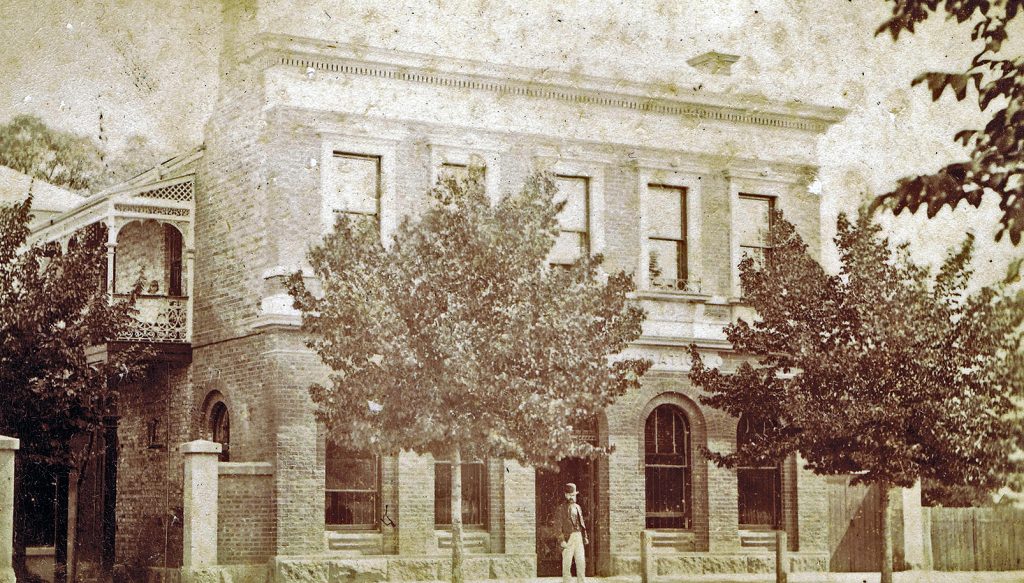
After 82 years of serving local customers, the State Savings Bank of Victoria closes its Beechworth branch at 97 Ford Street. It had taken over the former Oriental Bank building in 1906. (In 1980 the State Savings Bank of Victoria became known as the State Bank of Victoria before collapsing due to the weight of its massive and irresponsible lending in the mid-to-late 1980s. In 1990 it is sold and becomes part of the Commonwealth Bank of Australia.)
| A private home from 1991 to 2002, the solid two-storey building on Ford Street is purchased from the private owners in February 2002 by Heidi Freeman of the famous Beechworth Freeman family and lovingly restored, opening 2003 as ‘Freeman on Ford’, luxury accommodation. |
1989
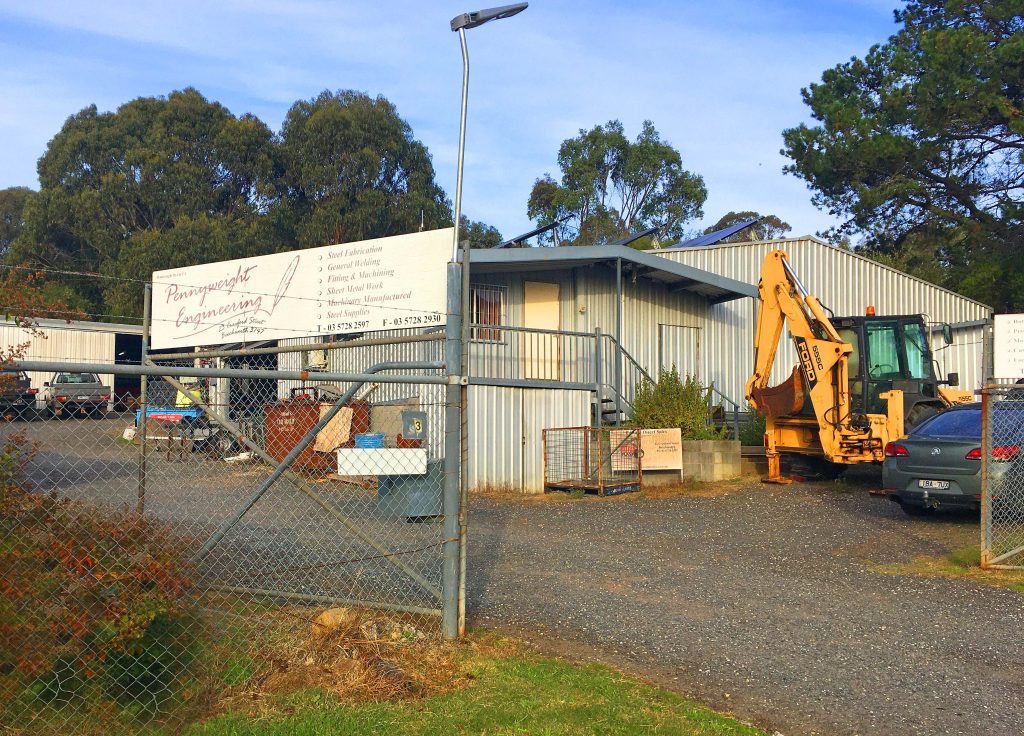
Brian Smith moves his Beechworth Engineering to new larger premises on an industrial block at 23 Crawford Street, which is the nominated ‘Industrial Area’ of Beechworth. The successful business is renamed Pennyweight Engineering. In 1998 Smith adds a large factory at the rear of the property and starts a second business – Turn Over Plastics, manufacturing rotational moulds for plastic products. As business grows, in 2005 he purchases a block of land directly across the road and builds a third workshop space.
1989
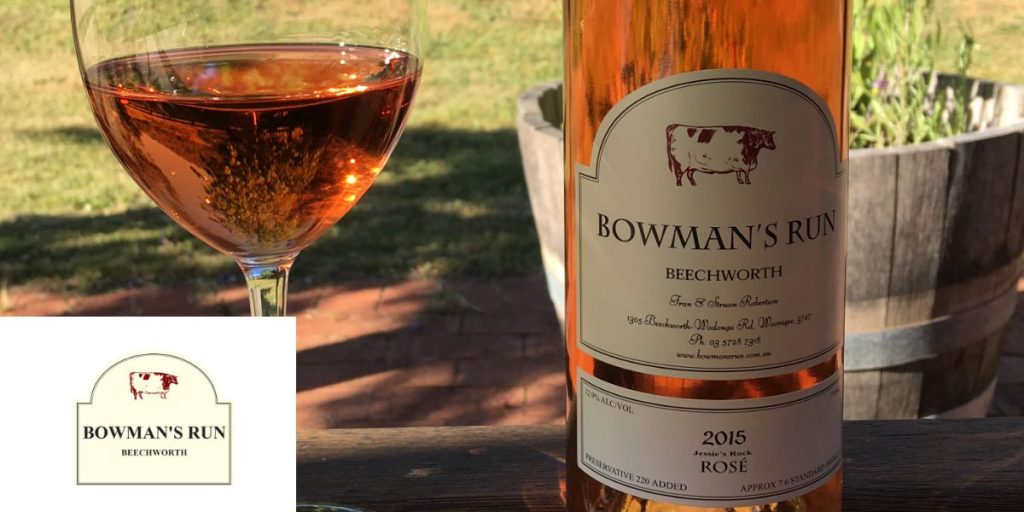
Bowman’s Run Winery is established by Dick and Jill Whitford at 1305 Beechworth-Wodonga Road in Wooragee. The small vineyard is taken over by Struan and Fran Robertson in 1999. The winery produces a range of varieties including Cabernet, Cabernet Sauvignon, Riesling, Shiraz and Rosé, producing around 200 cases a year.
| ‘Bowman’s Run Winery’ sits on a small section of the vast lands once owned and occupied Dr William Bowman, the first white settler (squatter) in the area back in the 1830s, long before the establishment of Beechworth. Bowman’s ‘Heifer Run’ spanned over 41,000 acres – running all the way from to Wodonga in the north to Bowmans Forest in the south. Dr Bowman builds a fine home called ‘The Grange’ at Everton near Tarrawingee. |
1990 – Jan 1

After hearing thousands of cases over 132 years, the Beechworth Courthouse finally closes and will no longer be used for legal proceedings, with all the Beechworth records directed to be moved to the Myrtleford Courts. The last case heard at the Beechworth Courthouse, in 1989, is a Children’s Court matter. However, after restoration work is completed, it will re-open as a museum in 1991. Built of granite by Scottish stonemasons in 1858, it features a central block with gabled ends containing the main courtroom, flanked by office wings, and surrounded by verandahs and a public vestibule. The original furniture and fittings remain.
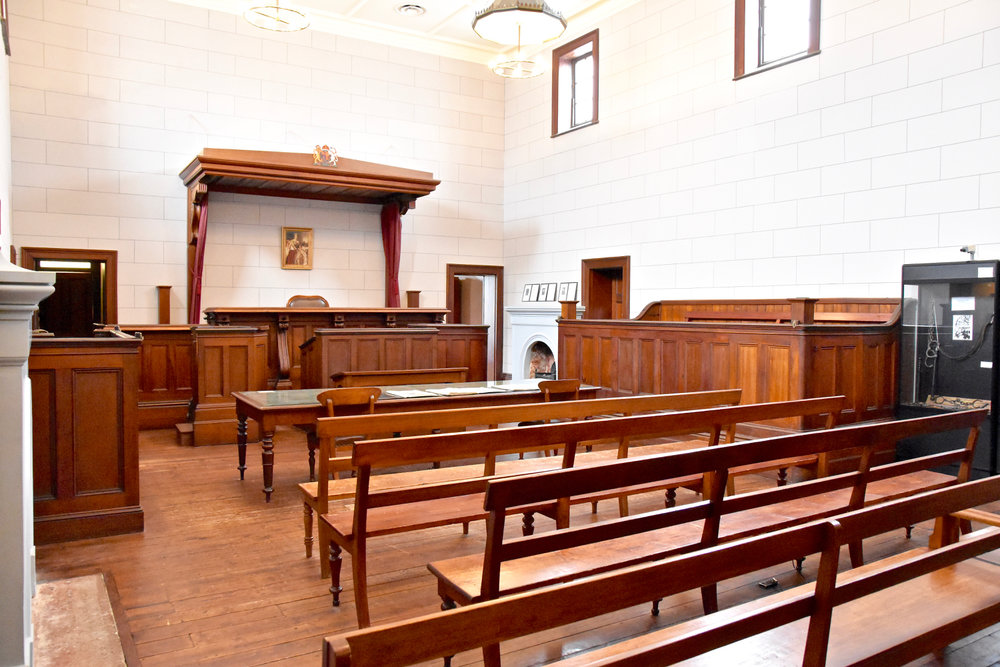
| 13 people are sentenced to death from the dock of the Beechworth courthouse, including Elizabeth Scott, the first woman executed in Victoria, who murdered her husband. Three executioners/public floggers (all prisoners seeking remissions of sentence through their service) are active at Beechworth, including Elijah Upjohn, the man who hanged Ned Kelly. |
1990

Beechworth Gaol is reconfigured as an ‘integration prison’. This assists inmates to adjust to community-based orders to maintain community safety as well as pre-release activities for inmates to reintegrate to the community and desist from crime
1990
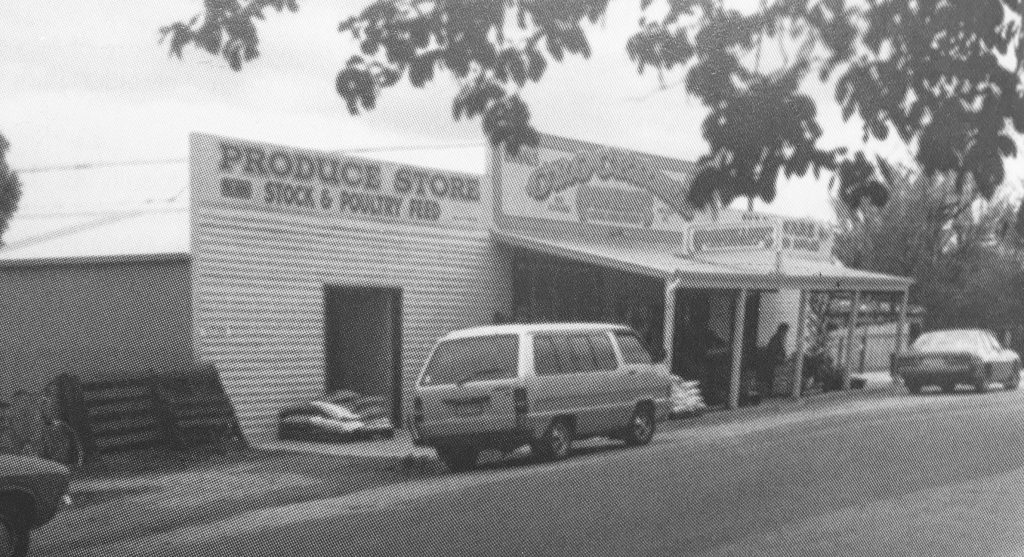
George Fendyk takes over the Ennal’s Store (formerly the Ladson’s Grocery Store) at 30 High Street and relaunches it as Beechworth Machinery.
| Established in 1882, ‘Ladson’s Grocery Store’ essentially remained in the Ladson family for over 100 years. Established by Arthur Ladson, Alfred’s son Arthur Ladson takes over, then Beatrice Ennals (mother-in-law of Dick Galbraith, Alfred’s grandson), then Dick Galbraith and his wife Margaret Ennals after Beatrice relinquishes the business at the age of 80. After Dick passes away, it is taken over by his son Bob Galbraith. |
1990

After 10 years of planting, building and landscaping, artists Tina Fraser and Gavin Doherty finally open their Out of Town Nursery and Humming Garden to the public. Located 15km from Beechworth at 980 Beechworth-Chiltern Road, the 5-acre garden features a Japanesque-style art gallery, an ornamental greenhouse, a succulent roofed shop and a propagating shed. Among the hundreds of plants are ornamental grasses, succulents, perennials, water features and plants, and stunning garden art. It also includes plants of Mexican and South African origin which provide the backbone of the garden and micro-climates for unusual plants from all around the globe. Humming with wildlife, many native birds find sanctuary in the leafy garden including Honeyeaters, King Parrots, Red-Browed Finches, White Winged Choughs and Satin Bowerbirds.
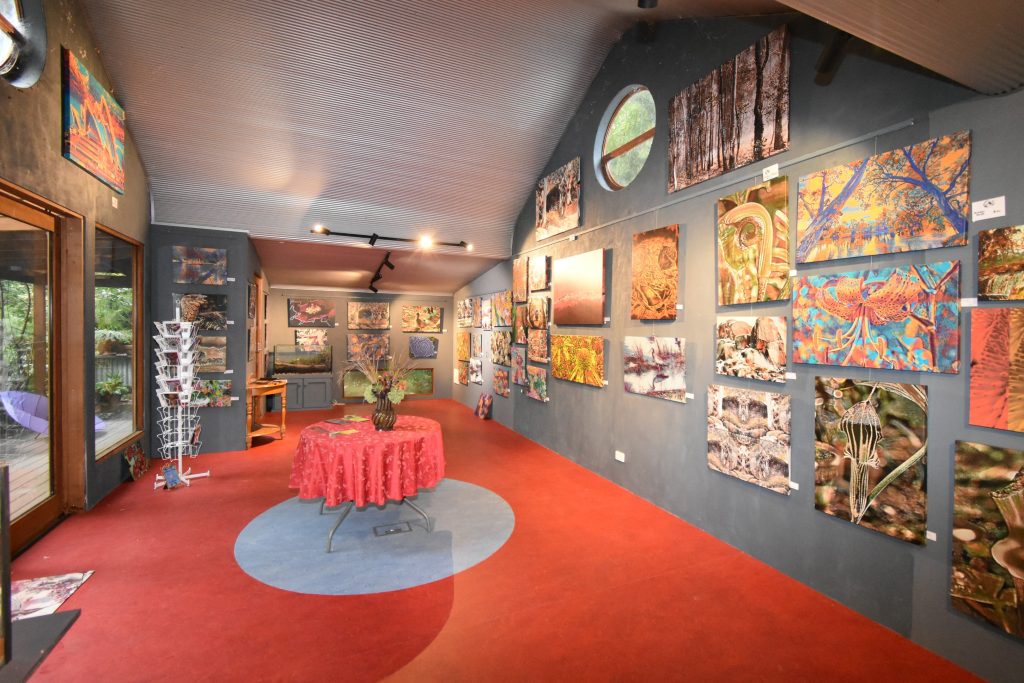

1990 – April

Steven and Elizabeth Mason open ‘The Finer Things Of Life’ shop at 16 Camp Street with a ‘vintage Victorian’ theme, selling classic jewellery, homewares and antiques. It has become one of Beechworth’s “must see” destinations. The shop at 16 Camp Street had once been the home of Vandenberg’s Milk Bar and, before that in the early 1900s, Alfred Ladson’s Furniture Store.

| Elizabeth Mason will become the president of the ‘Beechworth History and Heritage Society’ and a driving force in keeping the town’s fascinating past alive. She will also be named president of the ‘Beechworth Chamber of Commerce’. |
1990 – Jan 31
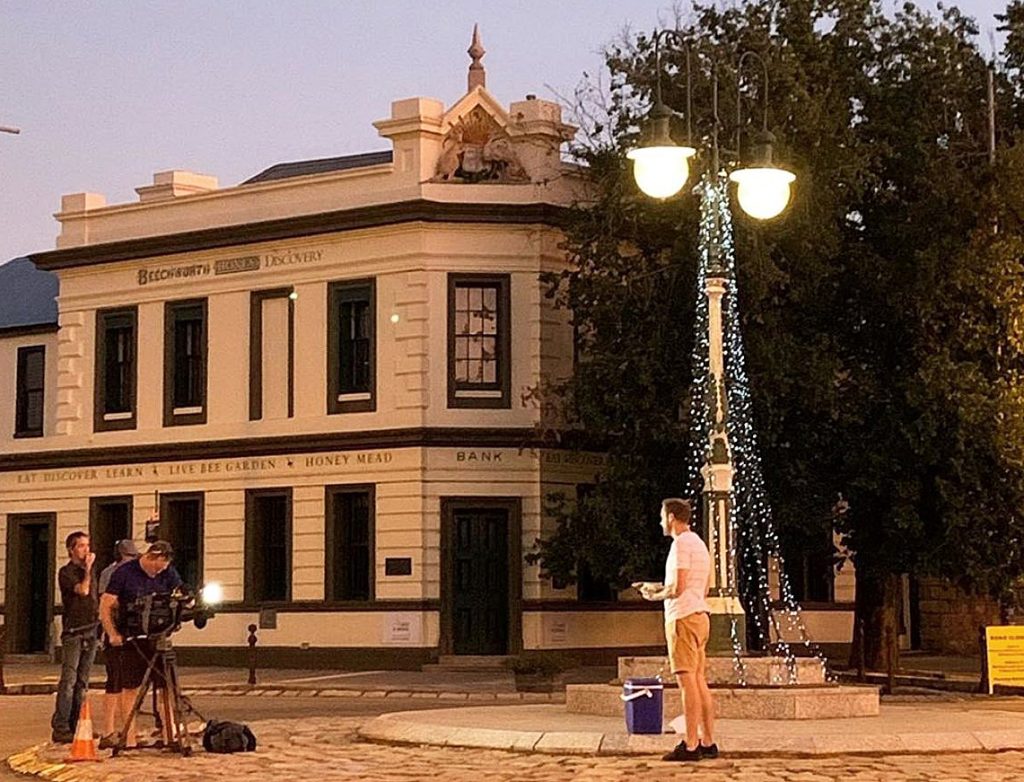
On the morning of New Year’s Eve, the Nine Network’s Today show crosses live to reporter Tim Davies in Beechworth throughout the show where he highlights some of the town’s great attractions.

1991

Lucy Tozer opens Hair Construction at 6B Camp Street. She operates in Camp Street for many years before moving to 45 Ford Street, eventually relocating to where the Fairy Shop had been operating, at the rear of 71 Ford Street (the Ivy Phillips shop) in 2001 (below).

1991 – Apr 1
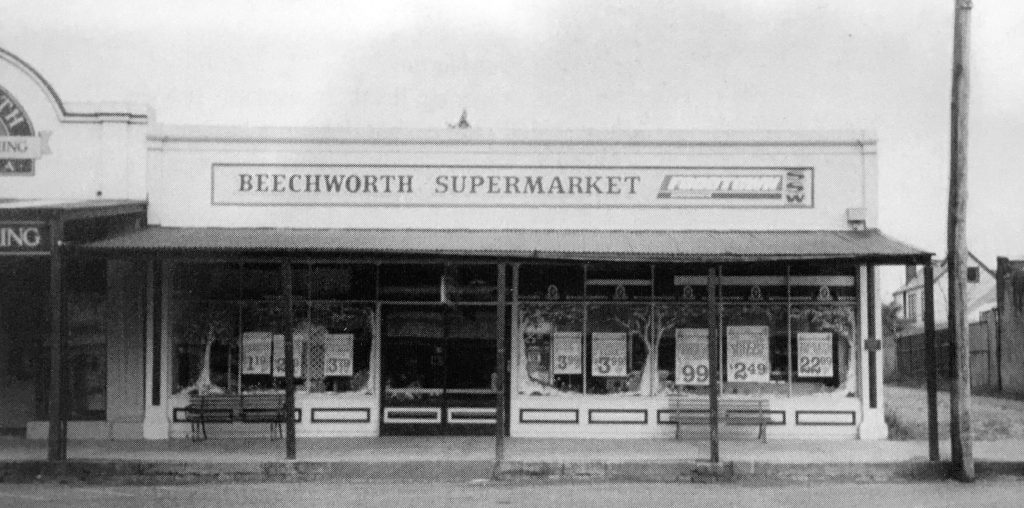
Don Alchin and David Box purchase Sinclair’s SSW Supermarket at 73-77 Ford Street from Mervyn John Sinclair who is retiring from the business in his late 70s. It will later be re-branded as Foodtown SSW, then just Foodtown and finally to IGA (Independent Grocers Alliance). Longer trading hours are introduced and, in 1994, a full scanning system is added throughout the supermarket.
1991

Ray Pond establishes the Beechworth Provender at 18 Camp Street, next door to Bridie Maree’s Shoe Shop. The café promotes itself as a ‘purveyor of fine foods’ including local wines, cheese, jams and chutneys. In 2007 the popular café is taken over by Sue Ostrognay and Martin Thomas (below).
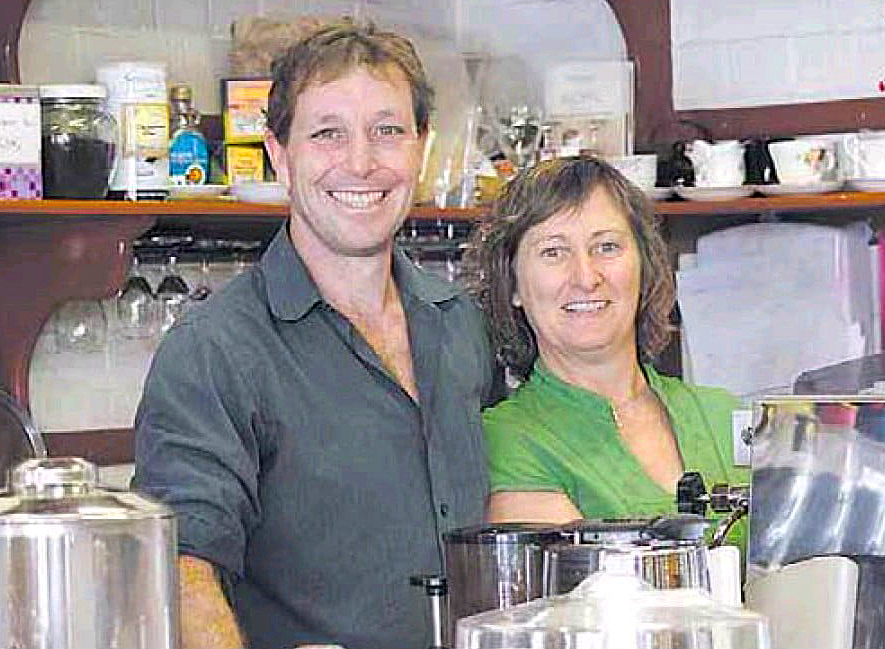
1991 – Aug 30
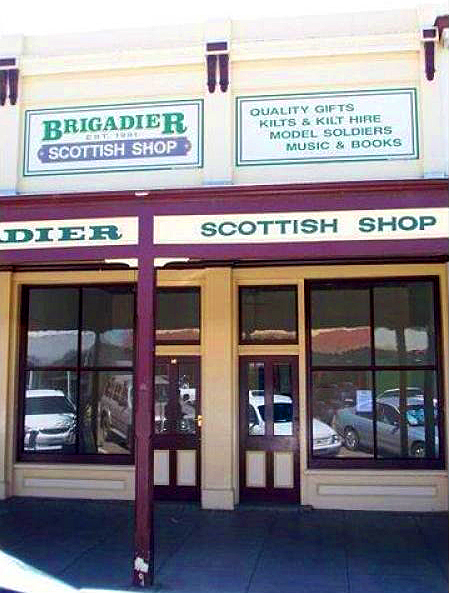
A Scottish shop called Brigadier opens at 14 Camp Street. Established by John and Maria Harvey, the business specialises in their ‘Brigadier’ brand of traditional toy soldiers and imported Pipe Band equipment. John Harvey will establish the popular Beechworth Celtic Festival in 1995. Since 2021, this building is the home of Beechworth Dental.

| John Harvey is born in Akron, Ohio in the USA and emigrates to Australia in 1972, becoming an Australian citizen in 1976. He works as a high school teacher in NSW, starts a small business, then moves to Beechworth with wife Maria to establish their ‘Brigadier’ shop. As well as co-founding and coordinating the ‘Beechworth Celtic Festival’ he also serves for many years on the ‘Beechworth Servicemen’s Hall’ committee, assisting in its refurbishment. As well as his passion for Scottish Pipes and Drums and Scottish culture, John is also interested in railways – particularly model railways – and will help establish the permanent Beechworth model railway display at the Telegraph Station in 2012. |
1991 – Sep
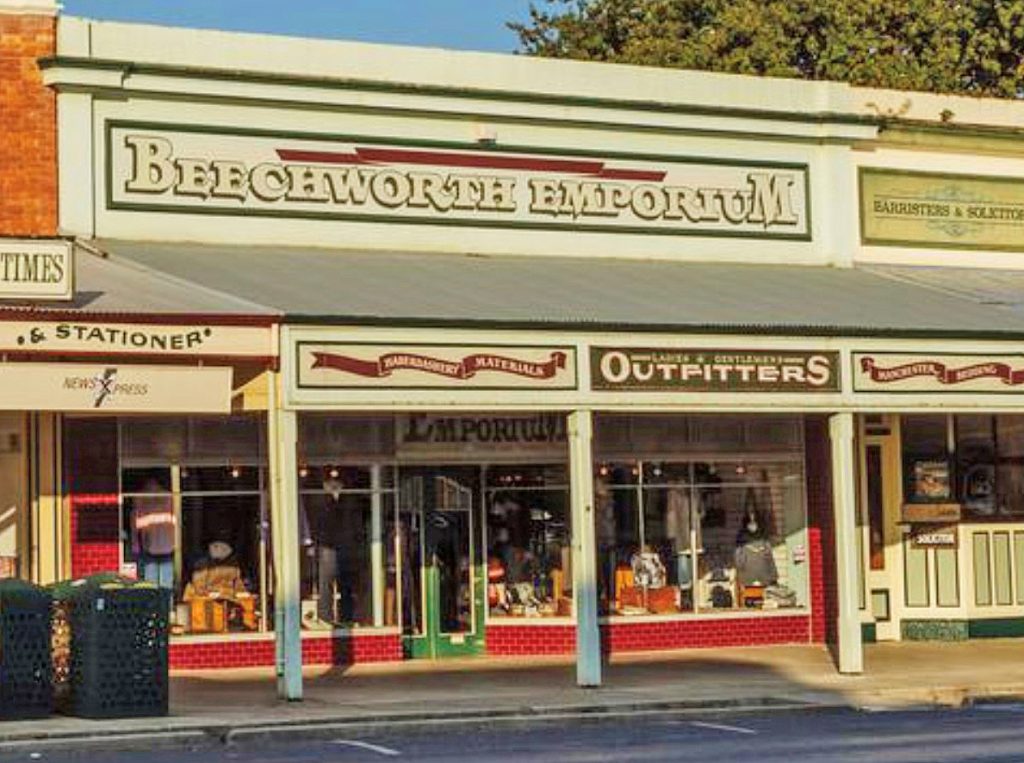
The Beechworth Emporium opens at 24 Camp Street (and still operates today) on the site of the 1850s two-storey Empire Hotel which is destroyed in the ‘Great Beechworth Fire’ of 1867, before being rebuilt as the single-storey Post Office Hotel which finally closes in 1943. The Beechworth Emporium sells men’s and women’s clothing accessories and footwear.
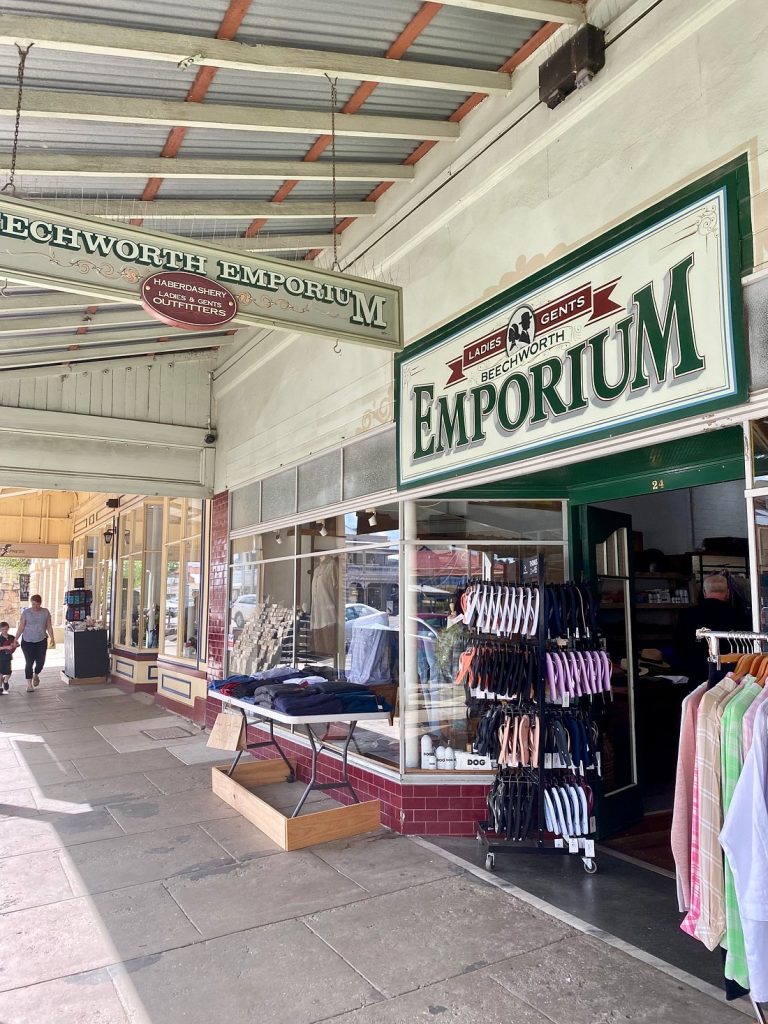
| After its closure, the old ‘Post Office Hotel’ building becomes ‘Oven’s Hardware’ then later ‘Warner’s Hardware’. From 1979 it is known simply as ‘Beechworth Hardware’, reverting to ‘Ovens Hardware’ in 1983 before closing in early 1991. |
1992

Josef (Joe) and Elizabeth Kraus take over the lease of the 1864-built Star Hotel on Ford Street and continue to run the former hotel as the Beechworth Youth Hostel which had been established in 1974.
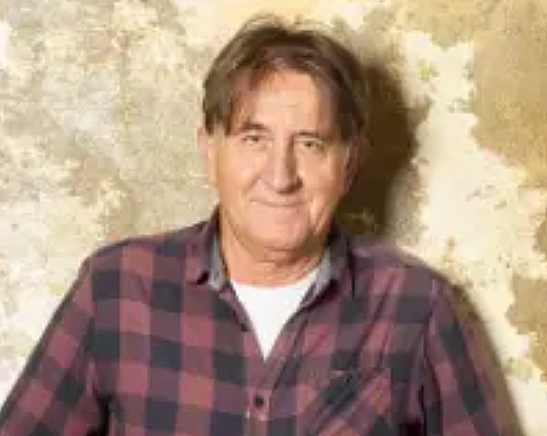
| Joe and Elizabeth’s son Ben Kraus will go on to establish Beechworth’s famous ‘Bridge Road Brewers’ in 2005, opening his first microbrewery in Joe’s shed on Bridge Road in Beechworth. |
1992 – May 6
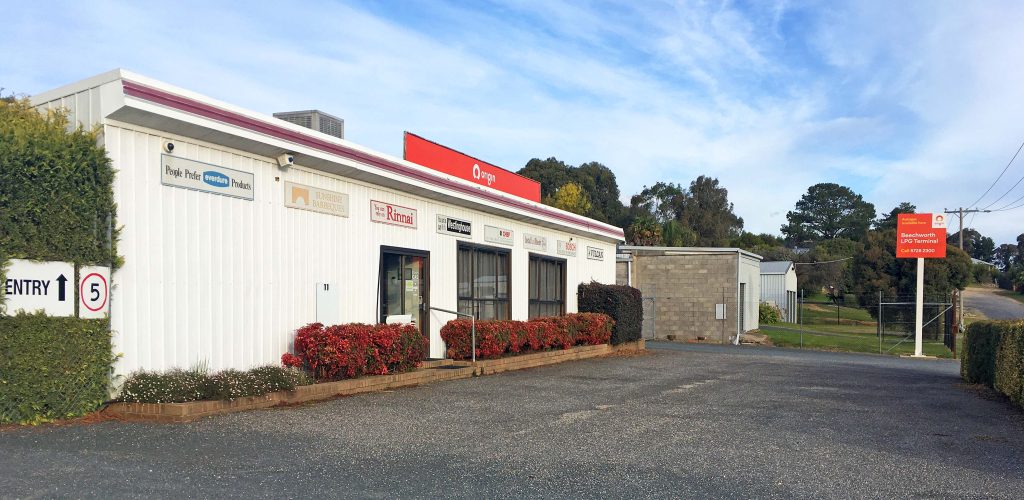
Michael ‘Mick’ Breen establishes Beechworth Gas in the new ‘industrial estate’ at 11 Crawford Street. It supplies Beechworth with Propane and LPG. The business is later taken over and expanded by Origin Energy (below).

1992 – Aug 17

Beechworth’s new Ovens District Hospital opens at 52 Sydney Road . It is the result of the amalgamation of the Ovens District Hospital and the Ovens and Murray Hospital for the Aged. The hospital and all the associated buildings on the site have been known collectively as Beechworth Health Service since 2002 (below).
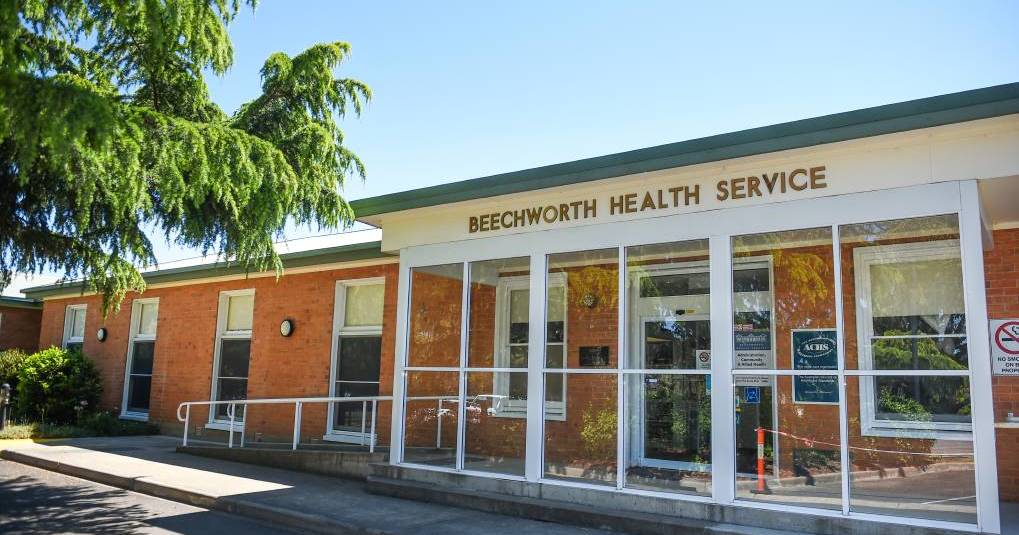
| In 1995 the ‘Beechworth Hospital’ tenders for, and wins, two Psychiatric Programs from the then closing ‘Mayday Hills Hospital’. |
1992
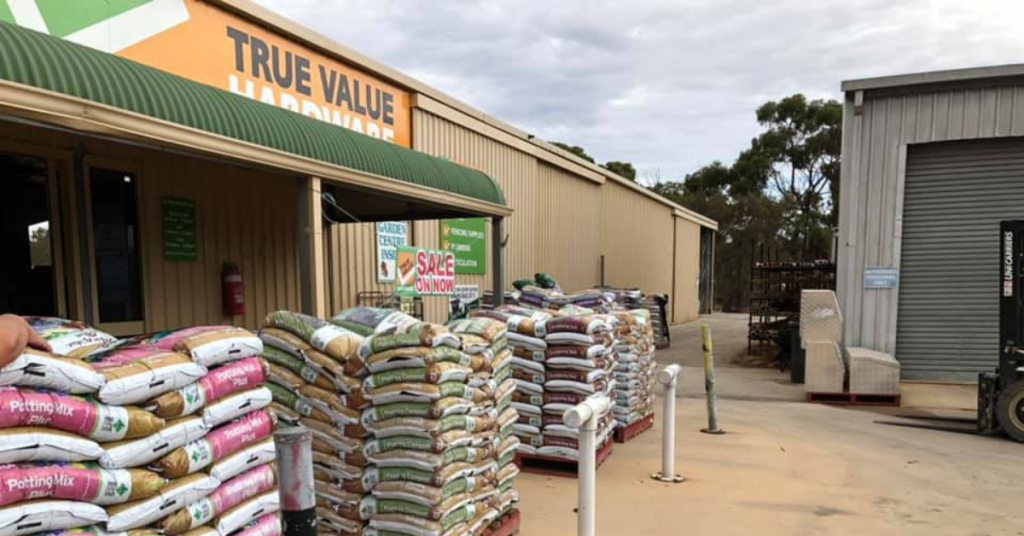
Following the closure of the long-running hardware store at 24 Camp Street, Jim McCormack constructs a new, modern hardware store on land at 4-6 Camp Street. The True Value Hardware store will be operated by Simon Turnbull. It remains Beechworth’s central hardware, timber and garden centre today.
1992

After 15 years in Beechworth, Susan and Allan Fox sell their successful Buckland Gallery, on the corner of Ford and Church Streets, to Ian Smith, who continues running the popular gallery.
1992

Having lived on their 12 acre property near the Woolshed Falls since the 1970s, Barry and Lillian Ridgeway decide to build four cabins on the site. The Woolshed Cabins are a hit and are still popular with holiday renters. Just under 8km from Beechworth at the corner of Chiltern and McFeeter Roads, the 2-bedroom self-contained pet-friendly cabins are surrounded by secluded bushland and an easy 1km walk to the spectacular Woolshed Falls.
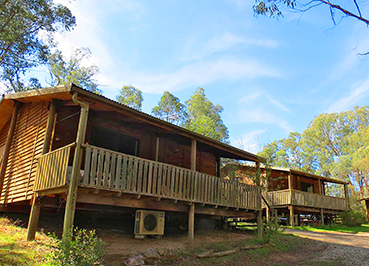
1992 – Sep

Judi Borschman establishes The Beechworth Sweet Company at 7 Camp Street. With the concept of an “olde world” sweet shop, she begins with just two staff, but the business thrives, and the following year Judi expands to the shop next door (calling it the Mr. Ted E. Bear shop) and in 2000, when Beechworth’s Fairy Store closes, Judi decides to combine sweets, fairies, teddy bears and golliwogs all in one large shop to deliver her vision for a fun store which revives childhood memories. With the expansion to three shops, the number of staff grows to 12. Today it employs over 20 staff and has become a ‘must visit’ tourist destination in Beechworth.
| At one stage in the 1860s, the building at 7 Camp Street is home to the ‘Beechworth Morgue’! |
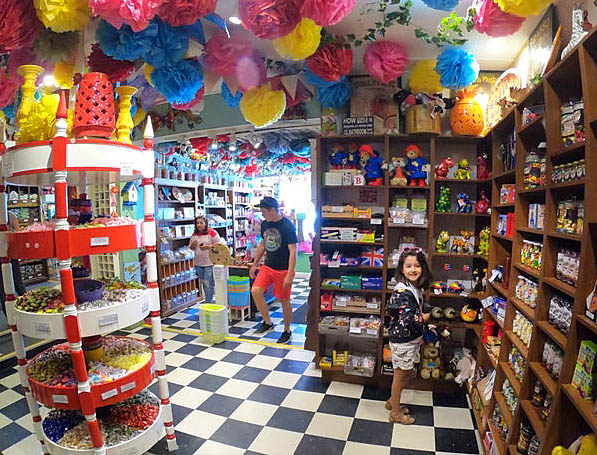
1992 – Nov 18
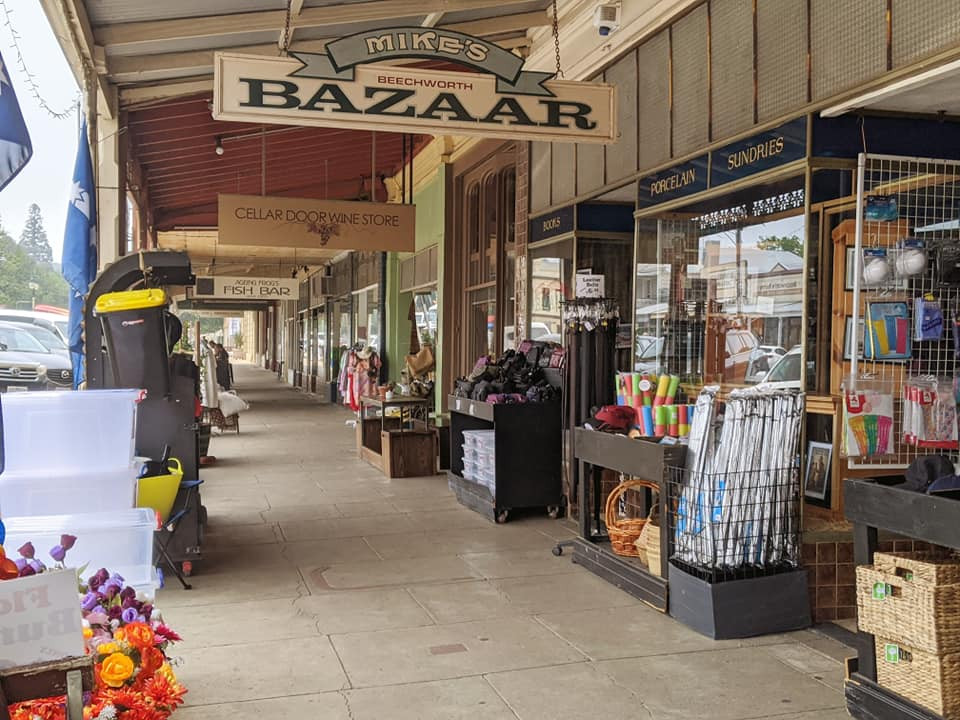
Mike and Joanne Molyneux take over the building at 58 Ford Street where David Chitty had run the Beechworth Bazaar for many years. They establish a similar business and – rather than coming up with a completely new name – simply add the name “Mike’s” in front of the large existing signs on the building, renaming it Mike’s Beechworth Bazaar, continuing the tradition of selling a large selection of gifts, homeware, hardware, specialty items and convenience store products. The building had formerly been the home of Freeman’s Store / Clement’s Store. The popular Bazaar still trades today and in 2006 Mike Molyneux will also establish the Myrtleford Star Bazaar.
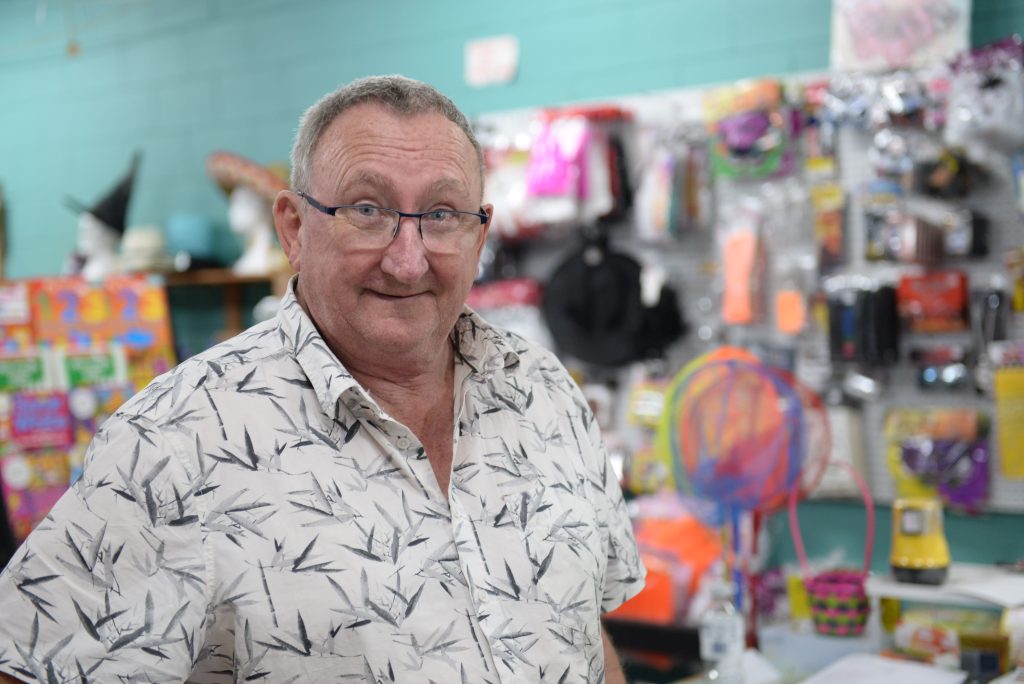
1993

Stephen Tapsell, a sub-editor for the Border Mail newspaper, loves collecting books and decides to open his vast collection of books – stored in the rear shed of his Beechworth home at 17 Williams Street – to the public. Tapsell’s Book Shed continues to grow and in 1995 Stephen will leave his job at the newspaper and move all his books to Ford Street and open Tapsell’s Books.
1993

Major plumbing works take place at Beechworth Gaol with toilets and basins finally installed in all the gaol’s cells!
1994

Professor Paul Conroy purchases Warden’s Hotel on Ford Street from his father, also called Paul, who had owned the hotel since the 1970s and had been running it as accommodation for school camps. Paul Jnr completes some restoration work on the building – built in 1869 as the Midland Counties Hotel – and it is later re-opened as Wardens Food and Wine.
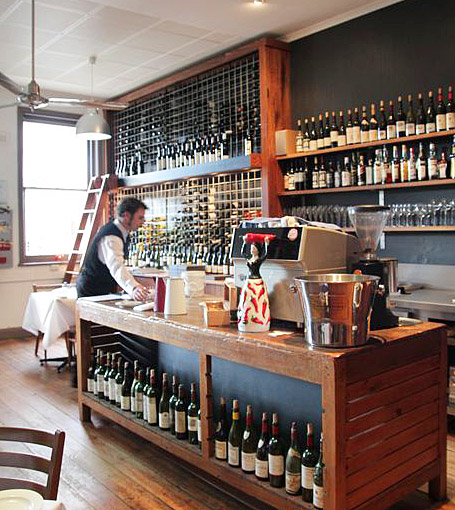
1994 – Apr
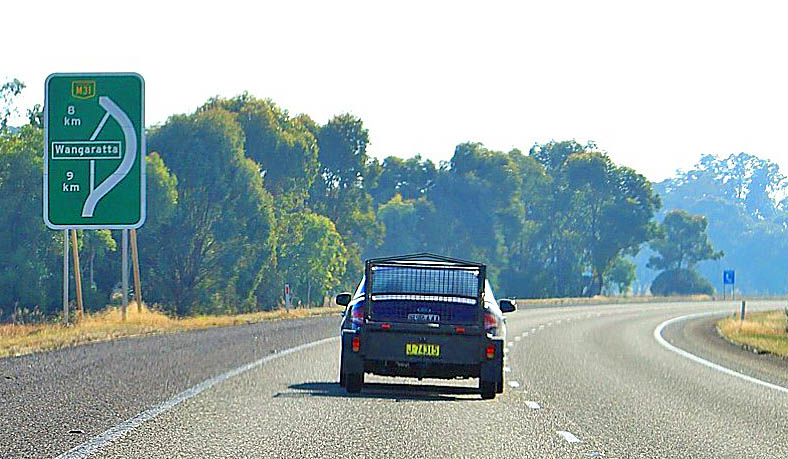
On the Hume Highway, the ‘Wangaratta Bypass’ is completed. At a final cost of $80 million (eight months ahead of schedule and almost $30 million under budget!), this will be the final section of the Hume Highway within Victoria to be duplicated.
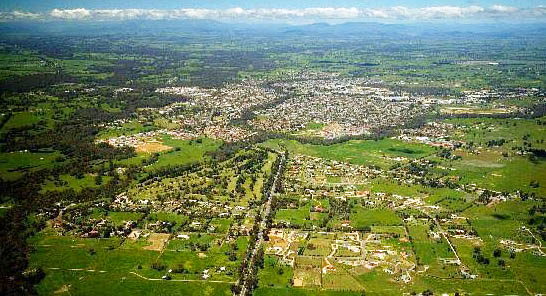
1994

Alan and Jan Robinson establish Jarobee Angus Stud on Robinson Road in Beechworth, initially sourcing female cattle from Willow Fields Stud at Rochester. The Robinson’s interest in genetics grows and eventually their use of embryo transfer and artificial insemination – coupled with sourcing semen – will lead to a highly valuable stud and respected farm business. With expertise in the field of genetics within the cattle industry, Greg White will join Jarobee Angus Stud (below) as farm manager in 2015.

1994 – Jul

Dr Edmund Bryant (‘EB’) Collins retires and sells his historic 1892 doctor’s residence and former surgery at 41 Camp Street – on the corner of Camp and Loch Streets – to Roger and Sue Thomas, who turn Beechworth’s long-serving medical practice into a private home.

| Dr ‘EB’ Collins established the small ‘Beechworth Surgery’ at 39 Camp Street in 1975, directly across the road from the long-serving medical practice and it has since been expanded and grown substantially (above). |
1994
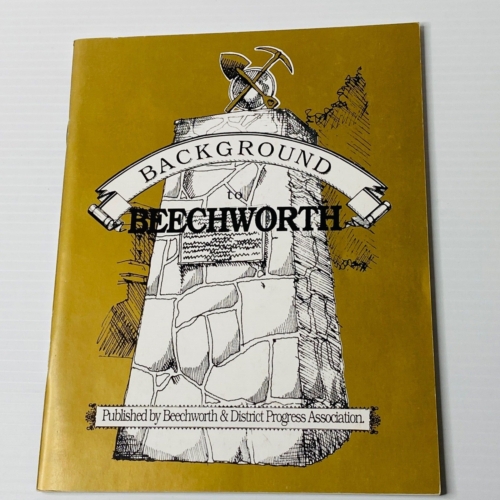
A new edition of the 68-page book ‘Background To Beechworth‘ is published by the Beechworth & District Progress Association printed by Wilkinson Printers of Albury. Compiled by Roy C. Harvey, it had originally been published as ‘Background to Beechworth 1852-1952’ in March 1952 as part of Beechworth’s centenary celebrations.

| This marks the seventh reprinting of the popular 1952 book, with previous editions being reprinted in 1964, 1970, 1978, 1981 and 1991. |
1994
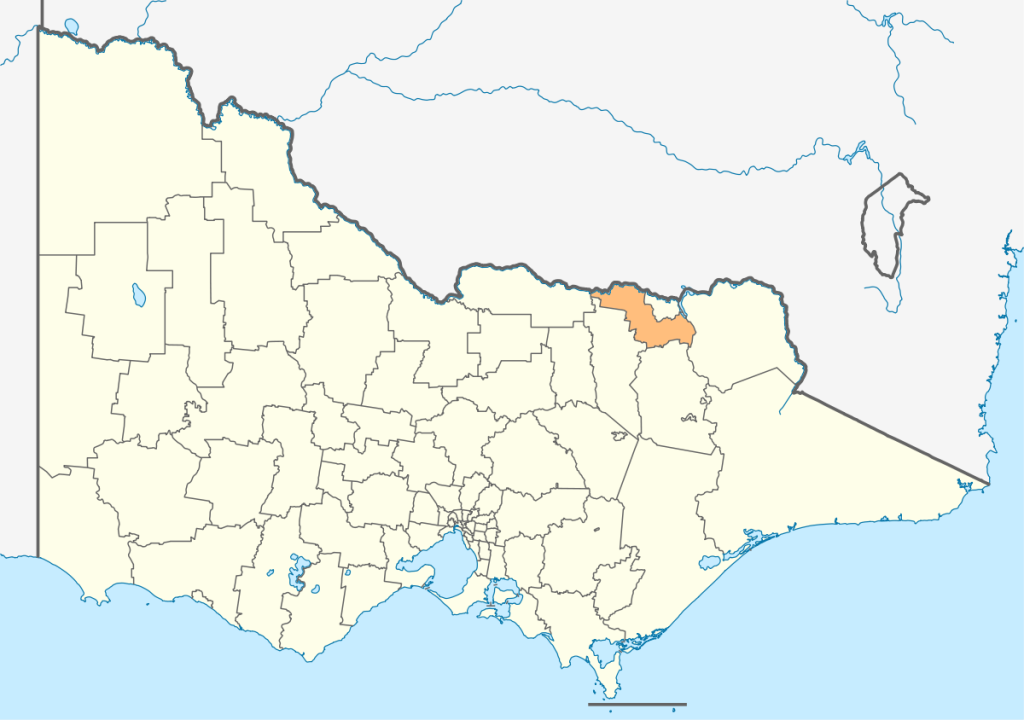
Following the amalgamation of the Shire of Rutherglen, Shire of Chiltern, Shire of Yackandandah and the United Shire of Beechworth, the new Shire of Indigo is created as an official local government area. Covering an area of 2,040 square kilometres and taking in a population of around 17,000 people, it includes the towns of Beechworth, Chiltern, Rutherglen and Yackandandah.
| Also referred to as ‘Municipalities’, there are now 79 Victorian ‘Local Government Areas’ – 34 classified as ‘Cities’, 38 as ‘Shires’, 6 as ‘Rural Cities’ and 1 as a ‘Borough’. |
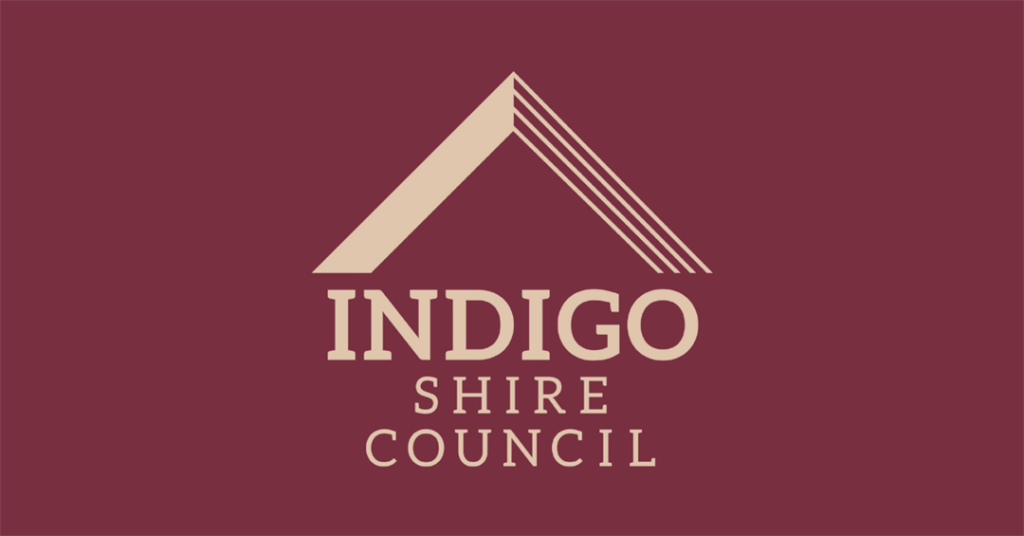
1994 – Nov 7
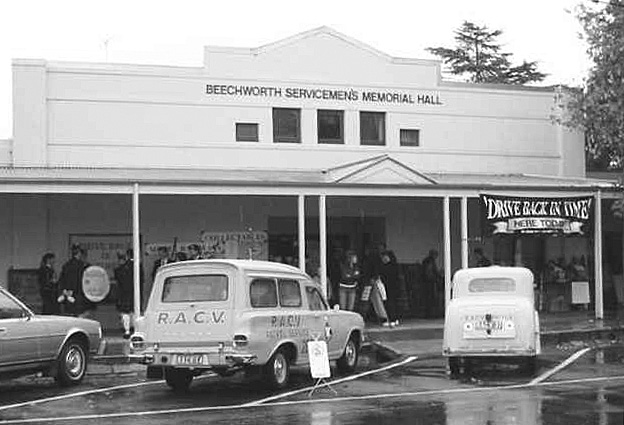
The Beechworth Servicemen’s Memorial Hall re-opens after extensive renovations. The work, carried out by Turner Ginnivan, a Melbourne-based architectural firm, includes the erection of a new wing to house the Shire Offices and the complete re-modelling of the Ford Street frontage.
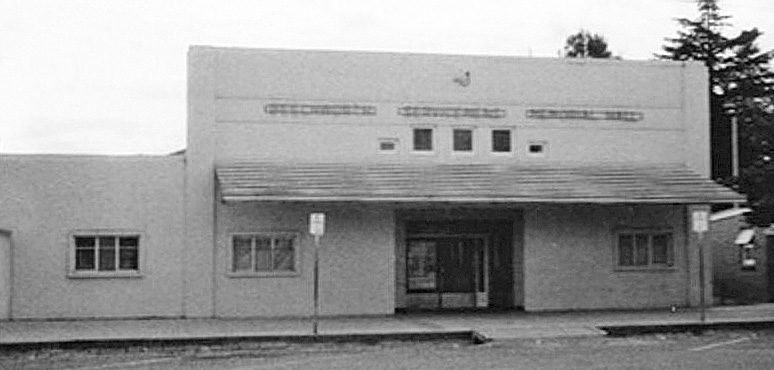
1995 – Jan 1

After 145 continuous years, the Stanley New Year’s Day Sports holds its final event at the Stanley Recreation Reserve.
1995 – Feb 15

Ronald ‘Ron’ Adolph Rosen, popular Beechworth barber and tobacconist, dies at the age of 75. For many years he ran his business on Ford Street, next door to the Star Hotel (above and below) and lived at 34 Finch Street.

1995
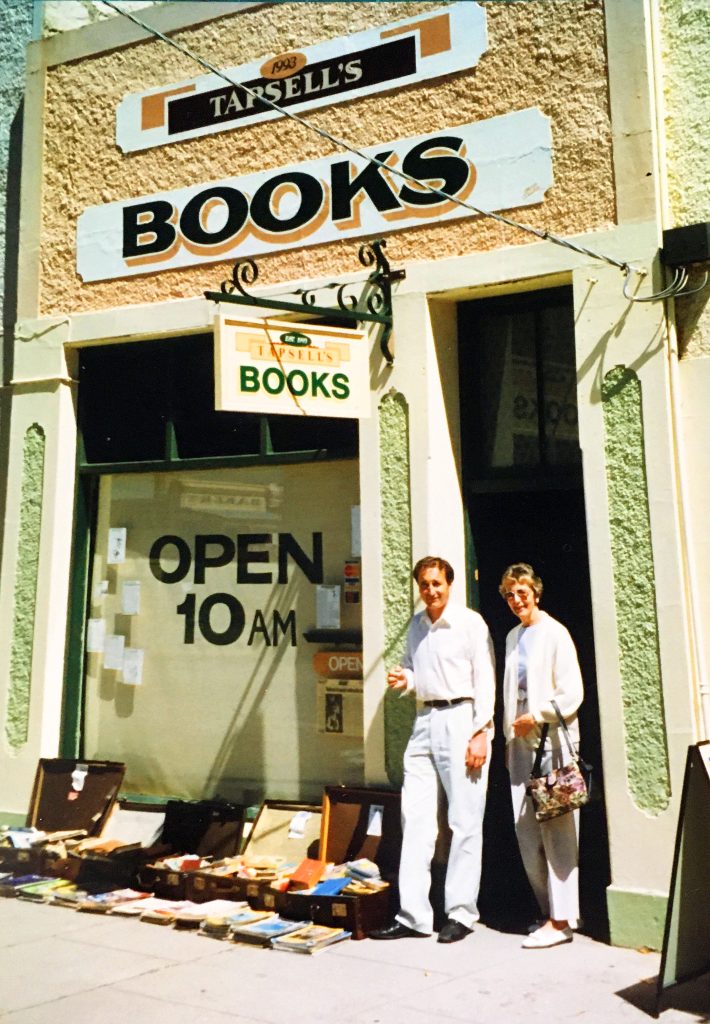
Stephen Tapsell moves his vast second-hand book collection from his Book Shed in Williams Street to his new store – Tapsell’s Books – at 91 Ford Street, formerly the booking office of the old Parkinson’s Garage next door. Stephen’s book shop specialises in Australiana, including books on the local goldrush and bushrangers, particularly Ned Kelly.
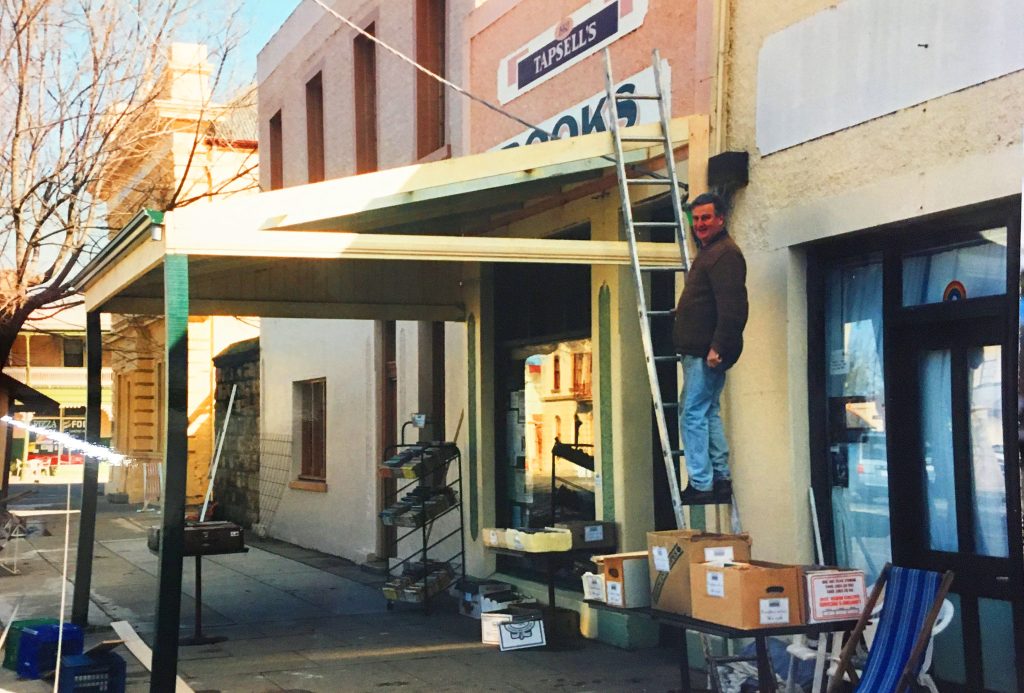
1995

Dr. Andrew Colson purchases The Ovens and Kiewa Animal Health Centre at 6a Camp Street. The practice also has a veterinary clinic in Myrtleford. Dr. Colson – who graduated from the University of Melbourne in 1984 – will look after Beechworth’s pets and animals for many years before selling the Beechworth practice to Dr. Helen Robinson in 2011.
1995
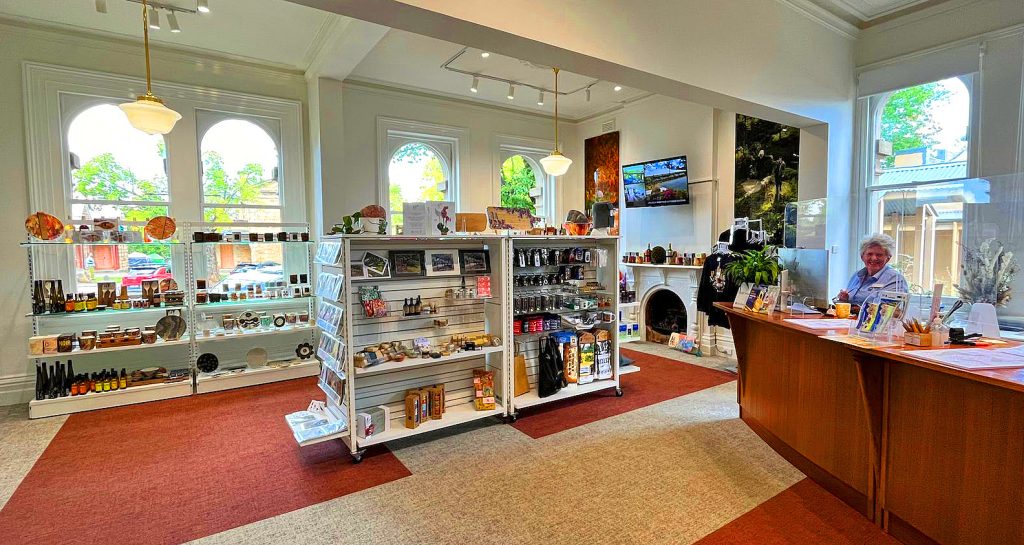
The Beechworth Visitor Information Centre is established within the Shire Town Hall with Anne Wilson as one of the first volunteers to run the centre – booking accommodation, selling festival tickets, managing tourism information, sending out information packs, maintaining records and statistics, selling souvenirs, updating the newly established website, training new volunteers and dealing with telephone enquiries. Between 1995 and 2010 the number of visitors to the centre increases from about 15,000 to over 100,000!
1995

After establishing The Finer Things of Life shop at 16 Camp Street in 1990, Steven and Elizabeth Mason now open a second store, House in the Country, at 12 Camp Street. The two shops trade in tandem, with The Finer Things of Life specialising in antique items with a ‘vintage Victorian’ theme, while House in the Country stocks more contemporary items for the home.


1995
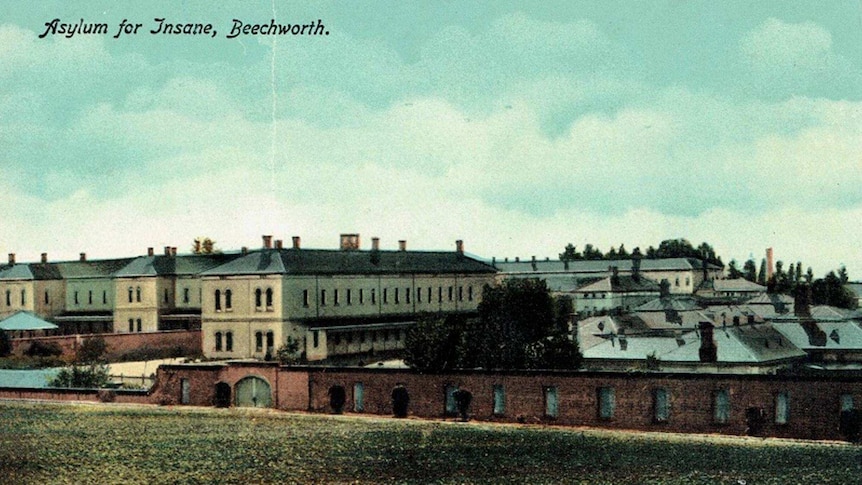
The vast Mayday Hills Hospital and Lunatic Asylum is finally decommissioned and closed after operating for 128 years and its psychiatric patient services moved to Beechworth Hospital. The large asylum is surrounded by almost 106 acres of farmland, making the hospital self-sufficient with its own piggery, orchards, kitchen gardens, fields, stables and barn. At the time of its closure the Asylum consists of two psycho-geriatric wards (‘Emerald’ and ‘Amethyst’), the Kerferd Acute Clinic, the poperty known as ‘Willow’, and external housing at Gilchrest Avenue and Mayday Court. The site is added to the Register of Historic Buildings.
| Since its establishment, the title of the institution at Beechworth has been altered several times to reflect both the community’s changing attitude towards mental illness and the Victorian Government’s approach to the treatment of mentally disturbed persons – Beechworth Asylum 1867-1905; Beechworth Hospital for the Insane 1905-1934; Beechworth Mental Hospital 1934-1967; Mayday Hills Mental Hospital 1967-1991; Mayday Hills Psychiatric Hospital 1978-1995. |
1995

Luigi ‘Gigi’ Cipolato establishes Gigi’s of Beechworth Bar and Bistro at 69 Ford Street.
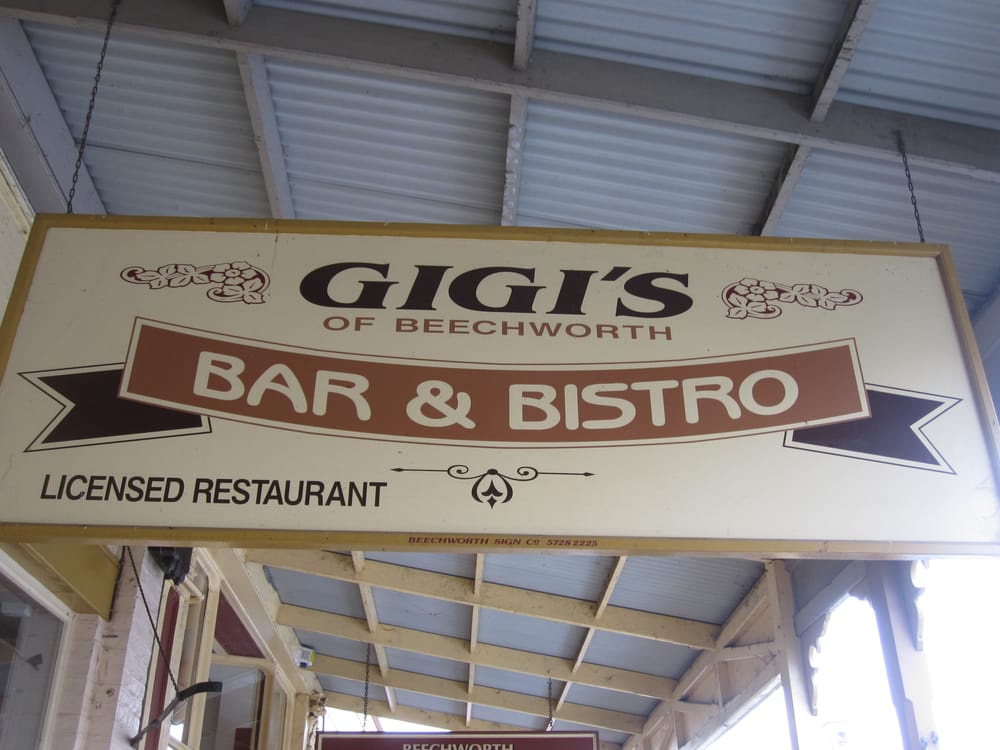
1995 – Oct

Beginning life in 1981 as the Beechworth Co-Op – a showcase for the creative work of artists and potters including Ric and Judy Pierce of One Tree Hill Pottery – their shop Beechworth Designer Gifts is established at 56 Ford Street in the middle shop of the three shops that made up the former Freeman’s Store. The Pierce’s have been potters for over 30 years and have exhibited the work in countries including Australia, France, India and the USA.

1995 – Nov
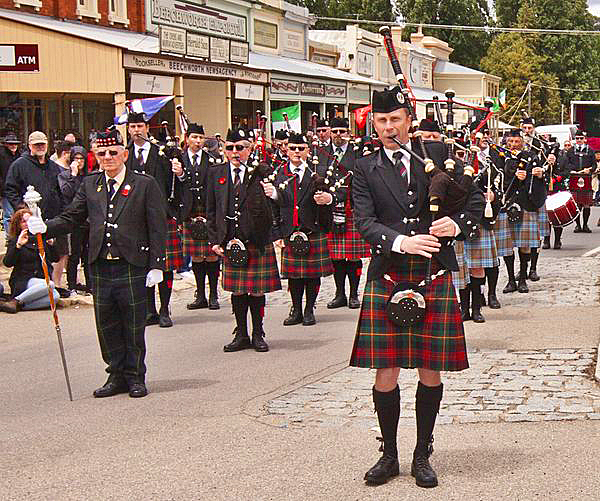
The inaugural Beechworth Celtic Festival is held. Conceived in the back of John Harvey’s Brigadier Scottish Shop at 14 Camp Street, it features Celtic music, pipe bands and Celtic dancing along with a food court and Celtic markets in the main streets of Beechworth. Over the years, the annual festival grows to include popular events like a Friday Night Celtic Concert, Celtic Themed Dinner (with an ‘Ode to the Haggis’) and the Sunday Night Tattoo featuring massed pipes and Celtic dancing in the courtyard of the Old Beechworth Gaol.

1996 – Jan 28
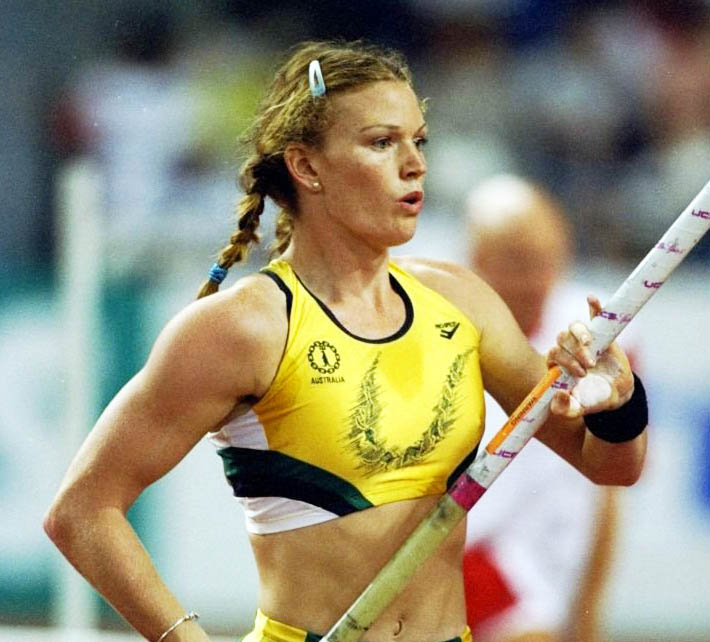
21-year-old Emma George from Beechworth breaks the world record for the women’s pole-vault by clearing 4.41 metres at Perth. Over her sporting career, George achieves a total of 17 world records, most famously setting a mark of 4.60 metres in Sydney in 1999, and a gold medal at the 1998 Commonwealth Games. During the 1990s alone she set twelve records in a row. Her achievements increased the popularity of the sport of pole-vaulting. George suffers a fall while training for the 1999 Seville Championships and underwent a number of operations on her back before finally announcing her retirement at the age of 29 in 2003.
| As a youngster, Emma George had been a trapeze artist with ‘The Flying Fruit Fly Circus’ (established by the ‘Murray River Performing Group’ in 1979) and competed in – and won – the 1996 season of the popular Australia television series ‘Gladiator’ in the ‘Individual Sports Athletes Challenge’ specials. |
1996

Wendy and Mark ‘Lazy Harry’ Stephens design build the magnificent Beechworth House at 24 Dingle Road. Set on over 2 acres of gardens with a rotunda, a large pond and an extensive rose garden, it overlooks the historic grounds of Mayday Hills. It operates as premier guest accommodation and features four separate guest rooms, all with private entrances. A few years later it will be sold to chef and wine connoisseur Allan Parker who runs the popular Gigi’s of Beechworth Bar and Bistro at 69 Ford Street.

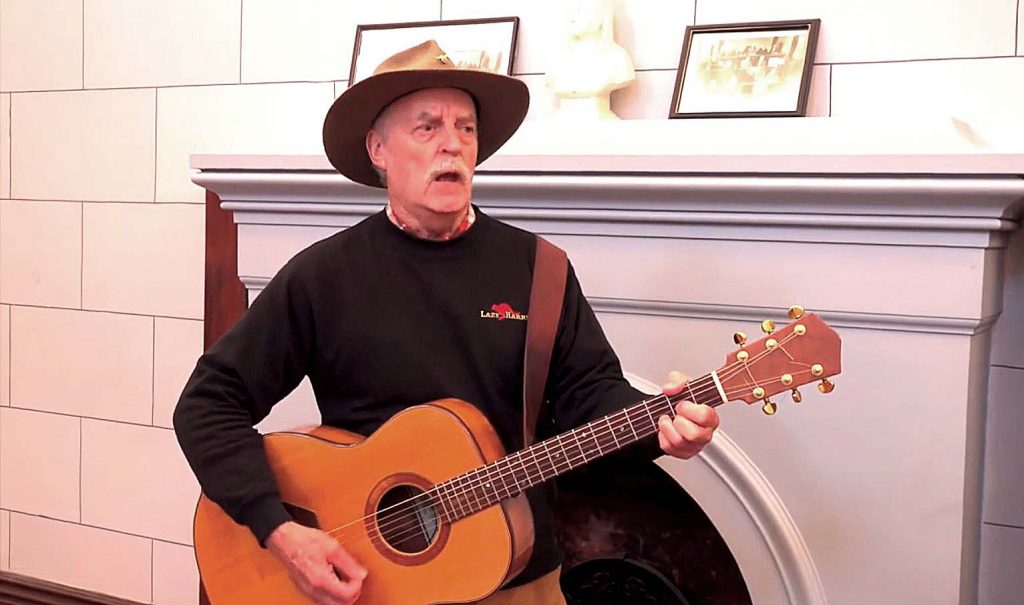
| Mark Stephens begins performing as popular singer and guitarist ‘Lazy Harry’ in 1981, launching his first album at Kate’s Cottage in Glenrowan and has since recorded over a dozen albums and toured all over the world. (The name comes from the traditional bush ballad “We Camped at Lazy Harry’s on the Road to Gundagai”). Wendy and Mark create the popular ‘Farmer’s Market’ – which becomes a Beechworth Saturday staple – in order to raise funds to restore the organ at Beechworth’s Christ Church. |
1996

La Trobe University purchases the Mayday Hills Hospital and Lunatic Asylum to use as its new Beechworth Campus. This includes over 100 hectares of land, heritage gardens and numerous buildings.
| The ‘La Trobe University Campus’ is closed in 2011 and sold. Now two hotels operate on the site – the ‘Grand Oaks Resort’ and the ‘Linaker Art Deco Hotel’ (formally the Mayday Hills Nurses Hostel). The ‘Mayday Hills Art Society’ and ‘Asylum Ghost Tours’ also operate on the site. |
1996

11km from Beechworth, additional Telecommunication Towers are added to the top of Mt. Stanley next to the original tower constructed in 1931 (below). On a clear day, the views from the Mt Stanley Tower can be spectacular, including Australia’s highest peak Mt. Kosciusko to the east, Mt. Macedon to the west, Mt. Buller and the Strathbogie Ranges to the south, and Victoria’s highest peak Mt. Bogong in the middle distance, flanked on the right by Mt. Buffalo with the picturesque Ovens Valley below.

1996 – Mar 12
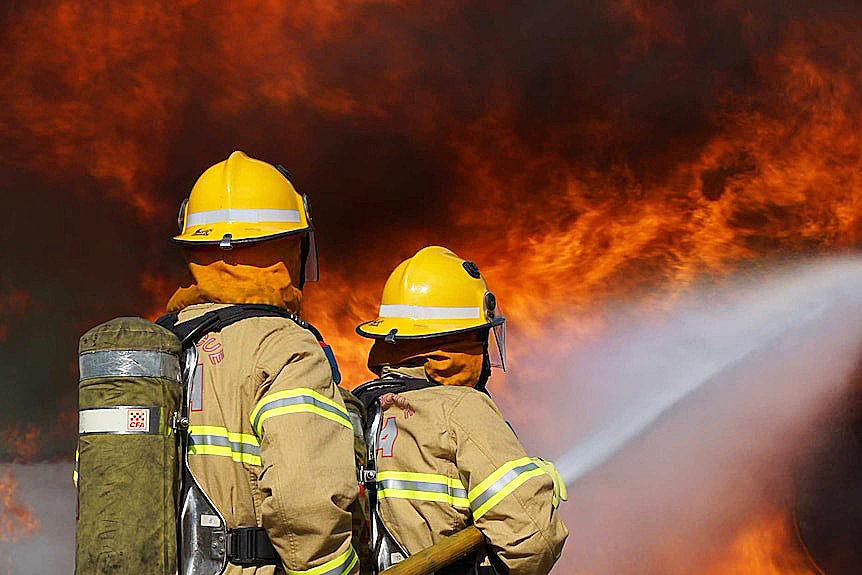
Fire! After celebrating 10 years of service, the Beechworth Neighbourhood Centre at the former Methodist Sunday School Hall building on the corner of Ford & Church Streets is gutted by fire in the early hours of the morning. Following a strong commitment from the community and the shire council to rebuild, the Historic Buildings Council agrees renovate the original Methodist Church next door. The Beechworth Neighbourhood Centre move into the renovated church building in 1997. Insurance money also allows for the renovation of the original Methodist Sunday School Hall building, thus providing both buildings for use by the community. Mother Goose Play Group and other community groups use the rebuilt former Sunday School Hall for the next few years until manager Judy Lazarus applies for funding to develop a social enterprise that is to become the Beechworth Community Bookstore in 2008.
1996
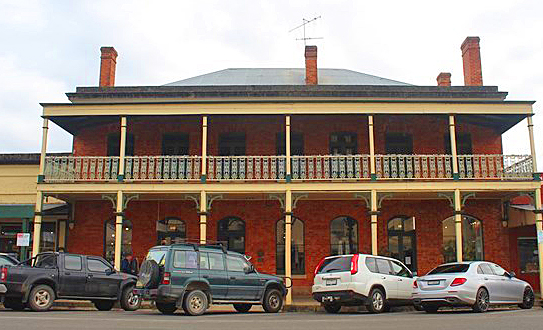
Keith and Dorothy Graham take over the lease of the former Star Hotel on Ford Street from Josef and Elizabth Kraus. The Grahams will continue to have two shops tenanted on the ground floor, while they convert the upstairs into a private residential rental area. They will own the building until 2002, when they sell it to Heidi Freeman.
1996

James McLaurin purchases 53 acres of the Golden Ball property from his father Paul McLaurin who had bought the land in 1981. Originally established by Isaac Phillips in 1857, the historic property sits at 1175 Beechworth-Wangaratta Road, Everton Upper. It now has 5 acres under vine and Golden Ball Wines produce Shiraz, Merlot and Cabernet Sauvignon, with a small portion set aside for Grenache and Malbec. All wines are entirely grown, vinified and bottled on the property. Since 2010 Golden Ball Wines have been producing their own electricity, through a five kW solar grid feed system.
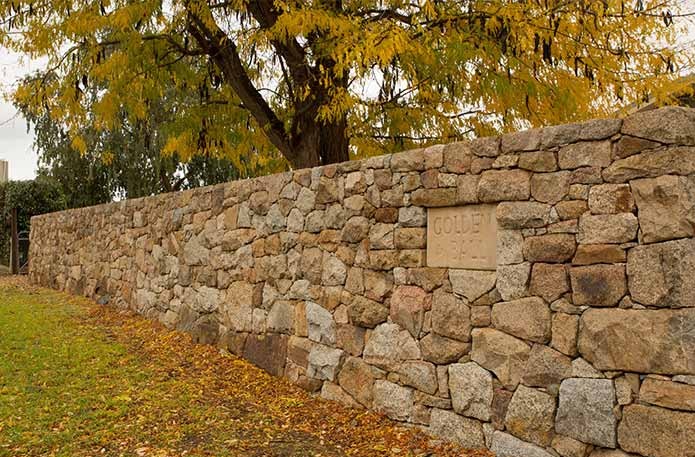
1996
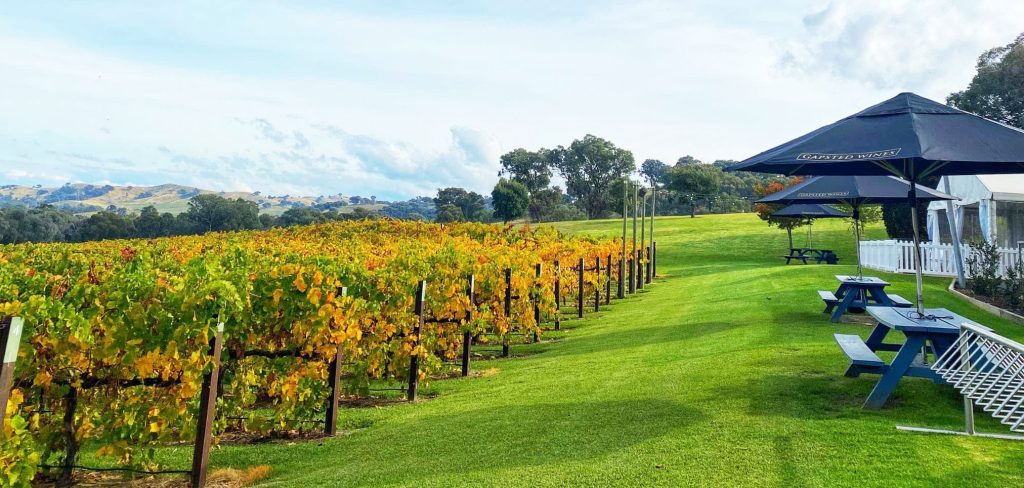
Gapsted Wines is established between Beechworth and Myrtleford. The winery is the outcome of six wine families seeing the potential of producing high quality cool climate wines from the Alpine and King Valleys. The families were influential in the region either as grape growers, winemakers or business owners and saw the benefits of overseeing the product quality from grapevine to bottle.
1996 – Jul 1

Peter and Fay Mim take over the small fruit and vegetable grocery store run by Alex Grec on the ground floor of the old Star Hotel. After five years, when Brian Voight’s Butcher Shop next door to the Star Hotel becomes available, Peter and Fay move into the larger premises at 61-63 Ford Street and establish the Goldfields Greengrocer, where it remains to this day, now run by the Mim’s daughter Kathleen Stackpole. Peter is known for his extensive vegetable garden which he uses to supply his loyal customers and also sells meat at the greengrocers on the weekends when the Arthur Stephenson’s Butcher Shop across the road is closed.

| Born in Yugoslavia in 1942 (during the Second World War), Peter Mim and his family migrated to Australia in 1953 and spent three months at the Bonegilla migrant Camp before moving to Beechworth. The Mim family were one of many European migrants who are welcomed and assisted by Beechworth’s Michael Freeman. After leaving St. Joseph’s School at the age of 13, Peter worked as a woodcutter at Stanley as a teenager, before finding work at the ‘Mayday Hills Mental Asylum’, working his way up from a kitchen hand to becoming the Asylum’s Catering Manager. He married Fay Borschman in 1965. After the closure of the ‘Mayday Hills Mental Asylum’ in 1994, Peter works at Rob Tully’s orchard before taking over the ‘Goldfields Greengrocer’ in mid-1996. He will pass away on May 6th 2016. |
1996 – Nov 29-Dec 1
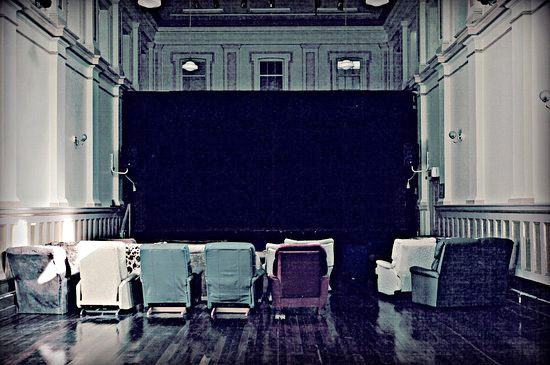
After becoming an incorporated association in 1984, then ceasing operations in 1991 due to dwindling interest, the Beechworth Theatre Company is revived. BTC’s first new production is Shaun Sutton’s of the Charles Dickens classic “A Christmas Carol”, performed to full houses at the Mayday Hills Bijou Theatre, directed by Amanda Darling.

1996
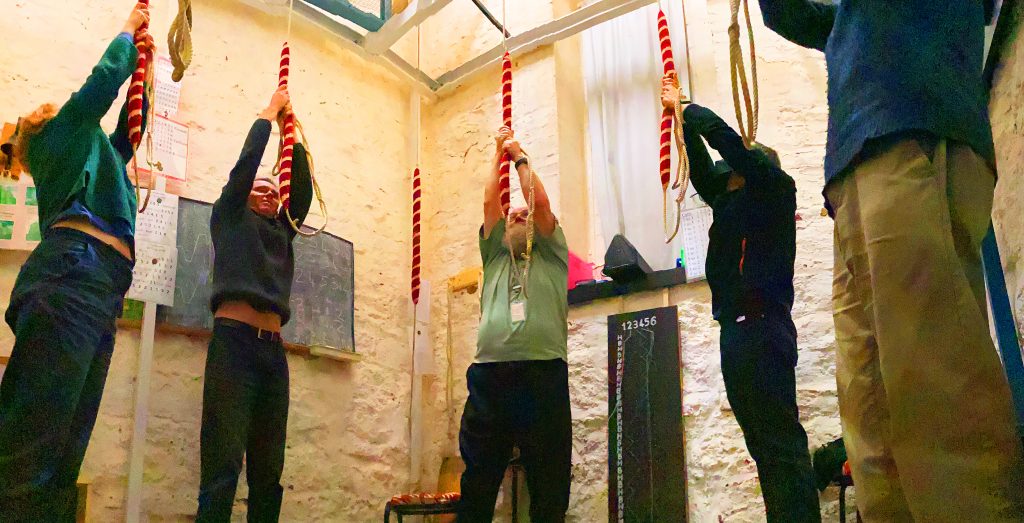
A ring of six bells is installed at the Christ Church, and Beechworth becomes the first country town in Victoria – and only the third in Australia – to have a ring of six bells. A dedicated team of Beechworth Bellringers still gather for practice sessions at the Christ Church Bell Tower every Monday evening (above and below).
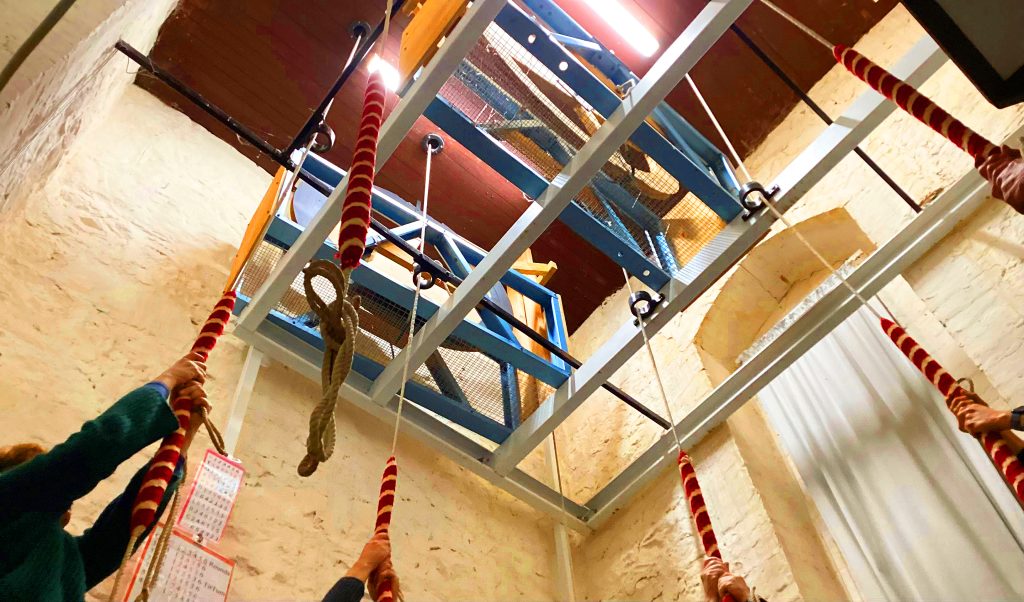
1997
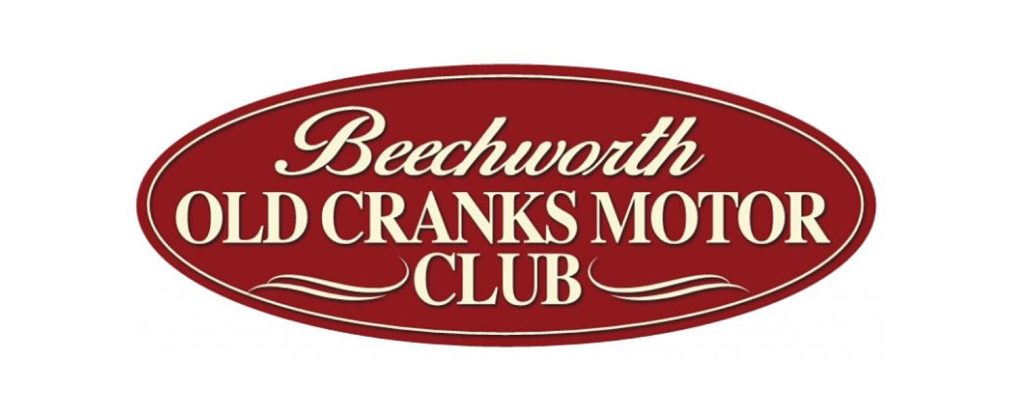
The Beechworth Old Cranks Motor Club Inc is established by a group of car and engine enthusiasts who enjoy sharing their passions and interests. Over the following years, the club will grow and grow and hold regular events in Beechworth, including the popular annual ‘Drive Back in Time’ event which begins in 1998.
1997

A new beach area, christened ‘Sandy Beach’, along with barbecue facilities and a children’s playground is established at the Lake Sambell Reserve.
| The playground, under shade sails (pictured below), features a spiral slide, climbing wall, platform with binoculars and fireman’s pole, walkway, crazy angled climber, hanging disks, rope climbing frame, monkey bars, balance beam, little wave slide, steps, clock, panels and a row of little shop fronts including Blacksmith, Bank, Sweet Shop and Bakery. It also includes a springer, stand-on spinner, see-saw, flying fox and four swings including one with a harness. |

1997

Owen and Judy Richards purchase the defunct ‘Trim’s Bakery’ at 12 Albert Road and begin to renovate the historic building and eventually convert it into the Albertines boutique guesthouse with a nod to French Provincial. The original building, also known as the ‘Ovens Bakery’ and simply as ‘The Old Bakery’, operated at 12 Albert Road for over 50 years. Today the business operates as Twelve on Albert luxury accommodation, with four private guest suites with ensuites, separated from a common lounge and entrance area. It features delightful gardens behind the old bakery (below).
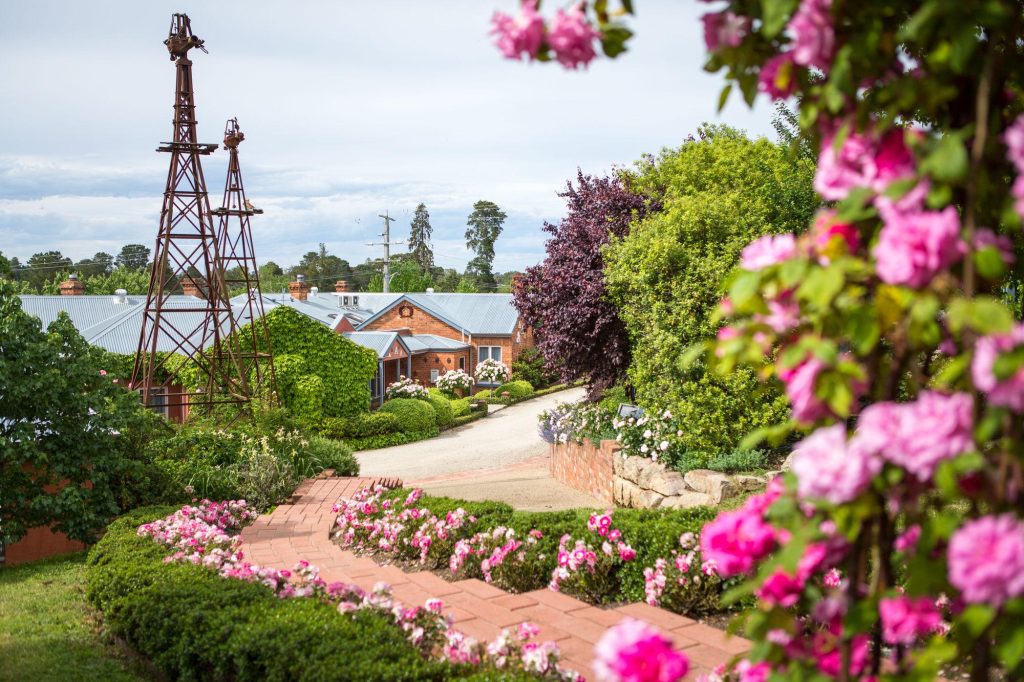
1997

Sue and Eric Thornton establish the Amulet Vineyard at 1,036 Beechworth-Wangaratta Road, Everton Upper. Later joined by their son Ben Clifton, they plant around 5 hectares of vines.
1997 – May 23-31
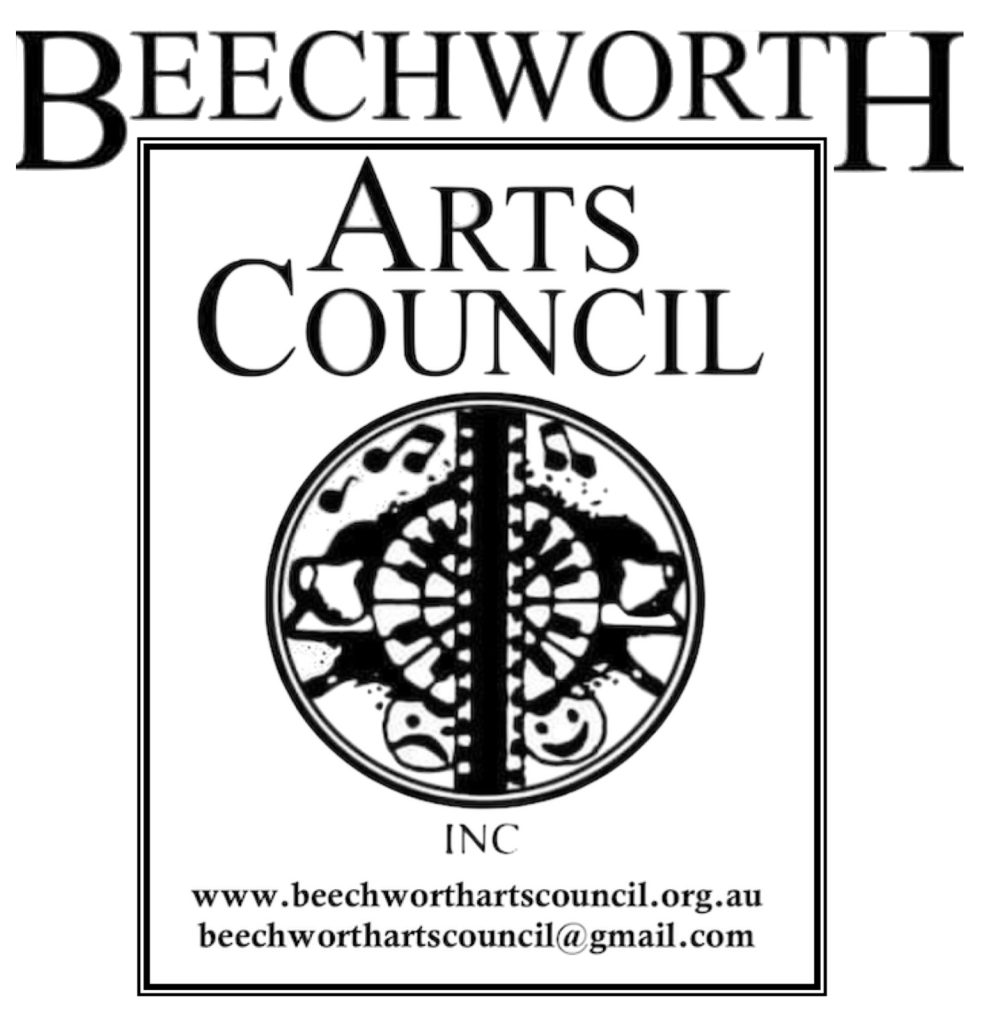
The Beechworth Theatre Company stages “The Four Faces Festival”. The production – directed by Amanda Darling – features the short plays “The Women of Troy”, “The Zero Sum Mind”, “I Never Saw Another Butterfly” and Tom Stoppard’s “The Fifteen Minute Hamlet”. The Beechworth Theatre Company is an affiliate of the Beechworth Arts Council, founded in the 1970s.
1997
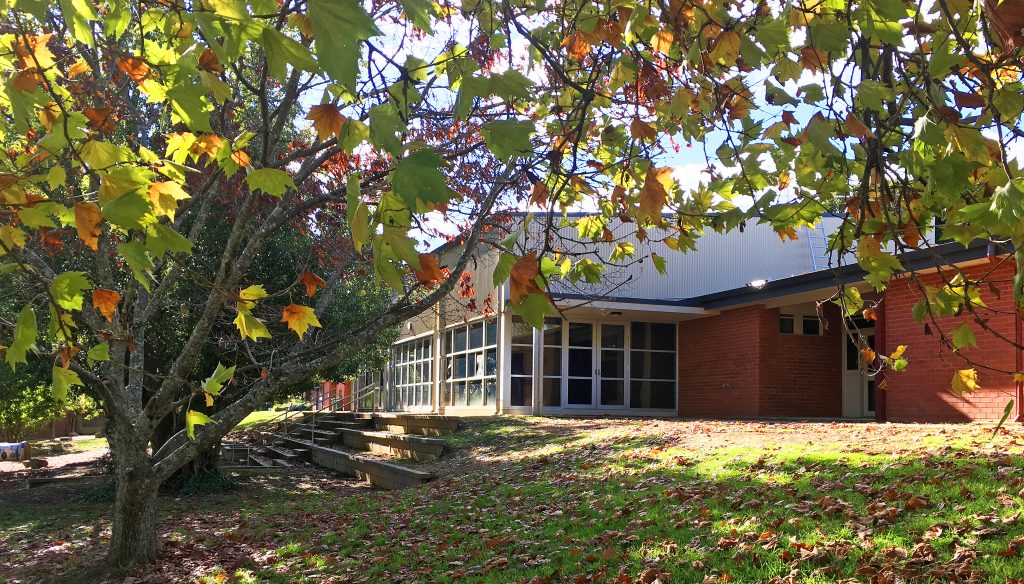
The Beechworth Montessori Children’s Group is established to provide a Montessori preschool program for three and four year old children.
| In 2007, the Montessori School opens a full a primary school for 6-12 year olds at 42 Gilchrist Avenue, enabling children to complete their early childhood and primary school learning within the Montessori educational philosophy. |
1997 – Oct 1
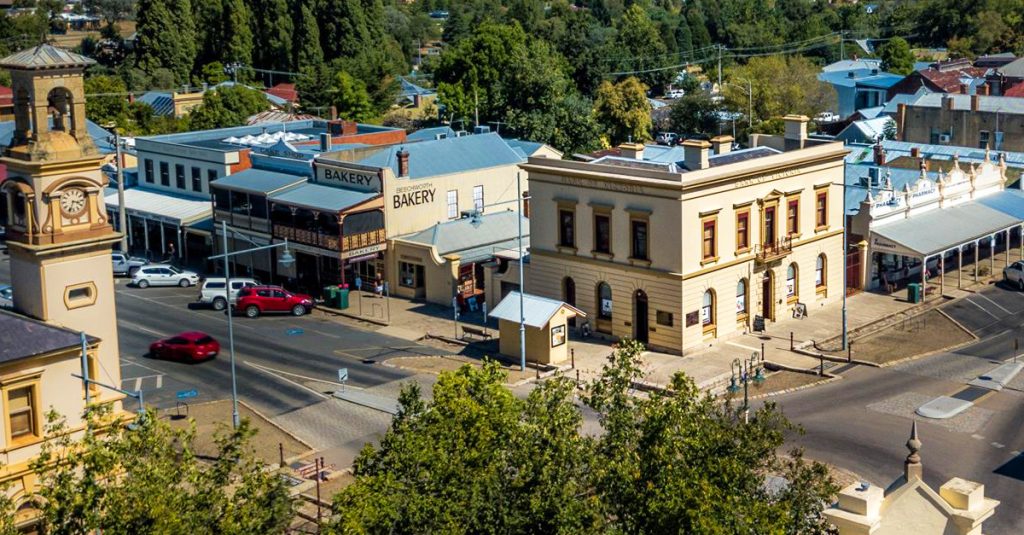
Pat and Graham Abbott take over the former Bank of Victoria building on the corner of Ford and Camp Streets – which has been operating as Herb and Joan Crossman’s Rock Cavern – and establish Beechworth Gold, a spectacular precious gems and jewellery store. Sitting right in the centre of town it has become one of Beechworth’s premier stores.
| Graham is a successful Perth property developer until he loses everything in the 1987 financial crisis. He gradually recovers, establishing a wholesale jewellery manufacturing business before buying a van and – calling himself ‘The Jewellery Man’ – travels across Australia selling gold and iron ore jewellery. When he arrives in Beechworth, he thinks it is one of the finest tourist towns in the country and decides it is the perfect place to set up a permanent headquarters for the family business. |
1997 – Oct 23
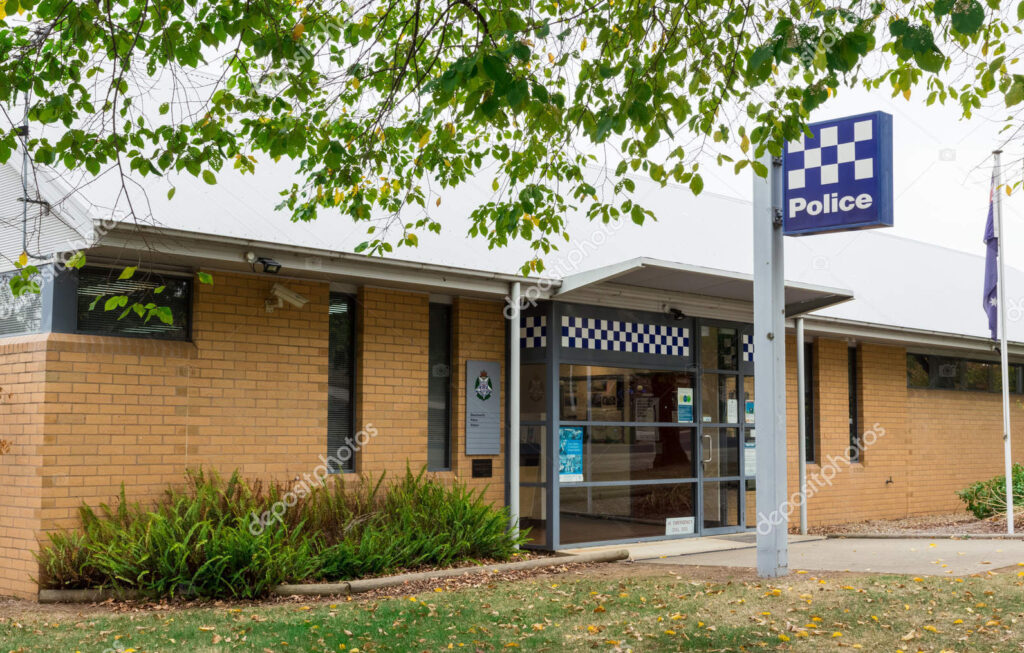
The new Beechworth Police Station, on the corner of High and Williams Streets, is officially opened by Bill McGrath, Minister for Police and Emergency Services.
1998

To celebrate Beechworth’s Chinese Heritage, the North East Branch of the Australia-China Friendship Society initiates a project to be known as the Beechworth Chinese Gardens. To be built on the corner of Albert Road and McConville Avenue, it will be designed using the principle of Feng Shui – living in harmony with the surrounds – as a place for people to sit, read and enjoy the surrounds.
1998 – May
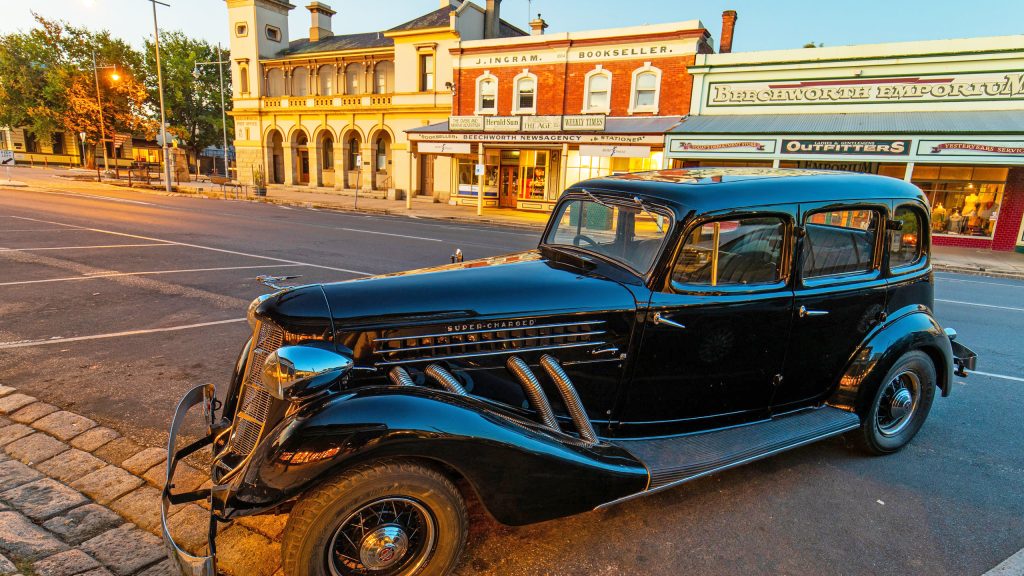
The first ‘Drive Back In Time’ event is held in Beechworth and will become an annual feature in town. Organised by the Beechworth Old Cranks Motor Club, the big weekend now attracts up to 250 car owners each year, with a range of vehicles that must be more than 25 years old. It features a drive around the streets of Beechworth – ‘The Saturday Cruise’ – and a ‘Show & Shine’ on Sunday, when a section of Ford Street is closed to traffic and hundreds come to view all the cars and engines gathered for show on the Police Paddocks (below) along with street food stalls and other attractions

1998 – May 7

Jeff Kennett, the Premier of Victoria, officially opens the “Wallace Park-Spring Creek Walking Track”.

1998 – Jul 2-5
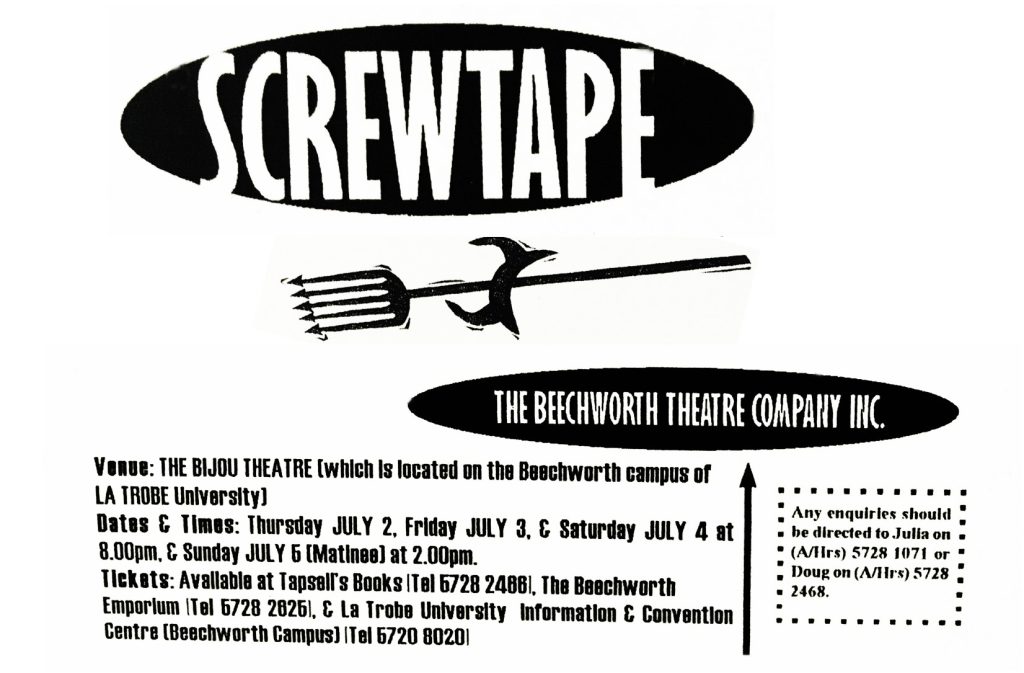
The Beechworth Theatre Company presents“Screwtape” a ‘devilish and diabolical comedy’ stage adaptation of the 1942 C.S. Lewis novel “The Screwtape Letters”. It is staged at the old Bijou Theatre, located within the former Mayday Hills Asylum, now the Beechworth campus of La Trobe University.

1998 – Oct

Dieter Bach establishes Gospel Antiques in the former Beechworth Congregational Church – erected in 1869 – at 40a Camp Street (on the north-western corner of Camp and Loch Streets).
| When the Congregational and Methodist Churches amalgamate in 1966, this church ceases being used for services. The now ‘united’ congregations of the Beechworth Congregational and Methodist churches agree to hold their services at St. Andrews Presbyterian Church (now Uniting Church) at 115 Ford Street, on the corner of Ford and Williams Streets. The Beechworth Shire Council purchases the two empty churches. |
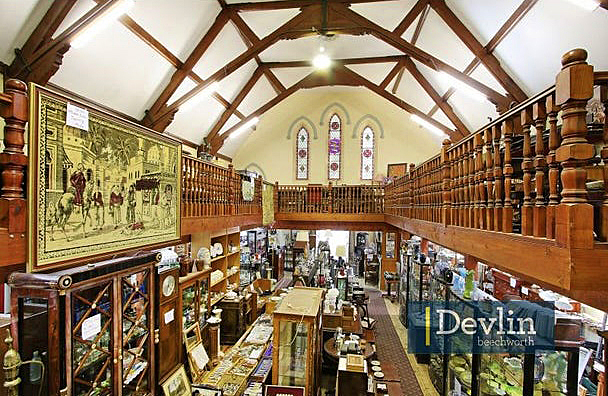
1999 – Jan

Kathryn Hammerton opens her eponymous shop at 59 Ford Street selling ‘ladies exclusive labels’. The attractive store is located on the ground floor of the Star Hotel building.
1999
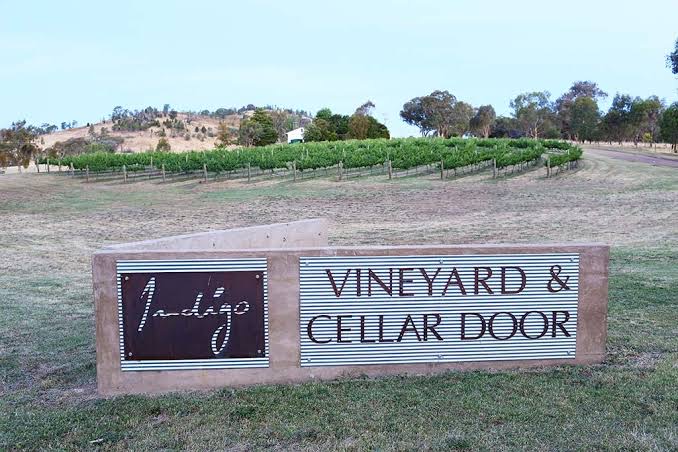
The Indigo Vineyard is established at 1221 Beechworth-Wangaratta Road, Everton Upper, 10 minutes from Beechworth.
1999
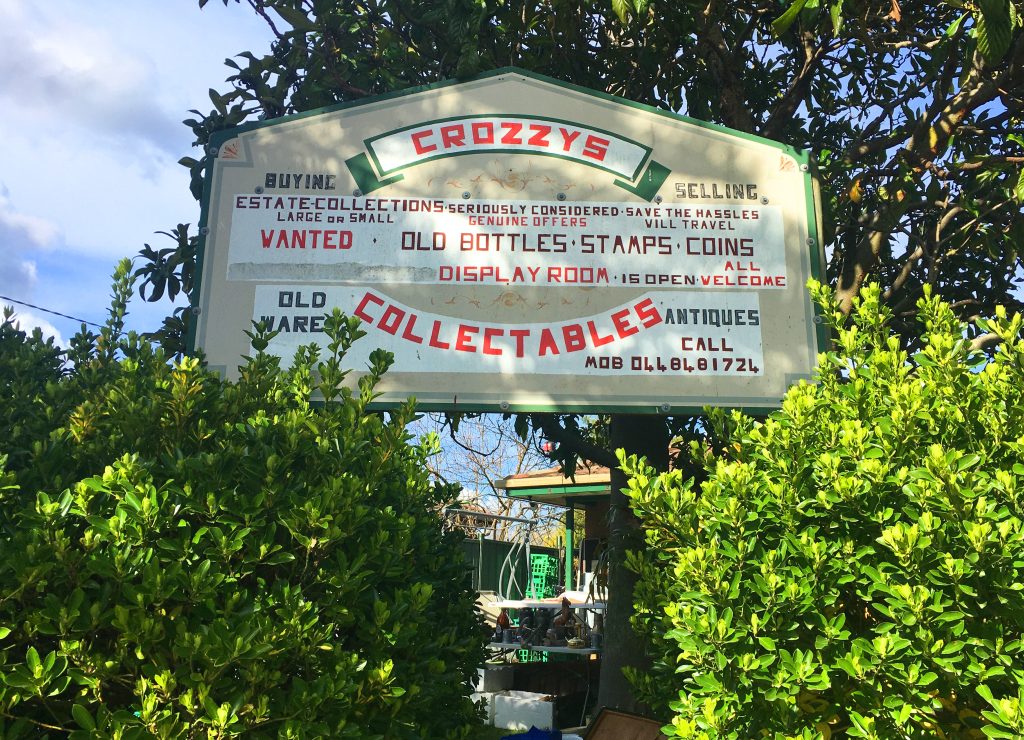
With a lifelong interest in collectables, Geoff ‘Crozzy’ Crossman opens the first of his Crozzys Collectables shops in Beechworth. The son of Herb and Joan Crossman – who established The Rock Cavern in the former Bank of Victoria building on the corner of Ford and Camp Streets in 1971 – Geoff specialises in coins, stamps and old glass bottles. His first shop is at the rear of Tanswell’s Commercial Hotel, then at other locations including the former Regent Theatre at 15 Loch Street and the old McKenzie Family Store on Bridge Road. In 2010 he moves operations to his home at 4 Ford Street where he continues to operate, as well as travelling to regular markets and collectables gatherings.
1999
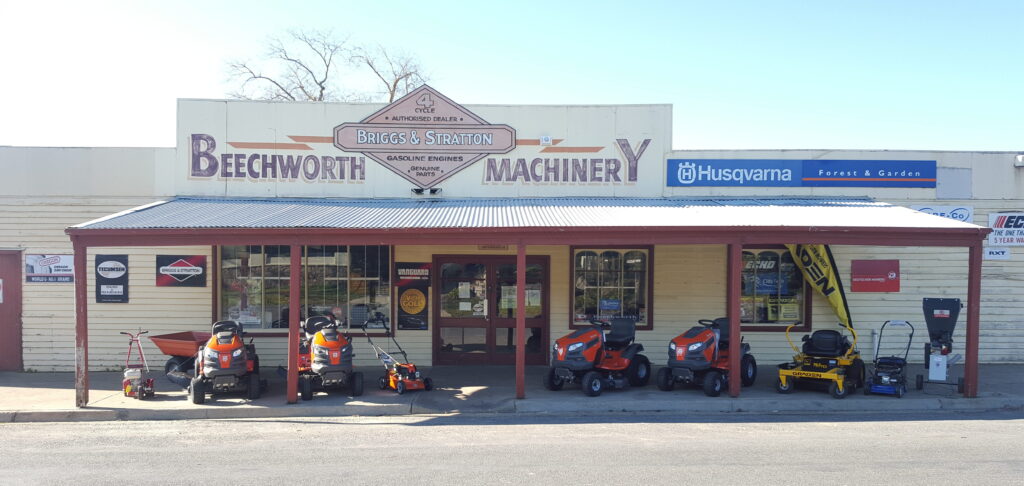
George Fendyk sells his Beechworth Machinery shop at 30 High Street to Mick and Sharon Stribley who, along with their son Luke, continue to run the popular business. The building had begun life as Ladson’s Cash Grocery Store in May 1882 (below).
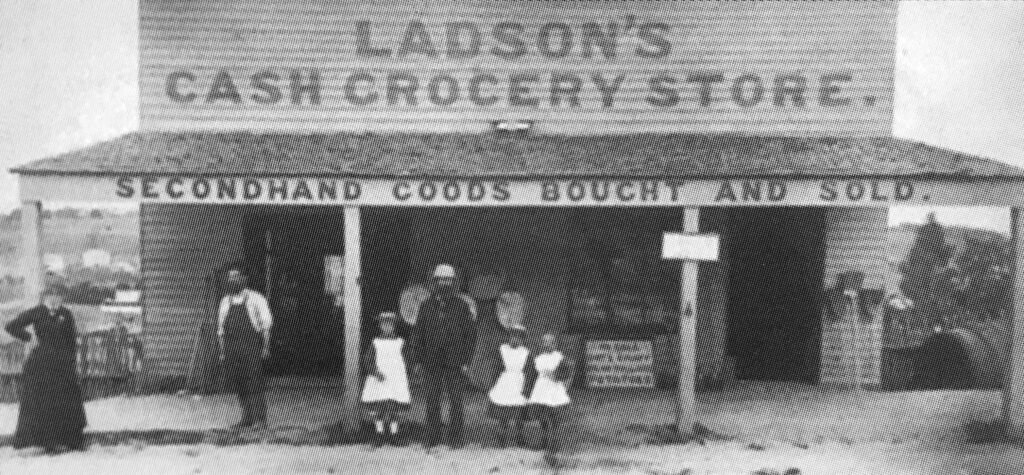
1999 – Mar 8
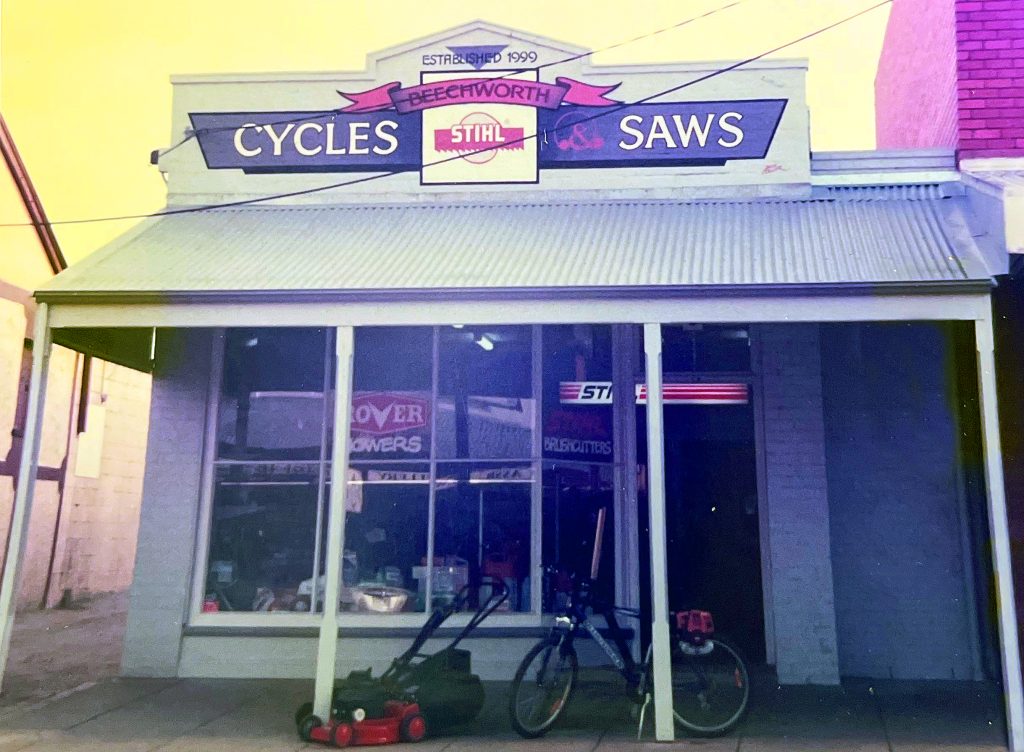
Wayne and Kaye Richardson open their Beechworth Cycles and Saws business at 17 Camp Street where they become the local agent for Stihl Chainsaws. They continue the tradition of selling bicycles and bicycle parts at the shop, started by Leonard and Nancy Collier in 1973 with their Seagull Cycle Works. The Richardson’s will retire and close the shop in August 2020.

1999
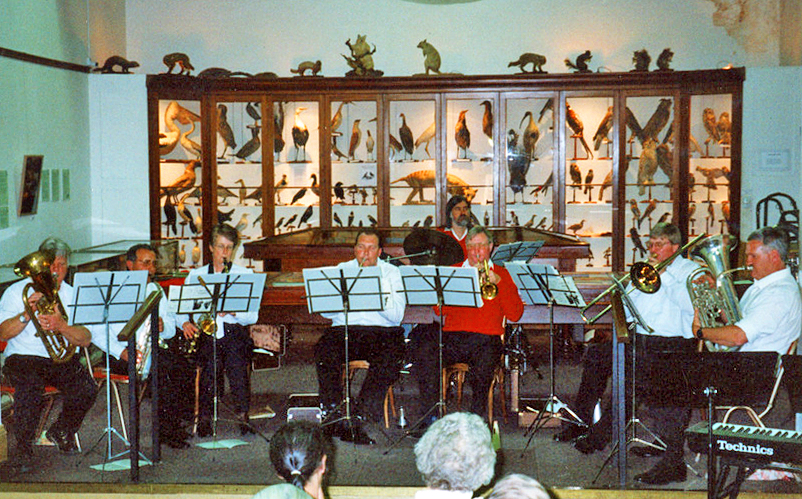
The Burke Museum stages an exhibition titled ‘From the Liedertafel to the Skating Rink: Entertainment in Beechworth 1852 – early 1900s’ which celebrates the rich and diverse entertainments that were a part of Beechworth life in the 19th and early 20th centuries. In conjunction with exhibition, the Beechworth Brass Band stage a ‘Liedertafel’ concert in the main hall at the museum.
| The exhibition highlights the various entertainments and attractions in Beechworth at the time, which included marching bands, choirs, circus acts, theatrical performances, races, and seasonal activities, including ‘Mr. Spiller’s Roller-Skating Rink’, established at St. George’s Hall in 1869 by 27-year-old champion roller-skater Adolphus Frederick Spiller. ‘Liedertafel’ is a tradition thataccompanied German settlers to Australia. It refers to a friendly society of men united by an enthusiasm for singing. The ‘Beechworth Brass Band’ was formed by Henry Vandenberg in 1887 while the ‘Beechworth Liedertafel’ was established 14 March 1894 at the ‘London Tavern’ in Camp Street by Alfred Arthur Billson, and a visiting conductor, Mr. H. Fielder. |
1999
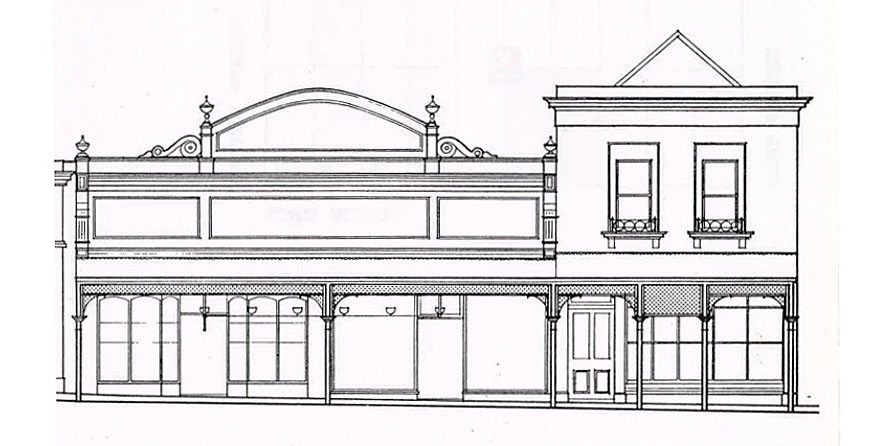
Peter Rue purchases the Beechworth Laundromatt at 55 Ford Street from Anthony McNeil. Rue will continue to run the popular and successful business for the next 25 years, finally selling the building and the business in February 2024.
1999

Seamus Foley sells his popular Beechworth Ice Creamery shop on the corner of Camp and High Streets to Torbin and Kamma (surname?) who continue to run, and grow, the business. As well as its home made gelato and ice-cream (including the famous ‘Magic Mallow’ topping), the shop is also known for its range of baked potatoes, hot dogs, jaffles, focaccias and sandwiches.
1999 – Oct 22

The new Beechworth Library is officially opened. Named in honour of Keith Henderson Zwar, it stands at 2 Albert Road, on the corner of Albert Road and Harper Avenue in a brick building originally constructed and operated as the Beechworth Kindgergarten.
| In 2015 the Beechworth Library will move into the former Council Offices at the rear of the Memorial Hall. In 2022 the building will become the new home of the Beechworth Veterinary Hospital, operated by ‘Indigo Veterinary Services’. |
THE STORY CONTINUES IN THE 2000-2019 TIMELINE